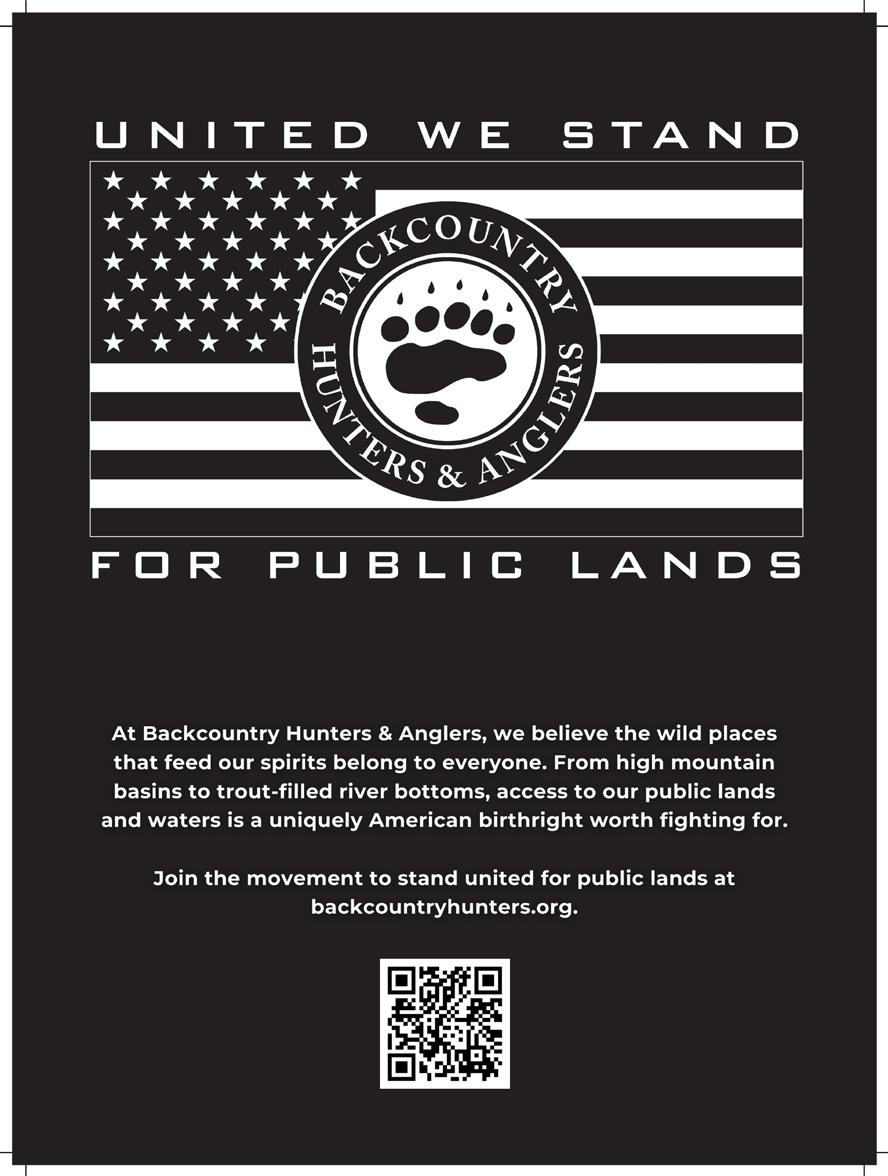BACKCOUNTRY JOURNAL
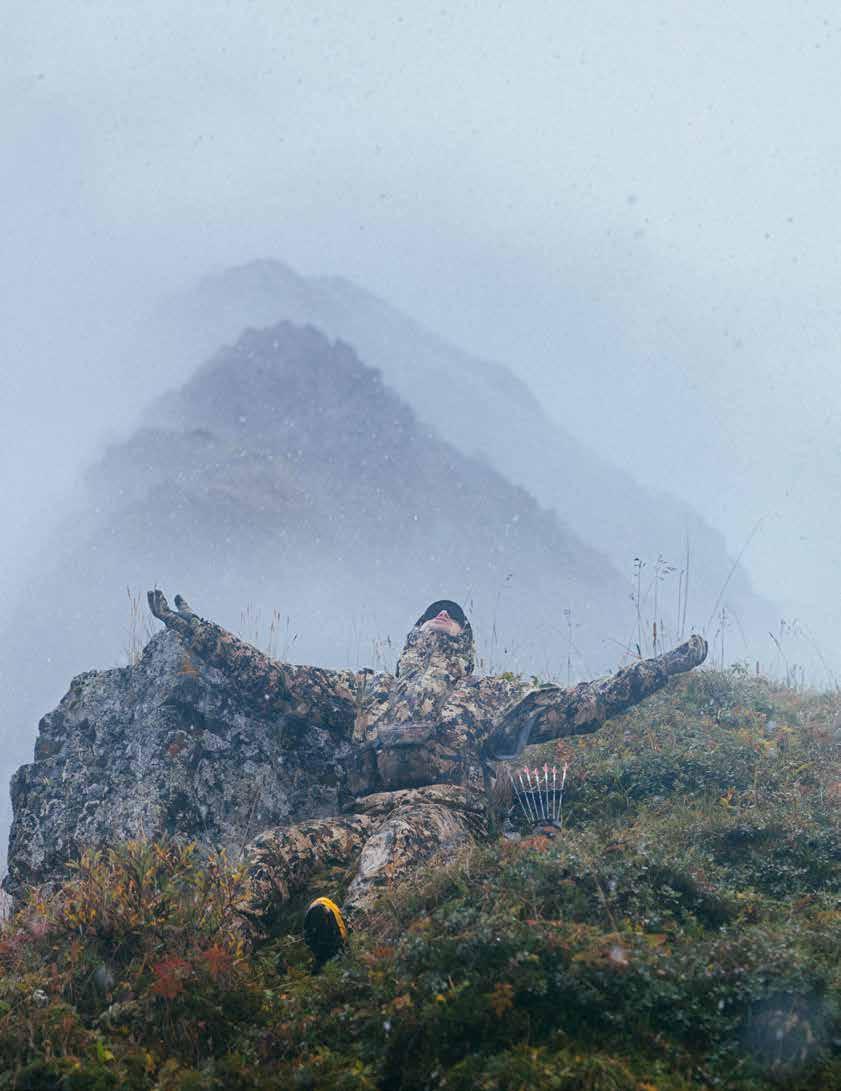
The Magazine of Backcountry Hunters & Anglers Summer 2025



The Magazine of Backcountry Hunters & Anglers Summer 2025

“Far better it is to dare mighty things, to win glorious triumphs, even though checkered by failure, than to take rank with those poor spirits who neither enjoy much nor suffer much, because they live in the gray twilight that knows neither victory nor defeat.”
When Theodore Roosevelt spoke those words, he wasn’t just giving a pep talk. He was laying down a challenge to future generations of Americans: to live boldly, to act decisively, and to fight for the ideals that define our national character. For those of us who hunt, fish, and find purpose in wild places, there may be no mightier principle than defending America’s public lands.
Our public lands are the foundation of our history and culture and essential to the American ideal. They’re where we learn resilience, humility, and personal renewal in the high country. They’re where we teach patience—in a duck blind or trout stream—to the next generation of conservation leaders. They’re where we fail, try again, and sometimes, gloriously, succeed.
But those lands—640 million acres of national forests, wildlife refuges, BLM parcels, and more—are under attack in ways that demand we live up to Roosevelt’s charge and BHA’s promise to defend our public lands legacy against seemingly insurmountable odds.
In the dead of an early May night, a provision that would open the door to the sale of nearly half a million acres of public land in Nevada and Utah was quietly slipped into the House Budget Reconciliation Bill. Contrary to the gaslighting effort by elected leaders willing to sell us out, this wasn’t about improved management, affordable housing, or fiscal responsibility. It was calculated to privatize our national legacy, converting public treasure into private gain, and turning a birthright into a balance sheet.
When the bill, along with language to sell off public lands, was reported by the House Natural Resources Committee on May 6, 2025, the BHA community, as it always does, mobilized without a moment of hesitation. We activated the BHA network of grassroots warriors, launched a campaign under the banner of United We Stand for Public Lands, and mobilized tens of thousands of passionate public lands advocates across the country. Volunteers flooded congressional offices with calls, emails, and messages demanding elected officials reject the language to sell our public lands. The response was overwhelming, building momentum to become BHA’s third-most responsive call to action a matter of days. Our voices were heard, and the House measure was ultimately defeated.
But that was just the beginning. In June, the Senate’s version of the budget reconciliation bill was released, proposing the sale of more than 3 million acres across the West. The battle for our public lands had become a full-blown war. Many of our peer organizations joined the cause, and BHA members once again heeded the call. At Rendezvous, the energy was palpable. We were there to celebrate wild public lands and waters—but while we celebrated, we also united. This was our time to rise. By late June, when this magazine issue was finalized, our action alert was nearing 100,000 actions.
Let’s be clear: public lands are not a partisan issue. They are an American one, rooted in the very principals of democracy, where it’s all equal ground—on trailheads and mountain peaks, in trout
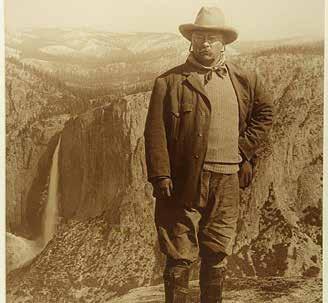
streams and grasslands, and in the campfires that invite us to share in the backcountry experience.
And yet, too many of our elected leaders ignore the overwhelming passion for public lands voiced by the vast majority of Americans, hoping no one is watching as they cave to private interests. Whether it’s Utah’s lawsuit to undermine the very foundation of federal land management, the erosion of bedrock conservation policy, or this latest maneuver in the budget bill, the message is clear: Public lands are nothing more than assets on a balance sheet, not opportunities to be cherished.
Backcountry Hunters & Anglers rejects that cynical and selfserving vision, and we refuse to sit back and hope someone else will do the work. We are resolved to defend our public lands legacy because we know what’s at stake: access and opportunity, wildlife habitat and clean water, rural economies and sustainable jobs, and a uniquely American form of freedom. The freedom to roam. The freedom to belong. The freedom to pass on these experiences to our kids.
At BHA, we have clarity of purpose. We call our lawmakers. We show up to commission meetings. We organize pint nights, plant trees, pull fences, and clean up trash. We mentor new hunters. We share meals of a wild-game harvests and celebrate stories of wildland moments. And we fight.
We fight because we know that once a piece of public land is gone, it’s gone for good. And we fight because the stakes have never been higher.
Roosevelt didn’t shy from controversy or conflict. He understood that conservation was hard, messy work—but necessary, nonetheless. He understood that daring mighty things means sometimes taking shots from those who stand on the sidelines. But it also means we stand a chance at winning glorious triumphs.
We can choose to live boldly. To act decisively. To speak truth to power. We can dare mighty things.
Because if we don’t, who will?
Let your voice be heard. Take action at backcountryhunters.org and join us in defending what makes this country great.
United We Stand for Public Lands.
-Patrick Berry, President & CEO

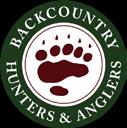
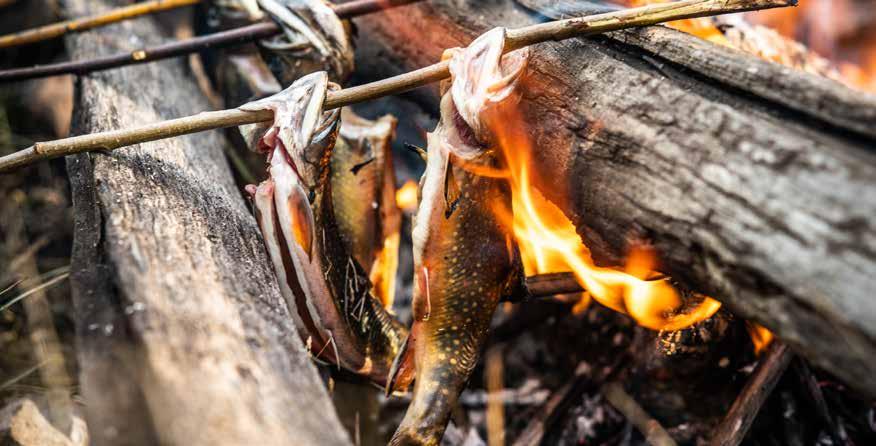
“Do eat food that is honorably harvested, and celebrate every mouthful.”
~ Robin Wall Kimmerer, Braiding Sweetgrass
Ryan Callaghan (Montana) Chairman
Dr. Christopher L. Jenkins (Georgia) Vice Chair
Jeffrey Jones (Alabama) Treasurer
Katie Morrison (Alberta) Secretary
Ed Anderson (Idaho)
Patrick Berry, President & CEO
James Brandenburg (Arkansas)
Bill Hanlon (British Columbia)
Jim Harrington (Michigan)
Hilary Hutcheson (Montana)
Ray Penny (Oklahoma)
Nadia Marji, Vice President of Marketing and Communications
Frankie McBurney Olson, Vice President of Operations
Katie DeLorenzo, Western Field Director
Britney Fregerio, Director of Finance
Chris Hennessey, Eastern Field Director
Kaden McArthur, Director of Policy and Government Relations
Dre Arman, Regional Stewardship and Habitat Connectivity Manager
Brian Bird, Chapter Coordinator
Chris Borgatti, Eastern Policy and Conservation Manager
Kylee Burleigh, Digital Media Lead
Tiffany Cimino, Membership and Community Development Manager
Trey Curtiss, Strategic Partnerships and Conservation Programs Manager
Bard Edrington V, Habitat Stewardship Coordinator
Contributors in this Issue
On the Cover: BHA Alaska chapter board member Paul A. Foward absorbs the inclement weather during a traditional bow sheep hunt. Photo by Colin Arisman, Grand Prize Winner of the 2024 Public Lands and Waters Photo Contest
Above Image: Fresh trout from a narrow stream. BHA Member Kyle Klain, 2024 Public Lands and Waters Photo Contest
Troy Basso, Thomas Baumeister, Charlie Booher, Zach Brady, Kevin Colburn, Frank DeSantis Jr., Micah Fields, Nolan Fregerio, Jim Gates, Jacob Greenslade, Robert Graham, Jim Harris, Brian Halchak, Ted Hansen, McKenna Hulslander, Ken Huxtable, Marcus Jacobson, Joshua Jackson, Chip Jawstrong, Chuck Kartak, JJ Laberge, Ben Long, Kaden McArthur, Dustin McKenna, Jeff Mishler, Marianne Nolley, Wendi Rank, Kelly Reynolds, Damia Siebenahler, Joseph Sigurdson, Sarah Snipes, Jonathan Wilkins, Mike Wintroath
Journal Submissions: williams@backcountryhunters.org
Advertising and Partnership Inquiries: mills@backcountryhunters.org
General Inquiries: admin@backcountryhunters.org
Don Rank (Pennsylvania)
Matt Shilling (Minnesota)
Peter Vandergrift (Montana)
J.R. Young (California)
Michael Beagle (Oregon) President Emeritus
Brady Fryberger, Office Manager
Mary Glaves, Chapter Coordinator
Makayla Golden, Habitat Stewardship Coordinator
Andrew Hahne, Habitat Stewardship Coordinator
Aaron Hebeisen, Chapter Coordinator
Jameson Hibbs, Chapter Coordinator
Bryan Jones, Armed Forces and Stewardship Programs Manager
Josh Mills, Corporate Conservation Partnerships Coordinator
Devin O’Dea, Western Policy and Conservation Manager
Brittany Parker, Chapter Coordinator
Max Siebert, Operations Coordinator
Joel Weltzien, Chapter Coordinator
Zack Williams, Editorial and Brand Manager, Backcountry Journal Editor
Intern: Maisie Kroon
P.O. Box 9257, Missoula, MT 59807 www.backcountryhunters.org admin@backcountryhunters.org (406) 926-1908
Backcountry Journal is the quarterly membership publication of Backcountry Hunters & Anglers, a North American conservation nonprofit 501(c)(3) with chapters in 48 states and the District of Columbia, two Canadian provinces and one Canadian territory. Become part of the voice for our wild public lands, waters and wildlife. Join us at backcountryhunters.org
All rights reserved. Content may not be reproduced in any manner without the consent of the publisher.
Published July 2025. Volume XX, Issue III




BY MARCUS JACOBSON
The birds’ songs break the stillness of the early morning as water laps the shoreline of our campsite. A hint of last night’s campfire still hangs in the air. As I take in the peaceful morning, I roll onto my side to see if anyone else in the tent is awake.
My 5-year-old son, Sawyer, is sleeping peacefully in his sleeping bag, his grandfather on his other side. I smile at the young boy, who was exhausted by the time we crawled into the tent the previous night after a day full of excitement for his first trip to the Boundary Waters Canoe Area Wilderness. My father lies on his back, eyes closed, his gray hair becoming visible in the newly developing morning light. This would be roughly his 65th trip to the Boundary Waters, having visited its wild country multiple times a year since his first church trip as a youngster. Since then, he has traveled the entire BWCA from west to east, paddling and portaging countless miles and experiencing nearly every wild animal encounter the ecosystem has to offer.
I was fortunate to have a dad who shared his passion for this wilderness with me at a young age. My first trip was at 3 years old, and I quickly developed a passion for the Boundary Waters that rivals his. Those early experiences, paddling alongside my father and absorbing his deep respect for the wilderness, developed my desire to conserve this special place. Witnessing the untouched beauty of the BWCA as a child instilled in me a lifelong responsibility to protect and advocate for it. Growing up exploring the BWCA, I have some of my fondest childhood memories there. It helped shape me as a person and taught me invaluable lessons that I carry into my personal life. To me, the BWCA isn’t just a place to escape the hustle
and bustle of the industrialized world; it is a spiritual connection and a reset. As Edward Abbey once said, “Wilderness is not a luxury but a necessity of the human spirit.” That couldn’t be truer for my spirit, and I dare say for everyone’s.
Sawyer awakens with as much enthusiasm as when he started the trip, ensuring we are awake and ready for another exciting day. A pearly fog, burned off by the morning sun, greets us as we exit the tent. After taking in the morning views, it doesn’t take long for Sawyer to express his hunger. We head back to the spot in the woods where we had found two large pine trees and showed Sawyer how to suspend a line across them to hang our food pack the night before. As I start on breakfast, Sawyer explores our campsite and claims an old stump next to the fire grate as his breakfast table. We all agree that you couldn’t find a better spot for breakfast.
With a 5-year-old, every camping activity is a learning experience full of questions. Tasks take longer, but both my dad and I know that is exactly why we are here. Each moment presents an opportunity for Sawyer to engage with the wilderness, fostering curiosity and independence. Whether it’s learning to tie a secure knot, understanding how to balance a canoe, or simply observing the way a turtle moves across the rocks, these moments lay the foundation for a lifelong connection with nature. Our agenda is simple: to spend time with Sawyer and foster his interest in the outdoors. We spend the rest of the day making “pinecone soup”—a concoction of pinecones, rocks, pine needles, sticks, and various other items Sawyer finds around camp—as well as swimming, watching a garter snake sunning itself in our camp, and fishing in the evening. The night ends with Sawyer feeding a crackling campfire as we watch the sun set behind the trees of the western sky.

By conserving this wilderness, we can show that the human race is capable of learning—and growth—by placing pristine wild country and a perpetual outdoor economy over permanent environmental destruction and temporary financial gain.
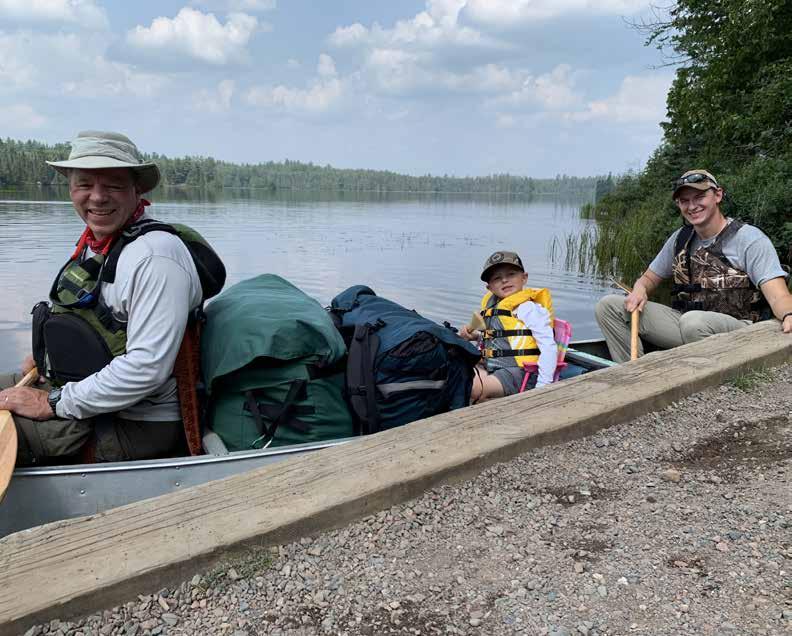
As the campfire glow lights the faces of my dad and my son, I am filled with gratitude for those who came before me and saw the importance of protecting this wilderness, ensuring that it remains intact. That foresight has allowed me to share this wild and untouched landscape with my father and now with my own son.
The BWCA, located in the Superior National Forest in the northeast corner of Minnesota, spans over one million acres. It consists of more than 1,200 miles of canoe routes, 12 hiking trails, and over 2,000 campsites. Given that motorized access is not allowed and that many visitors practice the “leave no trace” ethic, the BWCA is home to some of the cleanest water in the world. In many places, you can fill your water bottle straight from the lake and safely drink it.
However, the most visited wilderness in the United States faces a serious threat from a proposed copper mine along the Rainy River watershed, which flows north into the Boundary Waters. Supporters claim it will create jobs and boost the local economy, but the hidden costs tell a different story. While mining has been conducted safely in this region for years, copper mining differs significantly from the more common iron ore mining. Extracting copper from
sulfide ore produces sulfide tailings, which, when exposed to water, form sulfuric acid and other acid mine drainage. According to the Environmental Protection Agency, the metal mining industry is the largest toxic polluter in the country, with every U.S. copper mine polluting its surrounding environment. On average, copper mines generate 99 tons of waste rock for every ton of copper, and acid mine drainage can contaminate water sources for centuries with heavy metals like mercury, arsenic, and lead.
Cleaning up abandoned hard rock mines falls to taxpayers, with the U.S. Forest Service estimating in 2017 that remediation costs nationwide could exceed $50 billion. In stark contrast, the Boundary Waters Canoe Area Wilderness contributes about $77 million annually to northeastern Minnesota’s economy and supports more than 1,000 jobs tied to outdoor recreation and tourism.
I recall the proverb: “When the last tree has been cut down, the last fish caught, the last river poisoned, only then will we realize that one cannot eat money.” By conserving this wilderness, we can show that the human race is capable of learning—and growth—by placing pristine wild country and a perpetual outdoor economy over permanent environmental destruction and temporary
financial gain. Recognizing the severity of this threat emphasizes the importance of experiences like ours in the Boundary Waters—not only for personal growth but also for inspiring future advocates who will carry on the fight to protect our last remaining backcountry.
As my dad and I paddle the canoe toward our exit portage, my son drags his paddle in the water, watching the wake it creates as he changes its angle. Although his experiment slows our forward progress, I smile, remembering doing the same thing as a boy on my early trips. I am filled with hope as I watch the next generation develop a passion for our natural world. We tie the canoe on the truck, and I buckle Sawyer into his car seat. I smile, knowing that the next generation of wilderness advocates is already falling asleep, a stuffed-animal loon in his lap, commemorating his first trip to the Boundary Waters Canoe Area Wilderness.
Marcus Jacobson is a Minnesota resident and BHA member who loves to share his passion for the outdoors with his three kids and wife as much as possible.
Legislation passed by the House of Representatives on May 22, the One Big Beautiful Bill Act, includes provisions that would reverse the 20-year mineral withdrawal that prohibits mining in this watershed and reinstate mining leases for Twin Metals. Visit the BHA Action Center to voice your support for the Boundary Waters at backcountryhunters.org/take_action#/324
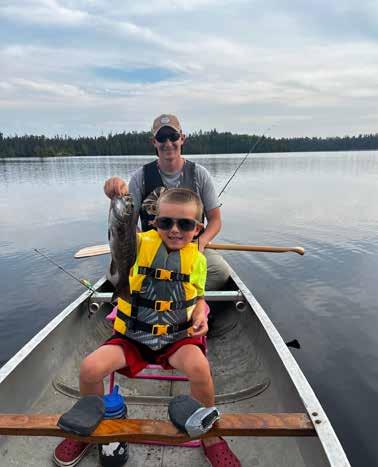




Make a meaningful impact on the future of our wild public lands, waters, and wildlife by giving to BHA. Every contribution, regardless of size, plays a crucial role in protecting the wild spaces that enrich our lives!

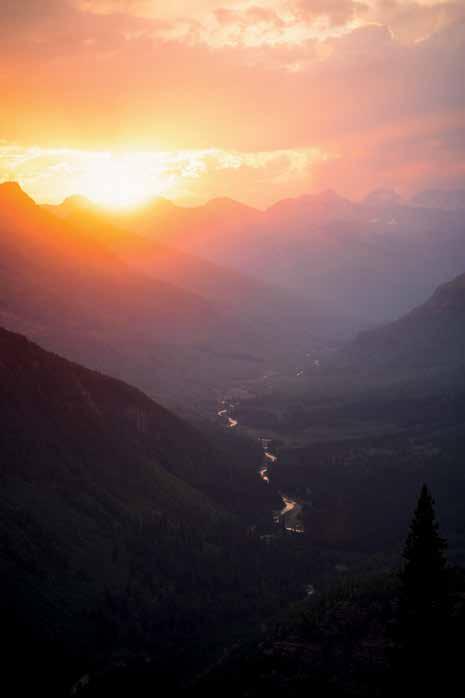
ONE-TIME OR RECURRING DONATION
JOIN THE CAMPFIRE SOCIETY
APPRECIATED SECURITIES OR STOCK
RETIREMENT PLAN BENEFICIARY
REQUIRED MINIMUM DISTRIBUTIONS
MEMORIAL OR HONORARIUM
“OUTDOORS FOR ALL” SCHOLARSHIP

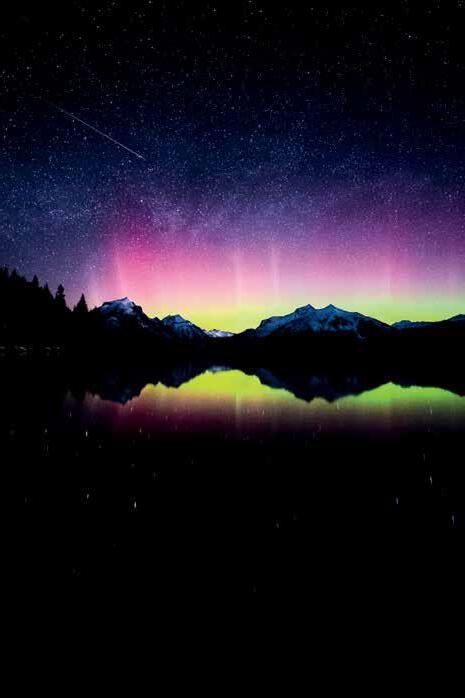
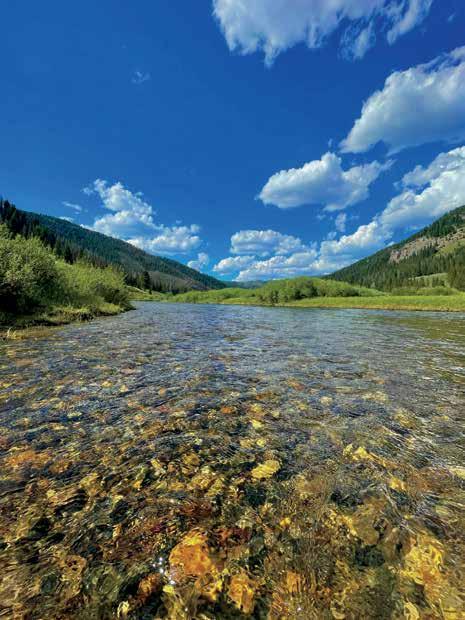





A late-May amendment to the House budget reconciliation bill triggered national outcry and fierce opposition from Backcountry Hunters & Anglers. The amendment, quietly inserted without public input, authorized the sale of nearly 500,000 acres of public lands in Utah and Nevada—a move that bypasses conservation safeguards and threatens critical wildlife habitat and recreational access.
“This isn’t about partisanship. This is about principle,” said Ryan “Cal” Callaghan, BHA’s North American Board Chair. “Our public lands are not surplus, not bargaining chips, and absolutely not for sale.”
Initially hailed for excluding land sale provisions, the House Natural Resources Committee’s original budget framework gave BHA and other advocates reason for optimism. But the late-stage amendment shattered that hope—revealing a backdoor attempt to sidestep bipartisan laws like the Federal Land Transaction Facilitation Act (FLTFA). That law, which BHA helped make permanent, requires that proceeds from any land sale be reinvested in public access and conservation. The amendment ignored it entirely, reducing public lands to mere budget pay-fors.
“This is a full-scale breach of public trust,” said BHA President & CEO Patrick Berry. “It’s a deliberate move to hide from public accountability. The American people overwhelmingly oppose selling off the lands they own.”
In response, BHA launched its United We Stand for Public Lands campaign and mobilized tens of thousands of grassroots advocates. Volunteers flooded congressional offices with tens of thousands of calls and messages. In late May, public lands sales in the House budget bill were removed, but the fight was far from over.
When the Senate released its version in June—proposing the sale of a staggering 3 million-plus acres—BHA members rose again: phone calls, emails, op-eds, and a flood of social media posts. By mid-June, the action alert had become the most utilized in the organization’s history, surpassing 100,000 actions. And we won’t stop there.
Through 2025 and beyond, BHA will continue to double down on its efforts to defend access, stewardship, and the shared legacy of public lands. Through United We Stand, the organization is elevating public lands and waters as central to the American ideal— uniting hunters, anglers, and citizens across the political spectrum to oppose land grabs, confront misinformation, and demand real leadership from elected officials.
With every call made and every voice raised, BHA is proving that public lands are not just places on a map—they are the beating heart of American freedom. And we intend to keep them that way.
Keep up to date on the United We Stand for Public Lands campaign at backcountryhunters.org

BHA reaffirms its position: Corner crossing is not a crime.
In late May, Iron Bar Holdings petitioned the U.S. Supreme Court to review a major 10th Circuit ruling that upheld the rights of four Missouri hunters who used a ladder to legally move between two checkerboard parcels of public land without touching private property.
BHA has supported the hunters from day one, helping raise more than $220,000 for their defense and filing two amicus briefs in federal court. The case has become a national flashpoint in the fight for access to landlocked public lands.

“If the Supreme Court takes this case, we’ll be ready,” said BHA President and CEO Patrick Berry. “Because access for all is worth fighting for—all the way to the highest court in the land.”
BHA remains committed to ensuring commonsense access solutions that respect private property and defend America’s public lands legacy.
BHA is proud to partner with Elkhorn Coffee and announce the new Public Grounds roast, showcasing BHA’s fierce defense of our most American freedom: public lands and waters. One dollar from every bag sold goes to support BHA’s mission. Public Grounds is coming soon to elkhorncoffee. com, at select BHA events and through the BHA website.


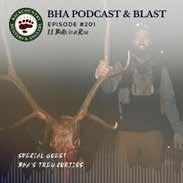
Trey Curtiss, a native son of Montana, is BHA’s Strategic Partnerships and Conservation Programs Manager. Trey is also among a very small group of public lands’ elk hunters who have successfully filled a bull tag now for 10-plus years in a row. Ponder that, for a moment, especially for those of us who have hunted bulls in the backcountry and think we know exactly what that entails. Do we know, really? What are we missing? What does it take in time, gear, commitment, preparation? Join us for one of the most in-depth talks on public lands elk hunting you’ll ever encounter.
Before diving into the nitty gritty from one of the best elk hunters you’re yet to hear of, Trey and Hal ponder the future of hunting, conservation, and the wild places we rely on for sustenance and spirit —and BHA’s critical role in it all—in this not-to-be-missed episode of BHA’s Podcast & Blast.
Ed Anderson: Boise, Idaho. A Minnesota native who found his way West with the U.S. Air Force, Ed is an artist and entrepreneur who has been part of the hunting and fishing space for more than 15 years. As an outfitter, guide and lodge owner, his path in the outdoors has crossed public managers, biologists and ranchers (among others). Those unique relationships and experiences have grown a deep-rooted demand to see the legacy of our country’s public lands live on.
Ed’s home and studio in east Boise, but he’s also at home in South Florida where his family has been for 60 years. He and his twin daughters are just as easily on a skiff in Florida or rowing a raft down a wild river. Either way, protecting America’s wild spaces binds close to his art, business and life.
Matt Shilling, Saint Paul, Minnesota.
Matt Shilling is an entrepreneur with a deep passion for wild places. He carries experience in the private sector as an advisor, board member, executive, and founder of multiple companies and nonprofit organizations. Shilling also had the honor of serving at the highest levels of the public sector. Among other roles, he served in The White House where his portfolio included agriculture, energy, the environment, and homeland security. An ardent believer in giving back to the community, Shilling served as a volunteer firefighter for 13 years. He and his family reside in Saint Paul, Minnesota.


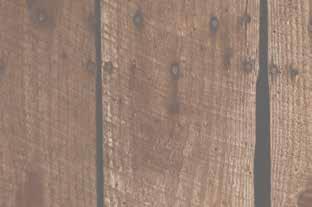


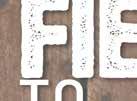

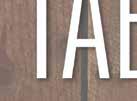

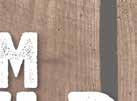

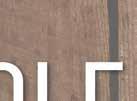









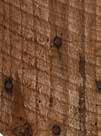



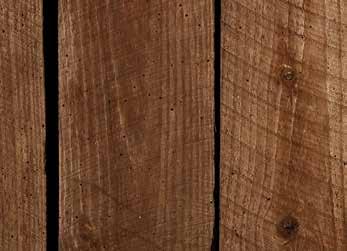
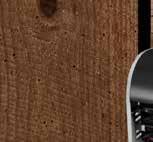













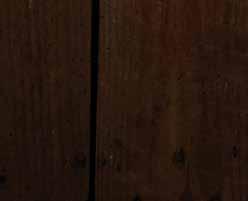


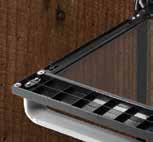


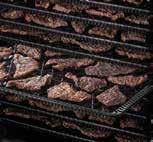


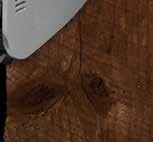
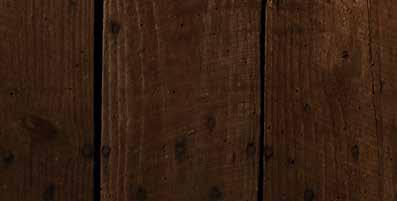
WASHINGTON, D.C.

Why are you a BHA member and staffer?
I was born and raised in Utah—actually less than a mile from a wilderness area—a state with abundant hunting and angling opportunities on public lands and waters. Early on, I realized these resources were taken for granted by many decision-makers in the state. During my time in college studying political science, I learned about BHA and quickly became a member. A few years later, early in my career as a conservation lobbyist in Washington, D.C., I was incredibly lucky to have the opportunity to join the BHA government relations team. Joining the BHA staff was a no-brainer for me, as someone who cares deeply about the future of our remaining wild places and the opportunities they provide to hunt and fish.
Government relations at the Capitol and White House are a mystery to many of us. What does your typical day advocating for BHA priorities entail?
As the sole government relations staffer at BHA, my role entails a broad set of responsibilities. But on a typical day, I spend most of my time doing two things: meeting with congressional or administration staff to educate them on the issues BHA is prioritizing; and coordinating with the many other entities that share BHA’s policy goals. Meeting with decision-makers can mean either asking them to take a specific position or perhaps attempting to influence their position on an issue, but also strategizing with champions of BHA’s policy goals and supporting the work they are doing. In order to be most effective, conservation organizations often coordinate on policy work.
What’s one thing that might surprise us about the inner workings of D.C. politics?
The conservation advocacy world is a small one. Despite the seemingly vast expanse of suits in Washington, D.C., and countless lobbying interests, when it comes down to it, there are only so many individuals working on public lands and conservation issues. It is a tight-knit community, where many folks are close friends outside of work, across the political spectrum, and everyone communicates. This makes it immensely important to approach this work intentionally and build allies, rather than reinforce enemies. Any good, durable policy work is done in a bipartisan fashion. And given that the party controlling the agenda changes frequently, it is important to cultivate support on both sides of the aisle in order to weather any storm.

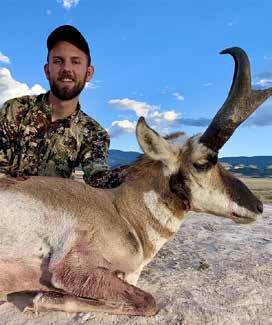
2025 has been incredibly active on the policy front for BHA. How can your average BHA member best have an impact on policy at the Capitol?
Engaging with your local BHA chapter and field staff is the easiest way to understand what threats and opportunities BHA is facing when it comes to public lands and waters conservation and access, even at a national level. All politics start local, and that ground-level understanding is a critically important foundation for reaching out to your elected officials, educating your community, and building additional support for the causes that BHA works on. For each of these things, sharing your own personal story is just as important as properly conveying policy goals, because it provides the context for your audience.
2025 has been incredibly active on the policy front for BHA. How can your average BHA member best have an impact on policy at the Capitol?
Springtime on the Potomac River is special as the American and hickory shad spawn brings these anadromous fish in from the Atlantic Ocean to my backyard. Weighing between 1 and 6 pounds, these herring are a blast to catch with a fly rod, using a sinking line to get your fly down on the river bottom. On a good day, you would be hardpressed to pull me away from the river—the bite can be so hot that you just have to decide when it is time to leave, because the fish don’t tell you when to go.
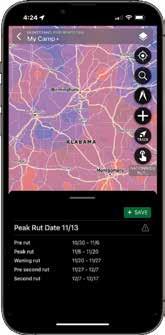
WHITETAIL RUT MAP Unlock the most extensive Rut Map in the country

WHITETAIL ACTIVITY FORECAST Plan your hunt around peak movement times
Join millions of hunters who use HuntStand to view property lines, find public hunting land, and manage their hunting property. Enjoy a powerful collection of maps and tools — including nationwide rut dates and a 7-day whitetail activity forecast with peak deer movement times.

WHITETAIL

Download and map for FREE!










BHA’s Backcountry Bounty is a celebration not of antler size but of BHA’s values: wild places, hard work, fair chase and wild-harvested food. Send your submissions to williams@backcountryhunters.org or share your photos with us by using #backcountryhuntersandanglers on social media! Emailed bounty submissions may also appear on social media.
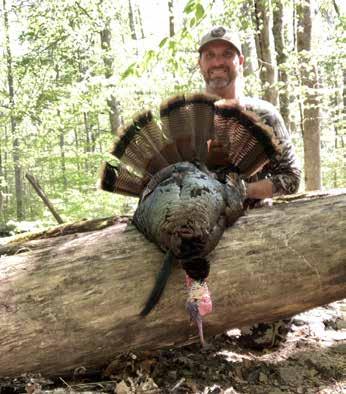
Hunter: : Jameson Hibbs, BHA chapter coordinator (staff)
Species: wild turkey | State: Kentucky| Method: shotgun |
Distance from nearest road: three miles | Transportation: foot
Hunter: Bridger Long (son of Nick Long, PA chapter treasurer) | Species: whitetail State: Pennsylvania | Method: rifle| Distance from nearest road: two miles | Transportation: foot
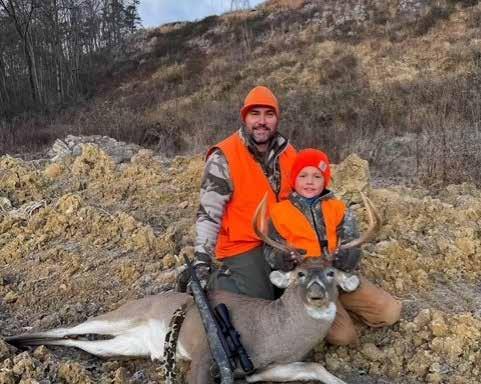
Hunter: Jason Shroeder, BHA member
Species: wild turkey State: California
Method: shotgun
Distance from nearest road: four miles
Transportation: foot


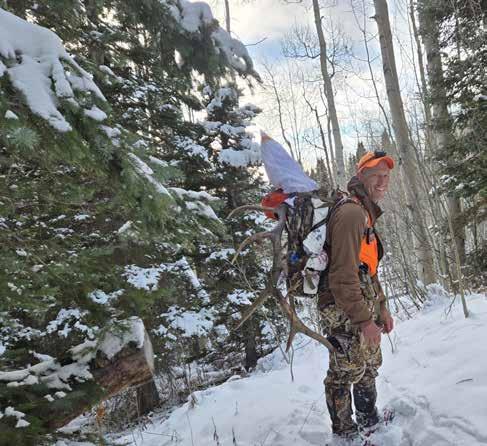
Hunter: Matt Rogers, BHA Member | Species: elk State: Colorado | Method: rifle | Distance from nearest road: four miles | Transportation: foot
Hunter: Felix Rodriguez (age 13), BHA Member | Species: Merriam’s turkey State: Idaho | Method: shotgun Distance from nearest road: one mile Transportation: foot
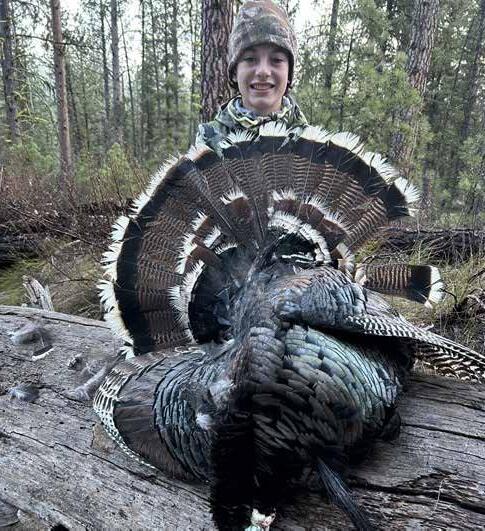


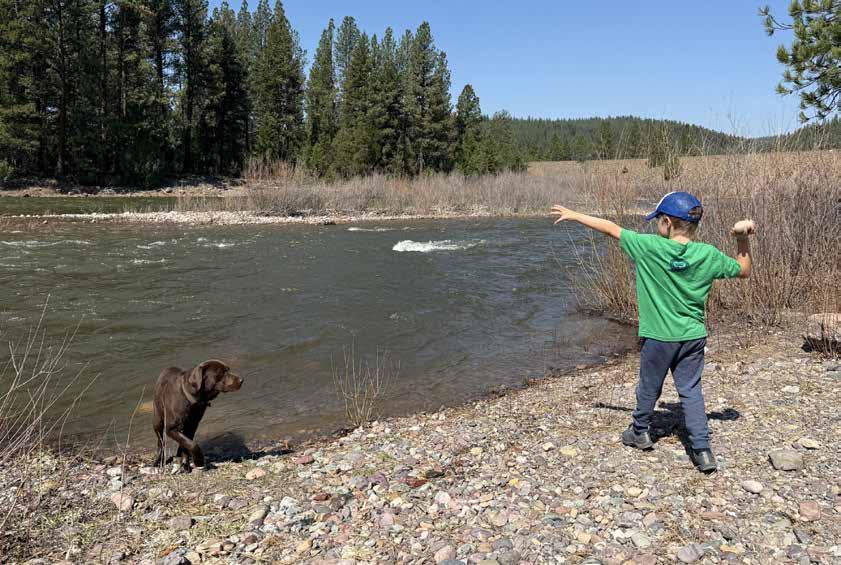
Find:
Rotten log
Animal bone
Seashell Deer scat
Animal print
Campfire ring
Crawdad
Old man’s beard
Canada geese
A bird’s nest
The Little Dipper constellation
Yellow flower
Flying insect
Spider web
Tree with bark that is NOT brown
Smooth skipping stone
Collect and dispose of three pieces of trash from public land
Something you think is a treasure
Nolan Fregerio is the 7-year-old son of BHA Director of Finance Britney Fregerio. Residing in Montana, Nolan loves camping, chopping firewood, tending to the campfire ... and s’mores and hot chocolate of course!

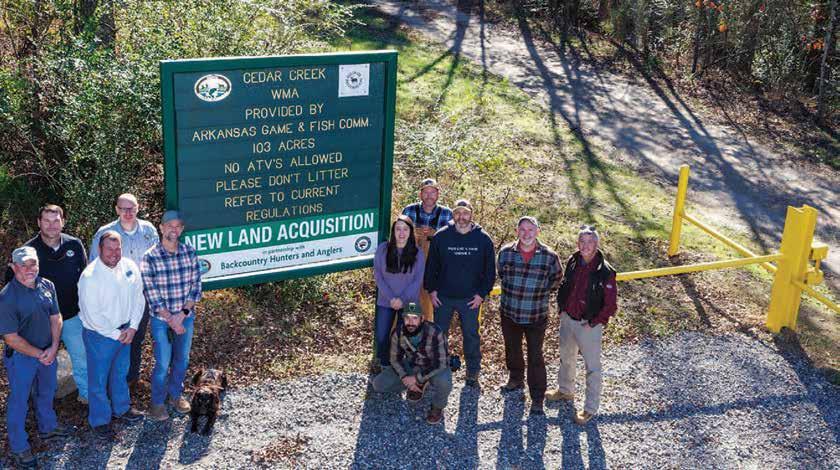
BY JIM HARRIS
An acre of land that might seem meaningless to most people can have an incalculable value in the grand scheme of things. Such is the case of an acre — actually slightly less — that came into the possession of the Arkansas Game and Fish Commission recently with the help of Arkansas Backcountry Hunters and Anglers.
That acre eased the concern over access to Cedar Creek Wildlife Management Area’s 103 acres in Scott County, about 18 miles southeast of Waldron. The gravel road over that acre connects Arkansas Highway 28 with a new gate leading into the WMA and provides parking for visitors.
“Point-nine (0.9) acres doesn’t seem like much, but when you look at it, we use the (WMA) as a base for multiple research projects,” Jason Mitchell, an AGFC wildlife biologist who works in the area, said. “The (USDA) Forest Service uses it as a helipad for its controlled burns, instead of having to fly to Mena to get the fuel and fly back. We also use it as a base for our equipment and our supplies working on Forest Service co-op areas. Getting blocked out of this (acquisition), we would have had to back up and punt.”
“There is no other access into Cedar Creek WMA without building a road through Forest Service land,” Mitchell says. When that was mapped out, the AGFC was looking at 8.5 miles of dirt road “instead of the 250 to 300 feet it is now,” Mitchell said.
Land acquisition for a state agency is difficult and timeconsuming. A volunteer national group with an Arkansas chapter, Backcountry Hunters & Anglers, luckily was looking for a project like this that could help the agency. The parcel in question had been through several owners, and for a while the AGFC secured an easement with one of the owners beginning in 2015.
However, there were complications with the easement, and when the land changed hands again, that went away. Depending on who owned that tiny parcel in the 33 years since the foreclosed farmland came into the AGFC’s possession, access to the WMA could be blocked. The parcel’s most recent owner, Thomas Steele, informed Mitchell he wanted to sell to the AGFC.
Instead of the AGFC going through all the hoops required to buy the land, and seeing another acquisition attempt fall through as it had before, BHA made its first purchase as a national organization and gave the acre to the AGFC.
The deal closed in August of 2023 and after a lot of ancillary work and the gate was put in place, the AGFC, members of BHA’s Arkansas chapter and a few other interested parties dedicated the land Nov. 22, a bright fall day.
“It’s the first land acquisition for the whole organization,” Brad Green, a recent BHA Arkansas chapter board member, said. “We were real excited when the opportunity came up to be able to partner and just preserve public access to public lands. A huge deal. That’s what we’re about and that’s what we all do here and we want to do more.”
That sentiment courses throughout BHA.
“We want to find some more places to do these types of projects on, open up more access,” Larry Haden, the Arkansas BHA chapter’s newest board chairman, said. “Everybody has their own species that they’re pursuing, whether it’s quail, ducks, elk or whatever. BHA’s focus is public land, the land we’re actually on, and the ability to kind of adopt an area, and not only state but federal, around refuges and so forth. The focus on the land is kind of what separates BHA from a lot of other folks.”
James Brandenburg, who is on BHA’s North American board and has led the Arkansas chapter, says the opportunity to work with partners is key. “Where we’re breaking new ground for our organization, it helped us as a chapter to be able to taste success,” Brandenburg said. “That’s very much appreciated. And I think
that from our side, we would say thank you to y’all as an agency for using your professional expertise to help folks like us do good work.”
Easy access to Cedar Creek WMA makes it easier for hikers and hunters to reach the west end of the 150,000 acres of Muddy Creek WMA to the south, about an 800-yard jaunt from Cedar Creek’s gate. Muddy Creek is managed cooperatively by the AGFC and the Forest Service.
The BHA board members say the money used to purchase the parcel came from Black Bear Bonanza, the Arkansas chapter’s annual fundraiser. This year’s event, its fourth, is scheduled for 9 a.m.-5 p.m., March 1, at Benton County Fairgrounds in Bentonville. Last year’s event drew 1,500 people, and probably 600 to 700 or those were youngsters, according to Green. “It’s a family-friendly event,” Green said. The shindig celebrates the reintroduction of black bears in Arkansas by the AGFC and includes presentations and discussions with black bear biologists.
Jim Taylor, formerly with the Arkansas Wildlife Federation board and a life member of BHA, purchased land adjacent to Cedar Creek WMA. He uses the access road to enter his property through an agreement with the AGFC. He helped pay for the new, yellow gate across the road leading into the WMA, according to Matthew Warriner, AGFC Wildlife Management Division assistant chief. Access into Cedar Creek WMA is by foot only from the gate.
Special regulations for the small WMA are outlined in the AGFC’s annual Arkansas Hunting Guidebook, available at agfc.com and across the state in sporting goods stores and elsewhere.
The AGFC obtained the WMA’s 103 acres in 1991. Research projects studying bats, spotted skunks, eastern wild turkey, black bear and other species have been based on the WMA over the years, Mitchell says, especially turkey research with its proximity to Muddy Creek WMA and the Ouachita National Forest. A Missouri Department of Conservation team stayed on the WMA to conduct nuthatch surveys one year. 2024 was the second year of a project to transplant birds to restored habitat in Missouri’s Mark Twain National Forest.
“I wasn’t aware of all the research and everything that goes on here,” Green said. “I thought we were just opening up public access. But, no, there’s a lot of research that goes on up here. It’s an important property.”
At one point in its life as a WMA, cattle grazed on the land, and later, hay was farmed to keep the fields open. That resulted in a lot of fescue and Johnsongrass growing on the property.
“So, when we started trying to manage it, you could hide a tractor up there in the Johnsongrass and fescue,” Mitchell said. “We’ve done multiple burns on the area, done some hack and squirt (using chemicals to kill unwanted tree species), some (wildlife stand improvement) work, some herbicide work and we’re looking to do some more things like cedar removal … trying

to get the cedar down is a challenge.”
Since beginning the habitat work, AGFC staff have seen a couple of broods of turkeys on the property.
“We’ve done prescribed burning on the entire unit, one field system at a time,” Mitchell said. “We’ve actually watched quail come off from areas we just lit to move to other areas. It’s been interesting just to see the transition. It’s kinda getting more of an open woodland look to it. When I started 15 years ago, I wouldn’t have sent a beagle through it. It looked like a south Arkansas thicket.”
In clearing the acreage of overgrowth, staff have stumbled upon a trash dump or two left by previous residents, such as chicken housing material and more that will have to be hauled out. BHA has offered to help with that in the coming months.
“We’re not afraid to get in there and do the work, get our boots dirty,” Green said. According to Green, the Cedar Creek project became a priority “because Matt (Warriner) brought it to us.”
Warriner said he and AGFC Deputy Director Brad Carner, who was chief of the Wildlife Management Division during 2009-21, had been working on a landlocked parcel initiative with OnX and BHA when the Cedar Creek opportunity came up.
“We’ve been trying to get this for many years because we didn’t have secure access to the WMA, and we were concerned access could be shut off to the public and us at any time,” Warriner said. “Brad and I talked to Brad Green, it was like a spark, and within BHA it just ignited, and they ran with it. It was impressive. I didn’t realize until later on that as far as a national organization, this was their first land acquisition.”
Green said the owner, Thomas Steele, “was willing to let us purchase it and donate it to y’all. He was a big part of it, too.”
Warriner gave the biggest share of credit to BHA. “We had to work through a number of things, and y’all did, too, y’all through your national organization,” Warriner said to Green on dedication day. “Y’all never gave up, which we very much appreciate.”
This article originally appeared in the March/April 2025 issue of Arkansas Wildlife, the official magazine of the Arkansas Game and Fish Commission.

• INDUSTRY STANDARD HUB MOUNT
• 5/8 x 24 DT MOUNT INCLUDED
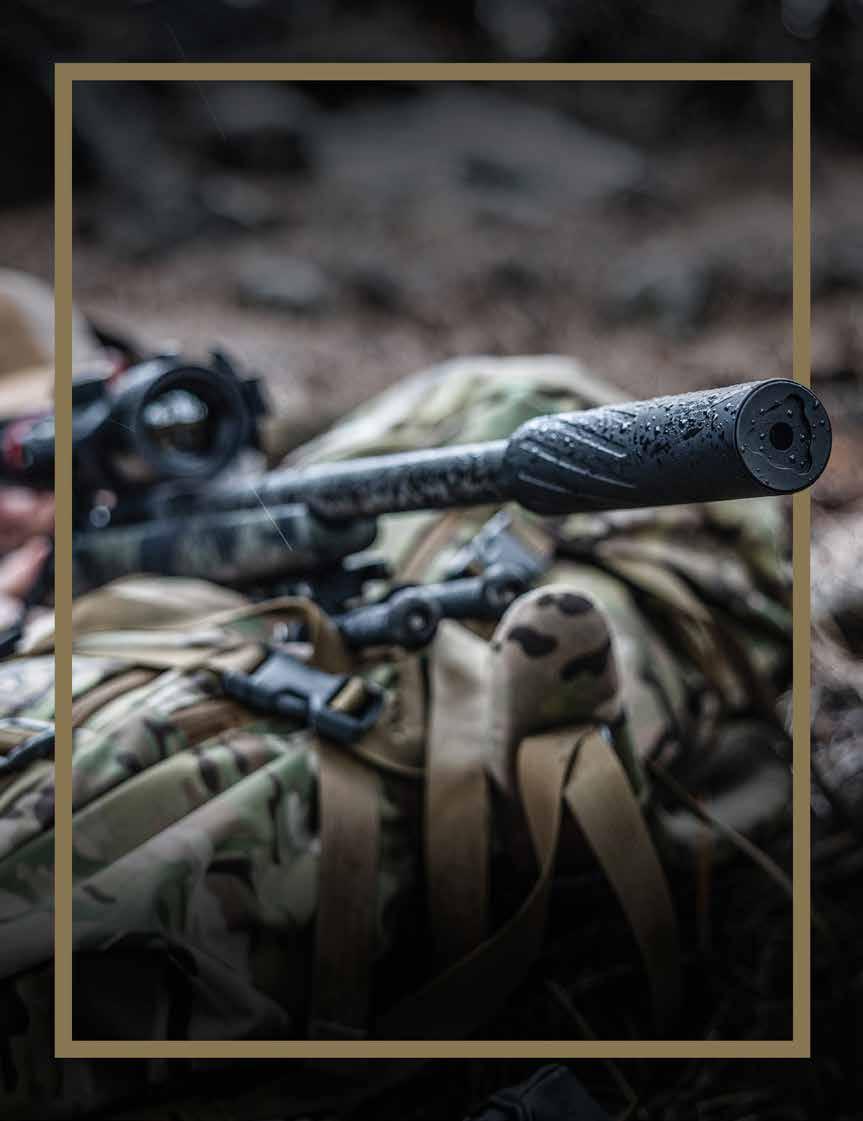
• 6.4” OR 8.17” LONG
• 1.5” DIAMETER
• 9.5 OR 12.4 OUNCES
The BANISH 30-V2 is shorter, lighter and quieter than its predecessor. Configurable length and high-quality titanium construction. Rated up to .300 WBY and now HUB mount compatible.
• MULTI-CALIBER SUPPRESSOR
• 100% TITANIUM
• LENGTH CONFIGURABLE
LENGTH 6.4” OR 8.17”
DIAMETER 1.5”
CALIBER 7.62MM/.308
FINISH CERAKOTE
LIFETIME YES
WARRANTY Black Tan


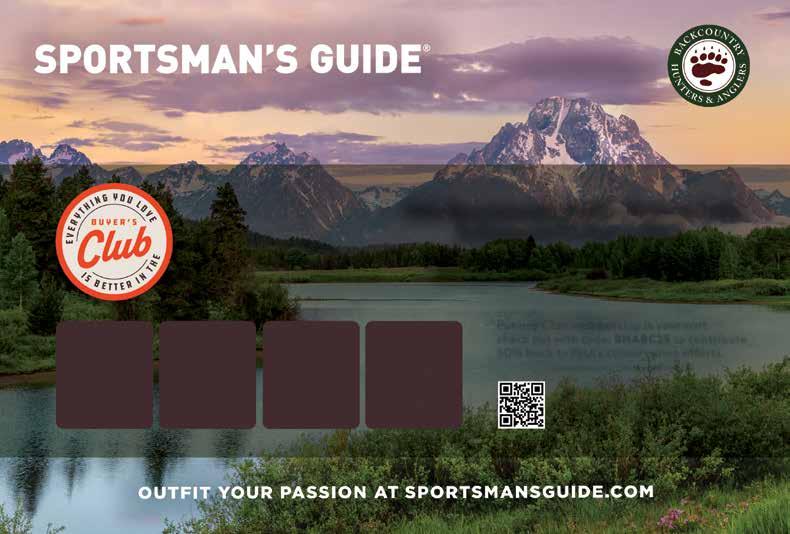

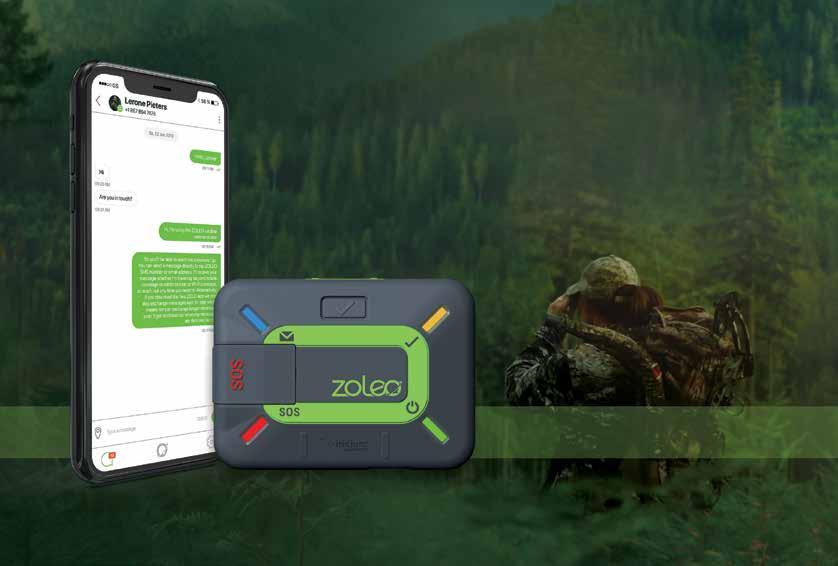


Since Hurricane Helene hit Southern Appalachia, BHA members have delivered supplies, defended wild waters, and fought for a sustainable rebuild.
BY SARAH SNIPES
It’s late September, and I’m sorting camping gear for a weekend deer hunt when my husband breaks my concentration.
“Have you looked at the weather lately?”
I know we’re expecting rain, but I’m trying to be tough. Besides, last weekend, they completely missed the forecast.
I check the update and see Hurricane Helene looming, threatening flash floods in Western North Carolina. The campground I booked is on the river, so I cancel my reservation, reminding myself there are three more months of deer season.
It rains all week. By Thursday, the ground is saturated, and emergency alerts buzz our phones every half hour. The county sets a 7:00 p.m. curfew.
On Friday morning, hours before dawn, Helene finally hits, and I wake to a violent, relentless wind. I hear the sharp crack of trees breaking and feel it in my bones when they fall to the ground.
At first light, we peer into the meadow below our house. The culvert that usually trickles into the yard is blasting muddy water, flooding a row of white pines and nearly covering the driveway.
When the storm recedes, we check on our neighbors. The couple next door had a massive oak fall on their house while they were sleeping, springing leaks in their bedroom ceiling.
A few miles away, a woman watched helplessly as a landslide buried her husband while he dug a trench to divert floodwaters from their home. He died days later in the hospital.
Hurricane Helene hit North Carolina as a tropical storm and became the worst natural disaster in the state’s history.
Rain totals reached 20 to 30 inches in Western North Carolina, with winds topping 100 miles per hour.
At least 230 people died across the seven states affected by Helene.
Washed-out roads and bridges isolated communities, leaving them without electricity, running water, or cell service.
Within days, North Carolina BHA members were among the first to load supplies and head into the hardest-hit areas.
“Being only a few hours away and watching the devastation unfold broke my heart,” says Zach Brady, BHA’s North Carolina chapter leader for the Mountain and Piedmont region. “We decided to find the places not yet receiving aid by five or six days after the storm. We knew we could backpack in supplies—all of us are experienced outdoorsmen and wanted to use those skills.”
Zach and his fellow BHA members gathered supplies and donations from their network and traveled to Newland, North Carolina, to deliver shelf-stable food, water, baby supplies, hygiene products, batteries, fuel, and first aid kits.
They’ve since returned multiple times, bringing space heaters and warm clothing as winter set in and many people were still without electricity.
At first, the focus was on the human impact of Helene, and rightly so. Soon it became clear that the forests and rivers of Southern Appalachia had also been profoundly affected.
Land managers said recovery could take up to a decade, but those estimates didn’t factor in the ongoing damage from rushed infrastructure repairs in sensitive areas like the Nolichucky Gorge.
Chris Lennon, a fishing guide, paramedic, and BHA Tennessee chapter board member, was among the first to sound the alarm.
Just two weeks after the storm, Chris and others returned to the Nolichucky, shocked to find out-of-state contractors with heavy equipment already repairing the 40 miles of railroad tracks damaged by Helene.
Excavators were mining rock from the riverbed to rebuild the rail line and damming tributary streams that hold native Appalachian brook trout. And this was in a river that supports the endangered Appalachian elktoe mussel and a thriving outdoor economy.
Chris and his community formed a grassroots group, Nolichucky Witness, to document the damage and raise their concerns with CSX Transportation—the rail operator—and the federal agencies responsible for overseeing the work.
When their attempts were met with silence, they coordinated with advocacy groups American Whitewater and American Rivers, which filed a lawsuit through the Southern Environmental Law Center.
“The lawsuit was filed against the public land managers—the U.S. Army Corps of Engineers, the U.S. Forest Service, and the U.S. Fish and Wildlife Service—who failed us,” says Chris.
In December, the group celebrated when the Army Corps and the Tennessee Department of Conservation ordered CSX and its contractors to stop excavation of the riverbed.
Now, CSX is repairing parts of the same rail line in North Carolina, where Chris says the state agencies have put stricter guidelines in place, in part because of the success of the lawsuit.
“BHA’s North Carolina chapter played a significant role in getting the word out about what CSX did in Tennessee,” says Chris. “That has helped keep the mining in the North Carolina section of the gorge to a minimum.”
Chris and BHA’s Tennessee chapter board are still fighting

for the Nolichucky, pressing the U.S. Army Corps to hold CSX accountable as it decides how the company must repair the damage done to the river.
The Nolichucky is just one of many Southern Appalachian rivers impacted by Helene.
Heath Cartee, owner of Pisgah Outdoors and a BHA North Carolina chapter corporate partner, guides anglers on the nearby French Broad River. He says past development has made the area more prone to flooding.
“I’m not a hydrologist; I just work on the water, and I see things,” says Heath. “This floodplain that is used for growing sod or corn should be a swamp where water would sit and percolate into the river. These creeks should meander, but they’ve been straightened using an excavator. Now, the water gains a lot of velocity as it drains into the river, and that causes flooding.”
Heath adds that historic interventions, like the late 1800s dredging by the French Broad Steamboat Company, further increased the river’s vulnerability.
The company blasted bedrock to deepen the river’s channel for transporting passengers and freight, disrupting its natural flow and reducing its capacity to absorb water, making it more conducive to flooding.
Recently, some have proposed damming the French Broad to create a reservoir as a solution to these heightened flood risks.
“But that’s looking for a man-made solution to a man-made problem,” Heath says. “We have a history of trying to control something that’s not controllable. This river isn’t going anywhere

except where it wants to go, and we’re going to have to work with that.”
As on the Nolichucky, the infrastructure on and around the French Broad was badly damaged by Helene. In a region that relies on outdoor recreation for its economic vitality, these repairs are critical.
At first, Heath hoped the rebuild would be handled with the sustainability and care that was missing from past development patterns. But recently he shared that his optimism has been shattered.
On the French Broad and in surrounding watersheds, the U.S. Army Corps and contractors are removing storm debris with heavy equipment, where Heath says they’re violating ecological guidelines, destroying wildlife habitats, and disregarding community concerns in a rush to secure federal funds.
As this story was going to press, Heath shared that he and a coalition of area residents, business owners, and advocacy groups recently met with U.S. Representative Chuck Edwards (NC-11) to voice their concerns and request federal support.
Hurricane Helene left a trail of destruction but also revealed the grit and resilience of these Southern Appalachians who not only defend public lands and waters but also support their communities long after the storm. Whether through advocacy or delivering essential aid, they’re committed to rebuilding and protecting what matters most.
BHA member Sarah Snipes is a writer and communications professional from North Carolina’s Blue Ridge Mountains, where she hunts whitetails and wild turkeys and fishes for native brook trout.
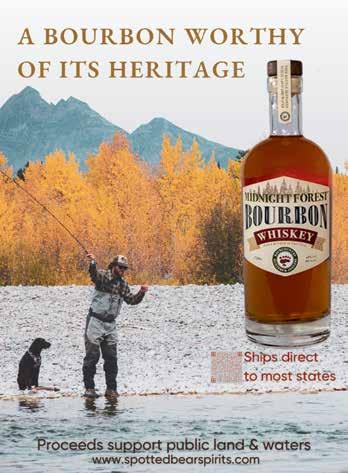
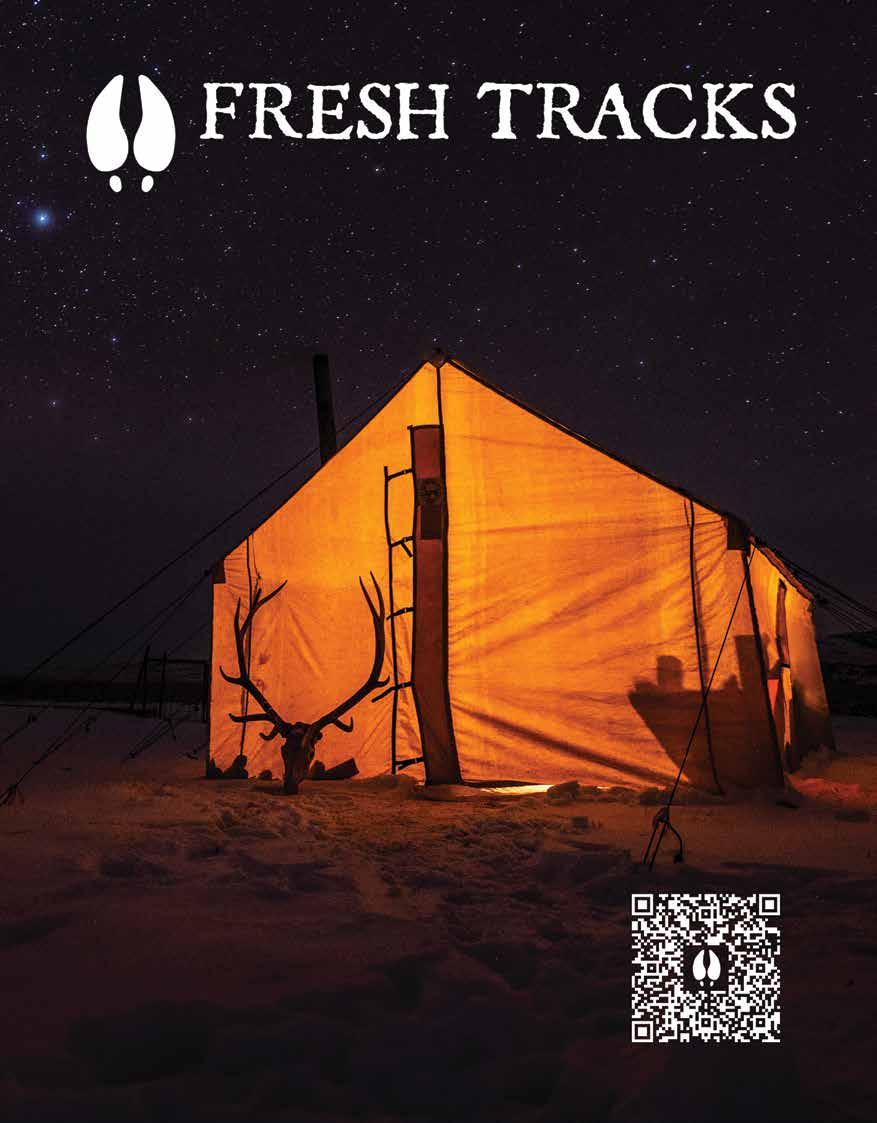

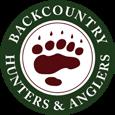

• The Alaska chapter started its first scholarship in May to help graduate students studying fish, wildlife, or natural resource conservation in Alaska. They prioritize applicants who are hunters or anglers and are working on projects related to animal populations or outdoor recreation.
• In April, the Alaska chapter partnered with the Audubon Society, Juneau Audubon, and Southeast Alaska Land Trust (SEALT) at Devil’s Club Brewing Co. to learn about eBird, a tool for birders and conservationists. The next morning, they went on a bird walk in the Mendenhall Wetlands.
• In May, the Alaska chapter worked in the Canoe Lake Chains in the Kenai National Wildlife Refuge to clear the area for recreation, including with the U.S. Forest Service and Kenai River Stream Watch to install fencing to guide anglers and protect the riverbanks.
• In March, the Alaska chapter sponsored Paige Drobny from Squid Acres, who finished third in the 40th Iditarod Race, which takes place on public lands.
• The 4th Annual Black Bear Bonanza was a roaring success, drawing participants from multiple states to celebrate Arkansas’s bear recovery and raise tens of thousands of dollars for conservation.
• The chapter made a $3,000 donation toward an Arkansas Game and Fish Commission K-9 unit for law enforcement and search and rescue.
• In April, Chapter Legislative Chair Kip Kruger advocated for crucial Land and Water Conservation Fund (LWCF) funding with legislators in Washington, D.C., before turning his focus to state legislators to successfully amend SB290, a bill threatening protections for America’s first national river.
• The British Columbia chapter continues as a stakeholder on the provincial CWD committee, discussing and advocating for sound CWD management using best practices to stop the spread.
• Members represented BHA at a number of outdoor shows across the province. Look out for more events in your region.
• We’re looking for more volunteers to help out on a regional and provincial level. If you’re interested in helping the chapter, get in touch at britishcolumbia@backcountryhunters.org.
• In response to the much-anticipated release of the California Black Bear Conservation Plan, the chapter has submitted a petition to the Fish and Game Commission advocating for a second bear tag. We will be participating in the commission meeting to help expand hunting opportunities for black bears in the Golden State.
• The chapter completed yet another successful turkey camp, with almost 30 volunteers, many of whom were firsttime hunters. Stories, techniques, and laughs were shared, and several birds were harvested.
• The Armed Forces Initiative hosted a successful pig hunt, bringing members of our military community with a wide range of hunting experience to spend a weekend talking about conservation and chasing pigs.

• We welcomed ten new volunteer leaders, including Damon DeGraw, Jacob Kinnard, Steve Bridges, John Young, Cade Kloberdanz, Sid White, Jason Judge, Ben Monarch, Aidan McCormick, and Kassi Smith.
• On March 13, the Colorado Senate passed Joint Resolution 25-009, “Protection of Colorado’s Public Lands,” which reaffirms the state’s dedication to conserving our public lands.
• We joined the Colorado Stream Access Coalition, working to change/improve some of the worst public access laws in the West.
• The chapter has continued to work actively on an initiative to reinstate bear hunting in Florida. A limited bear hunt was opened in 2015 and has been closed since.
• On May 10, the chapter hosted a cleanup event on Citrus WMA in Inverness.
• The chapter hosted its annual scouting workshop in Jupiter on June 28.
• Join us for a Public Land Packout Pop-Up event in North Idaho this summer. These events will occur during the evening on the first Tuesday of the summer months. Please see our chapter web page for more details.
• The Idaho chapter wrapped up a long legislative session full of advocacy and testimonies both in favor of and against a large number of public lands, hunting, and wildlife bills.
• We will be conducting Learn to Hunt classes in North and South Idaho this summer and are actively seeking mentors to pair with our eager students.
• The Illinois chapter had a great spring, hosting a Turkey Talk event in partnership with Sitka Gear at their new store. Chapter Coordinator Aaron Hebeisen, along with members, educated many people on how to hunt turkeys.
• The chapter also hosted the grand opening of a public archery park at Lake Shelbyville in a one-of-a-kind partnership with the Corps of Engineers.
• Finally, we continue to push the Muddy Waters Tour event focused on getting clear legislation on public water access for our great state.
• The Indiana chapter hosted a wood duck box installation at JE Roush Fish and Wildlife Area in northeastern Indiana. This was a follow-up from an event last year when we used a Bendix grant to purchase supplies and host a duck box build.
• In collaboration with the BHA’s Indiana State University Collegiate Club, the chapter held a grassroots workday at Wabashiki FWA in west-central Indiana for the fourth year in a row. This year, the chapter planted native shrubs on a recently acquired 80-acre parcel and also continued invasive removal.
• The Iowa chapter had a very successful 2025 Iowa Deer Classic, with strong engagement from patrons of the show.
• The Iowa chapter hosted the 2nd Annual Bluegill Bash on June 7 at Hickory Grove Lake.
• The Iowa chapter was awarded an Iowa governor’s deer tag for 2025. All funds raised from the 2024 tag were allocated to help purchase public lands in the state.
• On March 5, the chapter welcomed BHA North American Board Chair Ryan Callaghan to discuss legislation at The Barn at Kill Creek Farm, where 120-plus members attended.
• On March 22, the chapter hosted the annual Lenexa Clay Shoot.
• In February, March, and April, the chapter hosted its first Legislative Breakfasts at the Capitol with SCI.
• The chapter “dug in” to conservation — planting trees, building birdhouses, and boosting pollinator habitat.
• Murray State’s collegiate club planted cypress, ran trapping workshops, and showed up big for Earth Day.
• Save the date for our Bourbon, Bands & Public Lands event on Sept. 13.
• The chapter hosted a Brews and Brookies pint night at Ore Dock Brewing in Marquette with Dr. Troy Zorn (MI DNR Fisheries) to discuss coaster brook trout fishing and conservation.
• Hosted a Talking Turkey Pint Night at Heights Brewing in Farmington with Jenn Davis from the National Wild Turkey Federation, covering habitat and hunting in Michigan.
• The Tamarack SGA Fence Pull was held June 20 near Sunfield—helping improve wildlife access by removing outdated fencing.
• The Mid-Atlantic chapter continues to work behind the scenes with state agencies, partner organizations, and elected officials from across the region.
• The chapter is working with the Armed Forces Initiative to support oyster restoration work on the Chesapeake Bay with the Chesapeake Bay Foundation.
• Hosted our 2nd Annual Big Truck Farm Brewery 3D Archery Shoot, and it was a huge success. We’re looking forward to continued expansion of the event next year.
• The Minnesota chapter thanks Eli Mansfield for serving as our board chair for three years, and he is now transitioning to our policy lead!
• The chapter partnered with the Trust for Public Land to host a Learn to Hunt Turkey event with 15 new hunters.
• The chapter held a Public Lands Pack-Out in Grand Rapids, cleaning up a heavily used access point to hundreds of acres of Northern Minnesota public land.
• The chapter welcomed new board members Colleen Foehrenbacher and Jon Duesterhoeft.
• The chapter hosted a Gun Dog Social with local Quail Forever and North American Versatile Hunting Dog Association chapters in June. Sportsmen and four-legged friends were invited to hang out and learn about the organizations, as well as win sweet dog-specific gear.
• Join us on July 18 and 19 for Squadfest 2025 in Hazelwood, Missouri. Hope to see you there.
• Be on the lookout for archery nights throughout the summer all around the Saint Louis area.
MONTANA
• Montana chapter board members worked diligently in the latest state legislative session to protect Montana’s public lands, waters, and wildlife.
• The chapter welcomed new board members Beth Brennan, Steve Matzker, and Kyle Mitchell.
• The chapter hosted a wild game dinner in Red Lodge at Black Canyon Bistro and a meet-and-greet with BHA President and CEO Patrick Berry at the MeatEater flagship store in Bozeman.
NEBRASKA
• The chapter hopes you were able to join us at this year’s Trashy Cat at Twin Rivers SRA—a great weekend of fishing and cleaning up public lands.
• In June, the chapter worked at East Willow Island Wildlife Management Area west of Cozad for an exotic woody plant control and habitat restoration project.
• July 31 to August 3, join chapter members in Halsey National Forest to take part in the Nebraska Bowhunters Association Jamboree.
NEVADA
• The Nevada chapter tabled at both the Elko and Reno Sportsman’s Expos.
• Nevada Department of Wildlife honored our chapter leaders with outstanding volunteer awards.
• The chapter provided input and support for several bills that are moving forward in the legislature involving: water resources for wildlife, roadkill salvage, wildlife crossings, and edible portions for bear and lion.
NEW ENGLAND
• In New Hampshire, BHA submitted comments on the New Hampshire Fish and Game Department’s 10-year Game Management Plan.
• The New Hampshire team tabled at a sportsman’s show and at the NHFG’s Discover WILD day.
• In May, the Massachusetts team hosted a great storytelling night at the Filson store in Boston.
• The chapter continued through the spring with their virtual mentor series. Stay tuned to our social channels for the next installment.
• The chapter will be hosting a stop on the Full Draw Film Tour. It will be the only stop in the NY metro area. Stay tuned for the date and details.
• The chapter participated in a Public Land Pack-Out. Members and friends cleaned up three separate wildlife management areas across the state.
• New Mexico AFI members held the third annual Lincoln NF habitat restoration project and turkey hunt. Participants and youth hunters hunted in the mornings and then built beaver dam analogs to help restore riparian habitat.
• The chapter participated in the New Mexico Outdoor Adventure Show and the Santa Fe Brewing Spring Runoff event, where they sold merchandise and spoke to current and prospective members.
• Chapter members cleaned up trash and debris near Peña Blanca along the Rio Grande River alongside Ducks Unlimited and Adobe Whitewater Club members.
• The chapter tracked and provided input/support on multiple bills during this year’s legislative session, including Senate Bill 5, which overhauls the game commission and fees and was signed into law by the governor.
• The chapter ran four pack-outs in April across the state. We worked on Three Rivers Wildlife Management Area, Cranberry Mountain WMA, East Otto State Forest, and teamed with Vermont on Lake Champlain WMAs and boat launches.
• The chapter kicked off turkey season with Pint Nights at Rusty Nickel Brewing in western New York and Common Roots Brewing in Albany.
• Chapter volunteers are supporting the Department of Environmental Conservation’s Trek for Trout with volunteers and a Pint Night in Saranac Lake. The project is studying backcountry brook trout ponds in the Adirondacks.
• At our Spring Round-Up camping event, members enjoyed perfect weather, instructive programs, fine dining, and lots of camaraderie and storytelling. See you next year!
• The North Carolina AFI Inshore Fishing Camp hosted 10 service members at Hammocks Beach State Park for a weekend of angling instruction.
• We celebrated the removal of Section 4 of Senate Bill 220 that would have made it illegal to launch a boat from state roads to access public waters.
• The North Dakota chapter concludes the 2025 legislative session, celebrating the results on nine out of 10 bills, including a big win to restructure landowner pronghorn tags, giving more tags to the public—a bill the chapter drafted.
• The Dakota Prairie Grasslands will be opening the scoping period for the first-ever Travel Management Plan for the Little Missouri National Grasslands. The chapter has been pushing this since its inception in 2018.
• The annual gun raffle drawing was held on May 29 at the Broadway Grill and Tavern in Bismarck.
• Here in Ohio, the chapter is watching swollen rivers and reminiscing about our recent fly-tying event in Milford. State sponsor Whuff Rod Co. provided a rod to raffle, and all had a great time!
• The chapter is working on summer events, including skills events around the state, an archery hike in southeast Ohio, and the Mobile Hunting Expo in southwest Ohio.
• The chapter continues to advocate for the inclusion of H2Ohio funds in the Ohio state budget. This critical water quality effort funds a variety of projects benefiting Ohio citizens.
• In March, the Oklahoma chapter board hosted a Hunting and Fishing Fellowship event at Roughtail Brewery in Oklahoma City. The family-friendly event brought about a great discussion about conservation.
• The chapter assisted the Oklahoma Department of Wildlife Conservation in building wood duck boxes at Copan Wildlife Management Area in May.
• The chapter will be collaborating with the Oklahoma Department of Wildlife Conservation and Quail Forever to do a legacy habitat improvement project on Spavinaw WMA.
• The chapter hosted its first springtime Bustin’ Clays event fundraiser. This is the first in a series of three clay shoots for 2025. Stay tuned for details.
• The chapter has also participated in numerous habitat workdays, removing litter, planting, and removing invasive
species in partnership with the Pennsylvania Game Commission and other conservation agencies.
• On the legislative front, our top priority is the passage of a bill that removes the prohibition on Sunday hunting. This legislation has been a priority for several sessions, and we have high hopes for passage this year.
• The Southeast chapter has joined ten other conservation groups to oppose Alabama HB509, which would designate deer possessed by a licensee as personal property of that licensee and prohibit state agencies from killing, testing or prohibiting the transfer of captive deer due to disease, except under certain circumstances. This bill seeks to privatize public resources and will stifle efforts to control CWD and other diseases in Alabama’s deer herd.
• The chapter is investigating the deer and hog gun-hunting closure in the Mobile Tensaw Wildlife Management Area. The chapter would like to hear from any member who has traditionally accessed the Ghost Fleet Tract in the nowclosed area.
• The chapter has opposed the closure of Big Creek Lake in Mobile County, Alabama. The lake, which has been open to public recreation for decades, was recently closed to the public citing safety concerns. While the chapter supports actions meant to protect a sensitive ecosystem and resource, the method of protection must be balanced with traditional uses and avoid privatization of the public resource. For more information on this and other current efforts, please reach out to chapter leadership.
• The chapter opposed a baiting bill that would allow baiting for whitetail deer and wild swine on privately owned/ leased land.
• The chapter also opposed an amendment to the Tennessee Wetlands Act that would designate non-federal regulated wetlands as real property and loosen protection.
• The chapter sent a formal letter to USACE Nashville opposing CSX’s recommended remediation plan for the Nolichucky River through Cherokee and Pisgah National Forests. Listen to BHA’s Podcast & Blast episode “Compounding Damage with Destruction” for the backstory on this issue.
• The chapter signed on to a coalition statement sent to the legislature along with 13 other conservation groups supporting bills that would increase oversight of the captive-deer breeding industry in Texas.
• The chapter is preparing to launch the Adopt an Access program for the 2025 hunting season to help keep our public lands clean.
• The chapter held a campout and squirrel hunt in the Sam Houston National Forest in late spring.
UTAH
• The chapter hosted its first Wild Game Dinner & Fundraiser, welcoming new faces to the organization and raising impactful funds to support our advocacy and stewardship work.
• Board members engaged in the Division of Wildlife Resources public input process in April to provide a BHA perspective on proposed rule changes related to CWD, permit allocations, and harvest reporting.
• The chapter ramped up its work on the “Utah is Not For Sale” campaign through education and local advertising.
• The chapter held two incredible wild-game processing events—one featuring a cougar on the East Side and another with a black bear on the West Side—giving over 30 participants hands-on butchering experience.
• The chapter knocked out five conservation and habitat projects so far this year, including community favorites like the 7th Annual Methow Valley Fence Pull and the 2nd Annual Yakima Canyon Recreation Area Clean-Up.
• Chapter representatives attended an in-person commission meeting, inviting all WDFW commissioners to join us at upcoming conservation events—we’re excited to build stronger connections and show them our impact firsthand.
• On April 24, the chapter assisted the West Virginia DNR and First Energy in planting 288 trees on Coopers Rock State Forest and Snake Hill Wildlife Management Area near Morgantown.
• On May 17, the chapter assisted the Greenbrier River Fly Fishing Classic, mentoring children from the West Virginia Children’s Home Society in fly fishing and outdoor skills near Lewisburg.
• On May 31 and June 1, the chapter set up a booth at the Appalachian Fly Fishing Festival in Thomas.
• The Wisconsin chapter continues to invest in our strong outdoor heritage through Learn-to-Hunt/Fish events for spring turkey, trout, and bear hunting with hounds.
• Our UW-Stevens Point branch hosted a successful Gear & Beer Bash, with 19 student volunteers welcoming more than 200 attendees.
• Chapter members put their passion for conservation to work at the Mead Wildlife Area, Goose Lake Wildlife Area, and the Lulu Lake State Natural Area for habitat workdays and Public Land Pack-Outs.
• Lobbying efforts continue for a sandhill crane hunt as the chapter continues to work with conservation partners, as well as host thematic pint nights.
• On April 10, the chapter hosted a Thankful Thursday fundraiser with My Country 95.5 at The Beacon Club. We raised over $11,000! Thank you to all who donated and came out and supported us.
• The Wyoming chapter hosted the Little Sunlight Trail Cleanup on May 17.
• Sabrina King will be continuing her policy work for the chapter in and beyond Cheyenne, engaging with priority topics like corner crossing and transferable landowner licenses.
Find a more detailed writeup of your chapter’s news along with events and updates by regularly visiting www.backcountryhunters.org/chapters or contacting them at [your state/province/territory/region]@backcountryhunters.org (e.g. newengland@backcountryhunters.org).

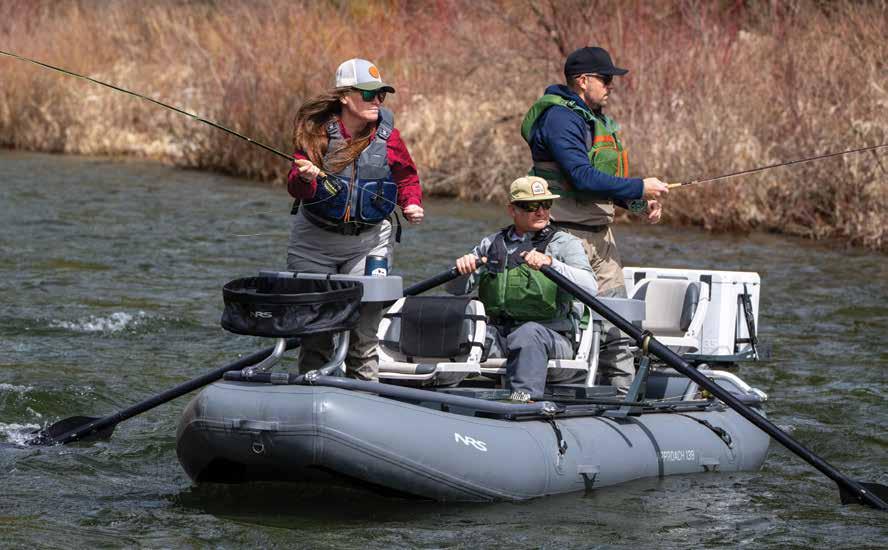

Spread out the map and circle those little-explored waters that ignite your imagination. The Approach 138 expands your access to harder-to-reach fisheries with a design that’s easy-to-launch, adaptable for flat and moving water, and fully featured for angler comfort and convenience. Every inch is crafted for versatility, rowing performance, and stealth, with quality backed by decades of craftsmanship. The NRS Slot Rail frame system lets you fine-tune seat, oar, and gear placement for balance, comfort, and control. Welded PVC construction, continuous-curve tubes, and a high-pressure drop-stitch floor provide a stable casting platform and reduce drag, excelling even in shallow, technical water. Padded dry box seats, rod holders, anchor system, and motor mount come standard. Whether you’re running a full-luxury setup on a finger lake or stripping it down for a backcountry mission, the Approach adapts to how you fish. Where you Catch the Adventure™ is up to you.

A single person—and action—results in the establishment of a Veteran Waterfowl

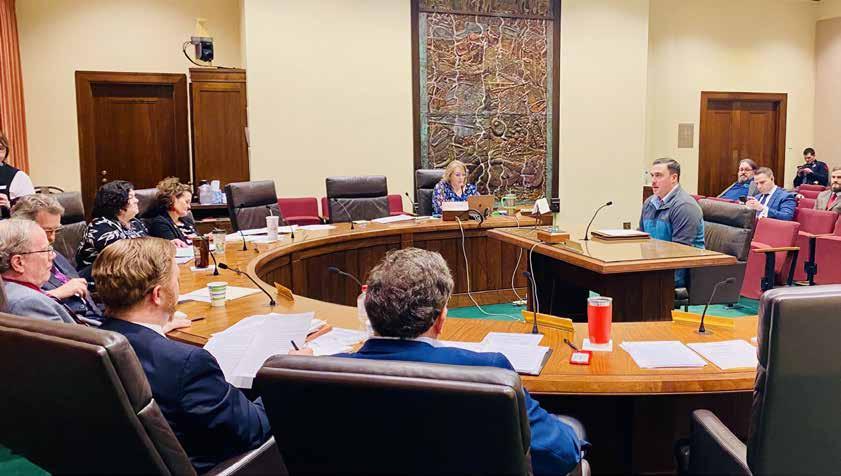
BY DUSTIN McKENNA
Thankfully, sometimes a single action—such as a cold call—can catalyze significant change. A notable success was achieved in March 2024, when the Nebraska Game and Parks Commissioners unanimously approved the establishment of a Veteran Waterfowl Season and further when the Nebraska Legislature passed LB 867, amending state statute to formally mandate this season. Scheduled for the weekend preceding each zone’s opening for duck season, this initiative marks a crucial development in supporting veterans.
The groundwork for this season was laid in July 2023 when I initiated a partnership with Commissioner Rick Brandt. My initial outreach was a cold call, inspired by the public contact information on the Game and Parks Commissioner website. Commissioner Brandt, a Navy veteran and conservationist, was enthusiastic and eager to assist. Our collaborative efforts involved biweekly meetings to strategize and establish a timeline for integrating the season into the 2024 schedule. Notably, Commissioner Brandt facilitated a meeting with Tim McCoy, director of Nebraska Game and Parks, to refine the legislative proposal.
During a pivotal meeting in March 2024, the Nebraska Game and Parks Commission recommended the establishment of the Veteran Waterfowl Season as part of the 2024 waterfowl regulations.
Simultaneously, I collaborated with Nebraska State Senator Danielle Conrad, whose familial ties to the military fueled her commitment to supporting the veteran community. Together, we drafted LB 1001, legislation to mandate the annual occurrence of the Veteran Waterfowl Season. Senator Conrad introduced the bill, which was set for discussion in the Natural Resources Committee on February 14. In preparation for the hearing, we convened with key stakeholders, including Alicia Hardin, Nebraska Game and Parks Wildlife Division administrator, and Ryan McIntosh, legislative chair of the National Guard Association of Nebraska, to address mi-
nor revisions to the bill. These amendments were incorporated into a white copy presented at the hearing, ensuring the most current version was discussed. During the hearing, I, along with McIntosh and veteran Evan Egger, voiced our support for the bill. Ultimately, the committee chair opted to merge LB 1001 with LB 867, prioritizing it for legislative consideration.
The successful passage of LB 867 enshrined the Veteran Waterfowl Season in Nebraska law, culminating over a year of advocacy and collaboration. This achievement was made possible through the steadfast support of Commissioner Brandt, Senator Conrad, and the dedicated staff at Nebraska Game and Parks.
Thanks to the bill’s passage, in September 2024, the Nebraska chapter of the Armed Forces Initiative hosted its second annual Waterfowl Camp. This event provided six veterans with an enriching weekend of waterfowl hunting from both shore and boat. Despite warm weather conditions, participants enjoyed memorable experiences, including one veteran’s notable accomplishment of harvesting his first banded goose. This camp fostered camaraderie among veterans and volunteers while enhancing understanding of waterfowl and public land management in Nebraska.
The journey from a simple cold call to the enactment of a state statute underscores how just one person can affect meaningful change in conservation policy.
BHA member Dustin McKenna is a cavalry officer in Nebraska’s National Guard and BHA’s Armed Forces Initiative secretary. He divides his free time chasing waterfowl, upland game, and deer in his home state and spending time with his wife, Megan (also a Nebraska National Guard soldier), and his two children, Keavy (7) and Forrest (4).
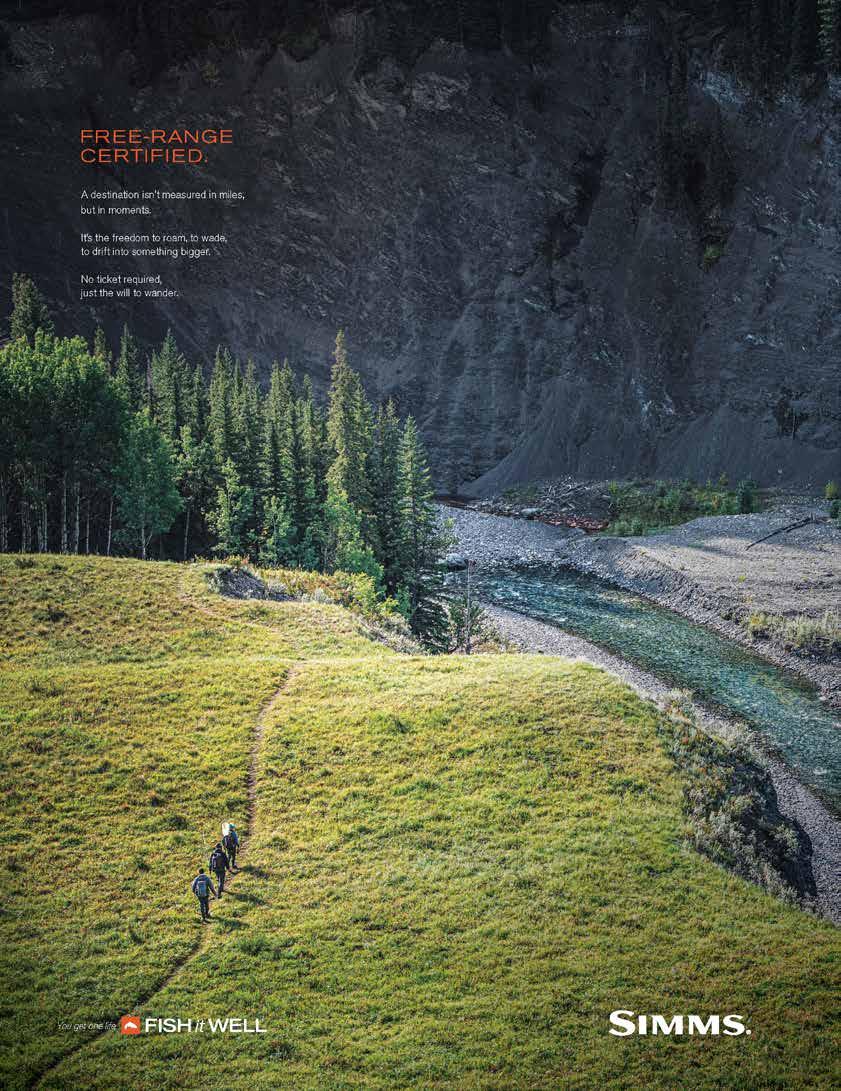
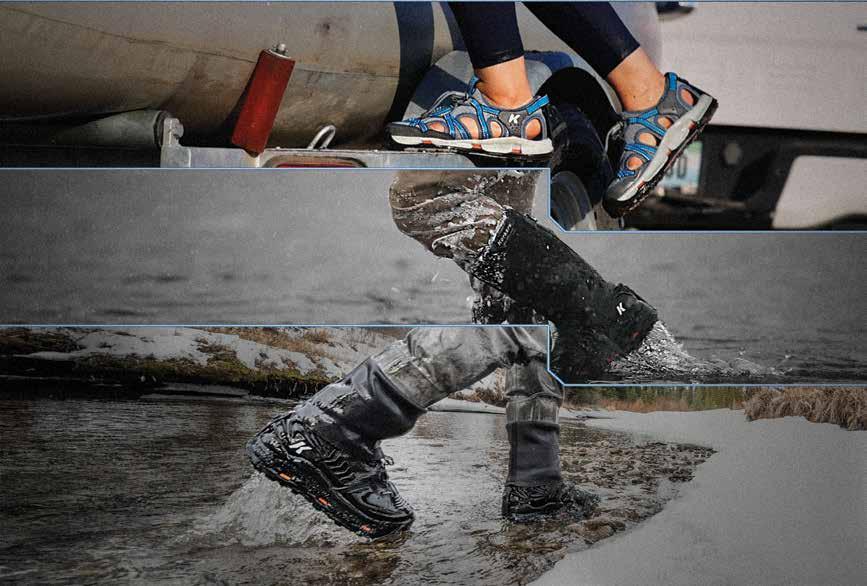






BY CHARLIE BOOHER
Our nation is in the midst of what will likely be recorded as the largest government restructuring effort since FDR’s New Deal. In the early weeks of the second Trump Administration, federal employees were relieved of their duties en masse, with more reductions in force on the horizon. There’s much to be said about how and why this is being done, as well as the merits of doing it at all. The reality is that the federal agencies that manage the public lands and waters of our country, and aid in the research, management, and conservation of our fisheries and wildlife, have lost thousands of employees—the full scope of which is still unclear months later.
All this is personal for me. As a wildlife biologist by training, many of the folks who have lost their jobs were classmates, are peers and friends, and many have been mentors to me and many others over decades-long careers in public service. It’s hard to see these folks— many of whom have mortgages to pay, growing families, and parents who rely on their help—now out of work. These firings, and the precedent they set, create uncertainty. And that uncertainty makes it harder, at the individual and family level, to justify pursuing the current menu of careers in wildlife or natural resource management. Many good, smart, hardworking people will leave the field for good or choose not to enter it in the first place.
These layoffs, firings, and overall reduction in force poses an immediate problem of essential work falling by the wayside. Tomorrow and in the decades to come, it poses challenges and, if we are willing and capable of rising to the occasion, some opportunities.
For now, to state the obvious, these scopes of work will no longer be accomplished. Trails on our national forest lands will go uncleared. Pit toilets at our national parks may go uncleaned. And
seasonally closed BLM and Forest Service gates may remain locked, for there is no one to open them. Many of these tasks are essential; the reductions in force pose an immediate or imminent threat to our wild public lands, waters, and wildlife—and the success of BHA’s work.
BHA continues to advocate both in D.C. and on the ground for our public land managers to have the resources and personnel they need to properly steward our shared lands and waters.
For some, it may be an open question as to whether an employee of the federal government is necessary to accomplish these tasks, or whether these tasks need be done at all to achieve the congressional charters of these agencies, but it should be universally accepted that those decisions ought to be made deliberately and with respect for the folks who have been doing these jobs.
In some instances, contractors, state employees, or other professionals may now be relied on to accomplish these tasks. And if they can accomplish high quality work for a lower cost, it would be good for all of us. But we must remain vigilant to ensure that this is the case.
Public land stewards, whether we see it as forced or created, must find opportunities to rethink and retool what it means to be a wildlife biologist, manager, or researcher. Hunters and anglers— direct and communal descendants of those who set up this whole thing in the first place—are well prepared for this new landscape.
Every agency, institution, or policy has a story. And an intimate understanding of the history and evolution of that body is integral to understanding what it was meant to and can achieve, as well as formulating a plan for its future. We must be clear about our priorities for public land, water, and wildlife, and advocate for the most efficient and effective means of achieving those goals.
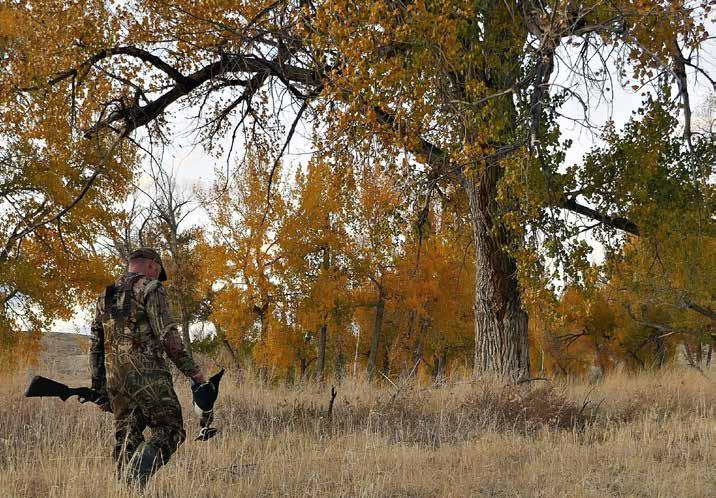
First and foremost, we must continue to ensure that the multiple use mandate of our public lands remains intact. Agencies like the BLM and Forest Service are tasked with balancing the production of our nation’s food, fuel, and fiber alongside recreational, wilderness (and Wilderness), and wildlife habitat. This will remain true unless Congress decides otherwise. However, as advocates for our own interests and equities, we must ensure that this balance is dutifully executed, and that there are enough of the right kind of personnel to do just that.
Further, this occasion also requires some understanding of the current landscape of workforce development in natural resource management. Today, the practical reality of becoming a “wildlife biologist” or a natural resource manager is years, if not decades, of school to achieve advanced degrees and credentials that are rooted in conducting academic research, rather than a training focused on the skills required of those professions on a daily basis. Those skills are often taught, or perhaps more appropriately, learned, on the job. Which raises an important question about what skills future members of this workforce will need, and what kind of training will be necessary to gain those skills.
As somebody with a handful of those degrees, I can say with confidence that I wouldn’t be where I am today without the theoretical knowledge and laboratory experiences gleaned from professors at Michigan State University and the University of Montana. However, it’s clear that our field’s biggest gaps in coverage are not folks with advanced degrees. The gaps and vacancies in our field are folks who can actively identify plants, who are willing to work long days fixing fences, clearing trails, and spraying weeds,
and those who can interface with a public who is increasingly disconnected from the natural world. These folks, just like those who are skilled in other trades, need to be heavily recruited, trained to hone the skills necessary for the job, respected, and paid a living wage.
In navigating the redefined future of our nation’s most fundamental public land and resource institutions, we must consciously center the resources on which we rely, while also respecting the time, training, and expertise of a workforce that has made significant personal and professional investments in these agencies. It will not be easy, just as it has not been easy for many individuals and families who have been part of this process thus far. But it is still up to us to ensure that our public lands and waters and the agencies tasked with stewarding them are left better than we found them.
BHA member Charlie Booher is a consultant at Watershed Results who specializes in natural resource conflict resolution. He has the great privilege of representing some of this country’s oldest, largest, and most generous conservation organizations in Helena, Montana and in Washington, D.C. Charlie is an Associate Wildlife Biologist and a Professional Member of the Boone and Crockett Club. Outside of the office, you can find him hiking in the mountains of Western Montana and re-learning how to hunt and fish in the Northern Rockies.
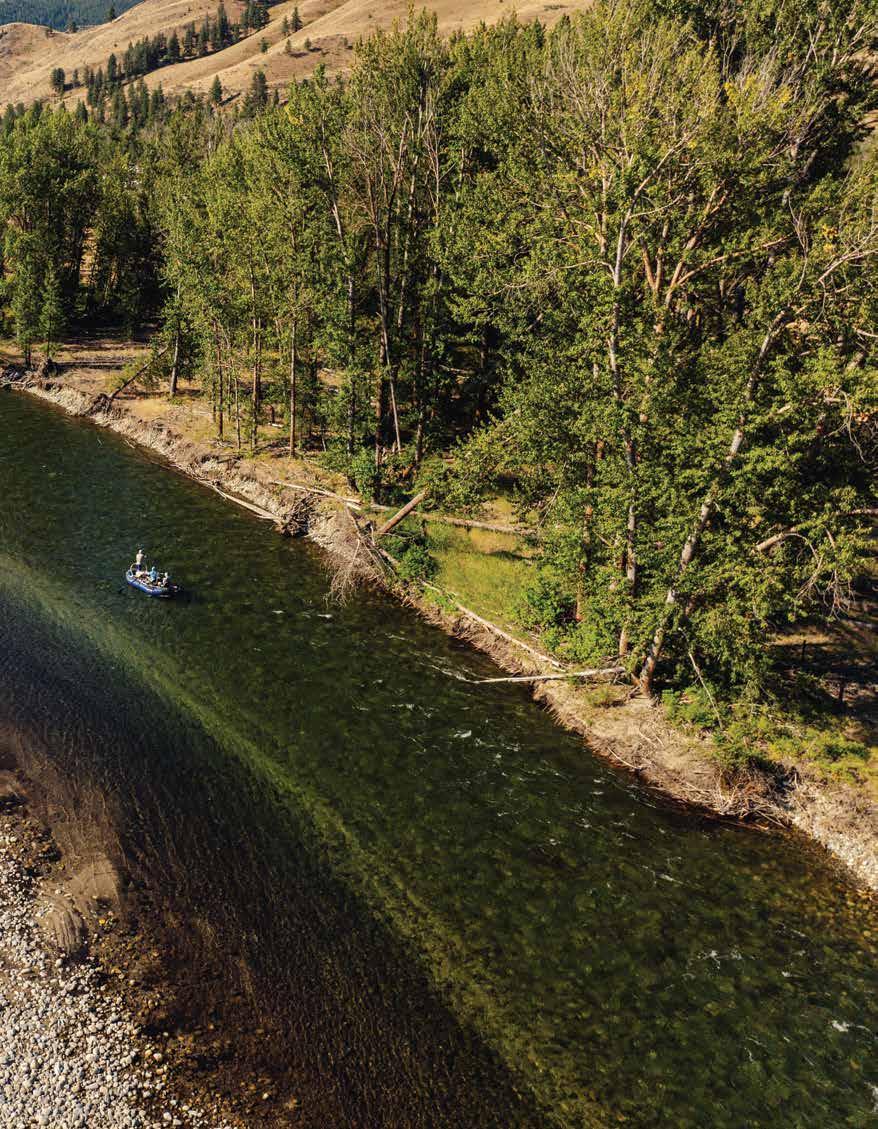

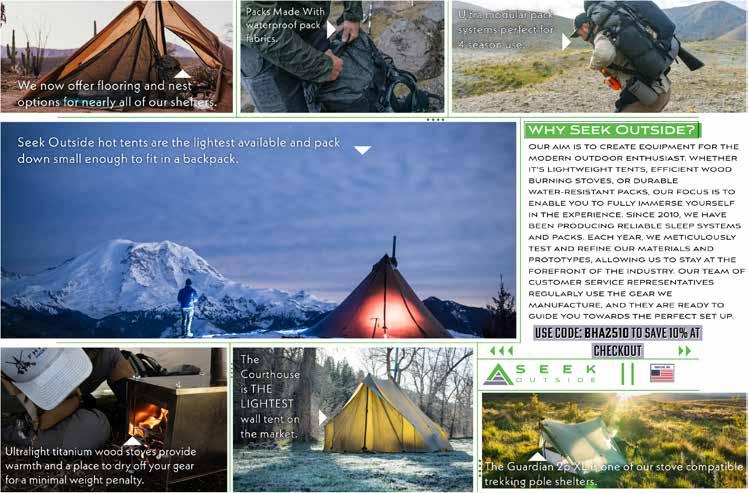
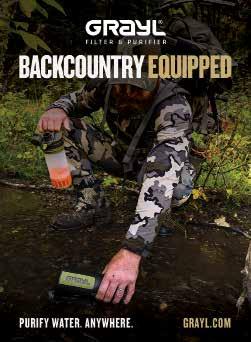



BY JEFF MISHLER
Twenty-five years ago I bought a compound bow and plunged headfirst into the woods to kill a bull elk. The previous twenty years spent hunting elk with a rifle proved to me that I could find them easily, but I wanted to talk to them, seduce them, and create a close encounter, much like hunting mallards or geese. I’ve used mouth calls, bugle tubes, and push button squeaky toys. When those didn’t work, I raked trees and belly crawled into range. I spooked my share of elk because I got a little too close. But that’s what happens when you spend a lot of time in the woods. You try something. If it works, you do it again. It helps to know what a real cow and bull elk sound like.
After three years of hard work, hunting from dawn to dusk, walking many miles and drawing my bow nine times before releasing an arrow, my first harvested bull came charging in looking for a cow in heat and I shot it at 32 yards. The arrow passed through cleanly. It ran off, bugled once, and died fifty yards away. Just like in the movies.
But that doesn’t happen often. Most of the time, we wonder what went wrong when the bull goes quiet or the herd runs away. So, I want to share my ten truths about calling elk on public lands during bow season, because that’s what I know:
1) Call with a purpose. Always. Are you a lost cow? Are you a cow in heat? Are you a calf trying to reconnect with the herd? Are you a hot bull taking on all challengers in the rut? Are you a young bull trying just sounding off after rising from a mid-day nap? Are you a meandering herd? Pay attention to where you are, where the elk might be and insert your presence into the landscape with intent. And because you are calling with purpose, always knock an arrow and step into the open before you call because the bull of a lifetime might appear from behind a little patch of reprod 40 yards away after that little mew you just made—and you can’t kill him with your arrow stuck in the quiver while standing behind a
bush. And since you are calling with purpose, make sure you give each set up enough time to evolve. Before the rut, bulls can be slow to come. Forty-five minutes is a long wait, but that’s what it can take for a curious bull to work his way over to your position after he tears up a tree, rolls around in a dust bowl and primps his smelly hide to make a good impression.
2) Hunters don’t answer cow calls. If you get a bull to bite on your little single reed squeaky toy, it’s real. Call again. If the bull cuts you off or answers immediately, get ready.
3) If the bull bites on the cow call, don’t use the bugle, that is until he doesn’t bite. Be ready always. They will come in silently too, or not at all. As a last resort or if you are confident the bull isn’t coming, rip off a strong bugle just for the heck of it.
4) If the bull bit on the bugle but doesn’t bite on the cow call and then goes silent, you won’t know what happened until it’s too late. Either the cows are moving and he’s leaving, or he isn’t hot enough. Always listen hard for sounds of traveling animals. A snapped twig, rustling limbs, or the sound of him raking a tree is your cue. If the next bugle is farther away, you have to run him down. The cows are leaving. Try to intercept their route. If you do, try to flank the herd. A soft cow call might just make him come over to check things out.
5) If the bull responds immediately to the cow call, and then bites again, closer, get ready because he’s on a rope. Find a set up with NO vegetation in front of you and kill him. The biggest mistake I see new hunters make in the movies and while hunting with me is thinking that they need to blend in by surrounding themselves with vegetation. In a forested environment, the elk cannot see you if you place a wall of texture behind you and open space in front. Wait for the right moment to draw because elk see movement better than you can imagine.
6) If there is a delay of ten seconds or so after your cow call followed by an angry sounding bugle, the cows are leaving and he is pissed off. You’re busted by the cows. I once located the biggest bull of my life with a really loud, hyper-mew cow call, but the

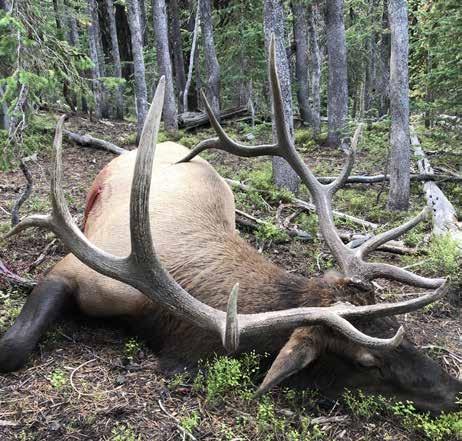
cows hated it and busted. He was heading out with his cows and we had to hump it a mile or so to catch up; the herd was heading for a different zip code. We killed that bull just before dark with one perfectly timed soft cow mew just as the herd meandered into the flat below our position. As the 6x7 stepped out of the firs to keep track of his harem, we made him believe one cow was wandering too far out to the left. He looped out and around to horn her back into the group. I was standing on his trail and shot him in the throat at 18 yards.
7) If you find yourself wandering about the forest and then surprisingly in the middle of a herd (and they aren’t spooked), don’t bugle. Take a moment to assess the situation. Quietly knock an arrow. If you are hunting with a partner, one of you needs to be in front. The hunter in back makes a soft cow call with intent. Why are you mewing? You are staying in contact with the herd and telling the bull, if there is one in the mix, that you are over here, wandering around. If he is up and about, he will come investigate. Be ready because it can happen quickly. If it’s pre-rut and you rip off a big bugle while standing in the middle of a herd without announcing your approach from afar, you will startle them all and just see asses leaving.
8) If you are in a calling setup where the bull is responding repeatedly, place one person on point and commit to that. The caller must see exactly where the point person is and note a landmark like a particular tree and then back off and start calling about 75 yards behind the shooter, placing them slightly down wind of the screaming elk. It’s a flat triangle with you and the elk at the ends of the hypotenuse. The shooter is in between. It is most important that the shooter does not move from their setup because I will be moving around behind them to pull the bull slightly up wind if the wind shifts or if the bull takes a different route.
9) Whenever possible, stay above or level with the elk you are trying to call in. Simple deal, unless the wind is wrong. Approaching from beneath has too many disadvantages but is often the norm for newer elk hunters. Elk typically climb to bedding areas, noses into the wind. If you are below them, you are behind them and won’t catch up.
10) If you are hunting alone and experience a bull that locks up (i.e. he won’t commit that last 50 yards), try this little trick when you set up on him: Locate the bull, sound like a herd of elk using everything you have in the tool box, and then use the terrain to run straight at him making all the noise you can, but don’t call again. Close the distance by 50 yards or more, choose a set up with open lanes and knock an arrow. He’ll come to investigate, but you won’t hear him coming.
An elk hunter can find countless examples of successful hunts in the media world. But it’s impossible to know what to do and when to do it in the heat of the moment unless you’ve spent a lot of time in the woods and had your own encounters. Each one is a gift, providing valuable data that you can learn from. Sure, some public lands hunters just get lucky. But when it does become intuitive, you no longer wonder which call to use, where to stand, or when to make a move. You just do it because it feels right. And that’s why I bow hunt elk. It just feels right.
Hunter, Angler, writer, podcast host—BHA life member Jeff Mishler‘s lifetime of outdoor experience fuels his desire to connect the culture of pursuit with society. While contemplating the perils of retirement, he runs head first into his next great gig.




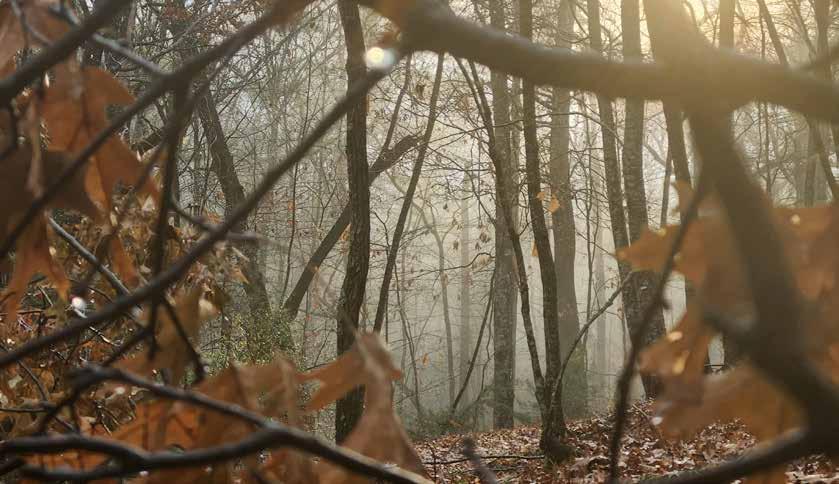
BY TROY BASSO
Imagine, if you will, that you take a solo upland hunting trip to the Upper Peninsula of Michigan. You’ve bounced around the GEM sites and have had great luck so far. Then, on day four, you take a nasty fall and end up with a compound fracture in your lower leg. It’s late afternoon, and you remember the temperatures are predicted to drop well below freezing that night. The good news is you have a map and a conventional GPS unit, so you know exactly where you are. The bad news is that there is zero cell signal, and no one knows where you are. Even if they did, they wouldn’t notice you missing until you didn’t come home.
On adventures close to civilization, cell phones and smartwatches are often more than adequate to get help. But when it comes to backcountry trips or true expedition-level adventures, you will most likely find a cellular device useless.
The emerging satellite technology of the 1980s gave us what today is the ability to never be “unfound.” With the 2014 release of the Garmin inReach, satellite communicators became commonplace for backcountry travelers. Today, we can use that technology not only to find ourselves but to let someone know we need to be found.
These devices, with the proper subscriptions, will lay out a breadcrumb trail to your location. This trail can be accessed by your loved ones, emergency personnel, and even be posted on your social media accounts. They also, when equipped, have an SOS button to use if a catastrophe strikes you or a member of your party in the field. The inReach and others like the Zoleo Satellite Communicator will notify the help desk and possibly initiate a text conversation with evacuation personnel. Note that not all devices allow free-form text, so pushing the button will send help regardless. If your device has free-form text abilities, you will get
some questions designed to help emergency personnel evaluate your condition and determine if you should self-evacuate to a set location. They will also use this information to choose the most effective way to rescue you, based on the terrain and weather.
Beyond emergency rescue, you can use most devices that have an active subscription to request weather reports—a handy feature in areas where you may be unfamiliar with the weather patterns—and to check in regularly with loved ones. This feature is great because if you check in at a given location and something severe happens unexpectedly, search teams know a starting point.
In order for these features to be 100% beneficial, you should have laid out a plan ahead of time that clearly lets people know where you should be and where you’re heading. If this is your plan, it’s best to let everyone know a window in which you expect to arrive at a given point and when it’s prudent for them to call for help. You don’t want your loved ones calling for search and rescue because you didn’t check in at base camp due to killing an elk and running late. The flip side is, especially if you adventure alone, you need to set parameters for your family. After missing a predetermined check-in, they should wait a certain amount of time before calling search and rescue. On newer models, your family can also send you a text to see if you’re okay or just delayed. For personal locator beacons to maximize the built-in technology, you have to have a plan, and more importantly, you have to follow that plan.
A final note for all satellite locator systems is that when you set them up (i.e., buy your subscription), you will have to choose a package. This will determine how often your device records your location and how many text messages you are allowed. Ensure you put some thought into what package is best for your adventure. Do you need a ping every two minutes, or is 10 minutes enough? If I am on foot, 10 minutes should be enough, but if I were
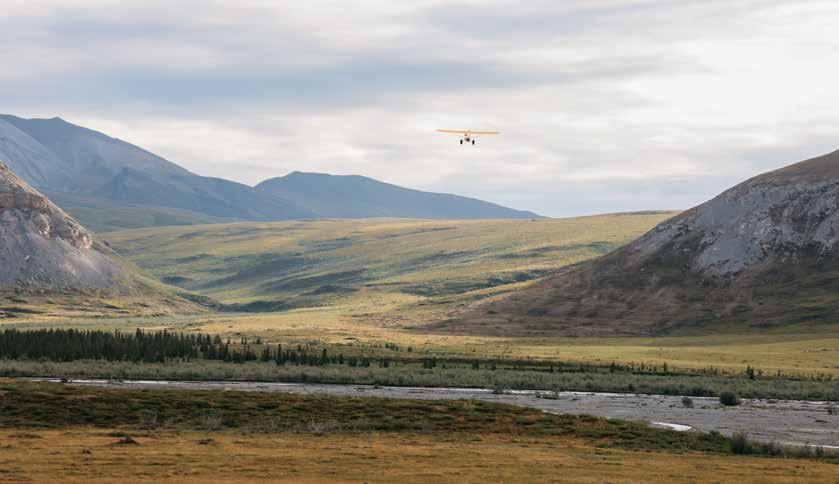
boating or mountain biking, I might want to consider the twominute ping. The choice depends on both the terrain and the speed at which you’re traveling. If you’re traveling by boat, that extra eight minutes between pings can be an eternity if you’re hurt and happen to be five miles from your last known location. Battery life is also a consideration, as the more it communicates, the shorter your battery life. It’s best to consult your device’s owner’s manual for the specifics of each device.
If you want one device that does both land navigation tasks and functions as an emergency satellite communicator, several options are available. I like the Garmin GPSMAP 66i simply because I can do more and carry less gear. The locator functions of these types of units operate, for the most part, the same as a personal locator beacon. The main difference is access to maps and satellite imagery on these devices, and the ability of free-form texting with others. The ability to communicate fluidly with rescue personnel may very well be the difference between life and death. In the event you have to move from point A to point B for a medevac, it’s helpful to be able to look at a satellite photo as well as a map of a potential landing zone. Once again, you must put some thought into which communication package fits you. Consider battery life, terrain, and the duration of your adventure before you choose.
In any conversation about staying found, one must consider adding a satellite phone to your safety net, especially for truly expeditionary trips to the most remote locations where
coordinating bush-plane or boat pickups may be necessary. These devices are your best method for staying in touch when you are actually out of touch. Satellite phone options are an article in themselves, but here are a few thoughts to consider. A satellite phone is not any more expensive than the latest cellular device. My Iridium Extreme 9575 works for me, and it costs less than my iPhone 14. There are three considerations when choosing a sat phone.
First is the coverage area since not all sat phones work everywhere around the globe. Second is battery life, as it relates to talk time and standby mode. Third is service plans. The real cost of a sat phone is the service plan you choose. Since most of us don’t need a sat phone in our day-to-day lives, I like to use prepaid airtime cards.
Finally, will a sat phone be a standalone rescue device or an extra layer of communication and safety in your adventure kit? Your choice; however, I would encourage everyone to make it an extra layer versus a standalone device.
In the last year, some limited cell phones have acquired the ability to use satellites for emergency communications. This will likely revolutionize backcountry communication in the near future. But, for now, this technology should not be considered a reliable form of wilderness emergency communication. Most importantly, always have a plan for when things go wrong. And always have a backup plan and a backup communication method. After all, you don’t just owe it to yourself but to your loved ones to come home safely.
BHA member Troy Basso is a veteran, fly fishing guide and outdoor writer. He resides in Tennessee and spends hundreds of hours in the backcountry of the Great Smoky Mountains.
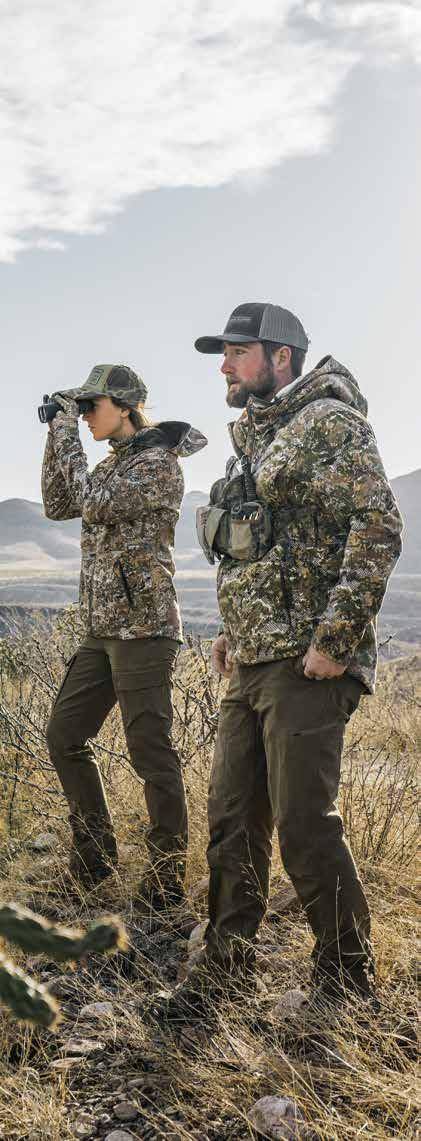
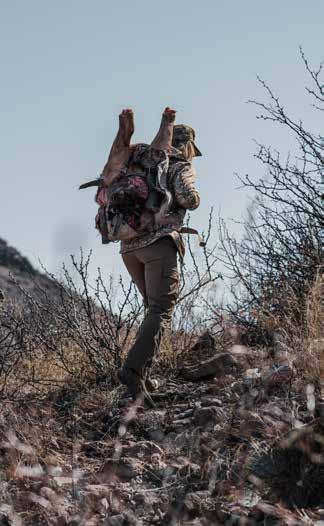
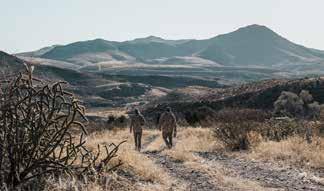


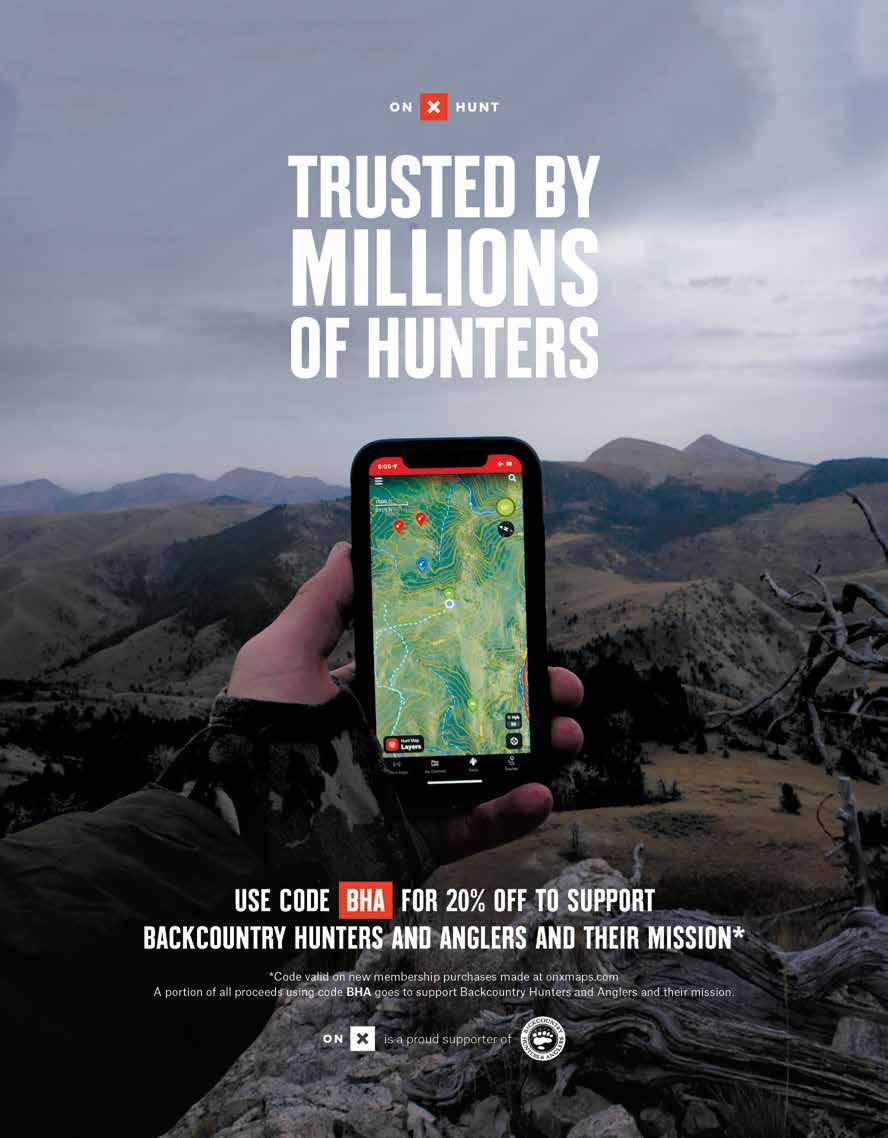
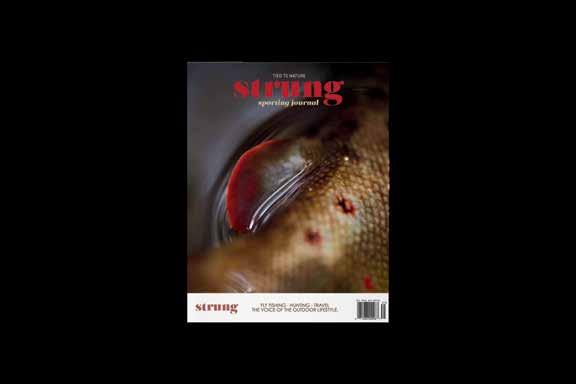
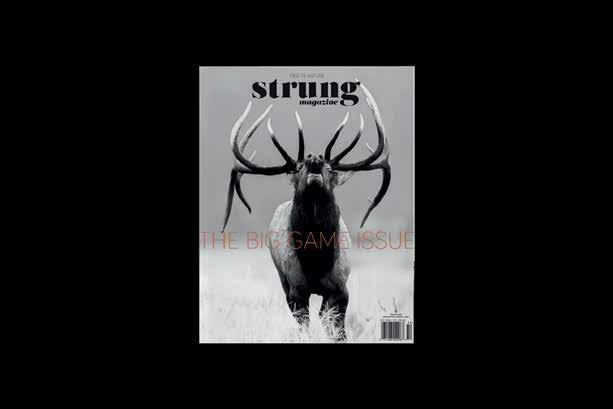

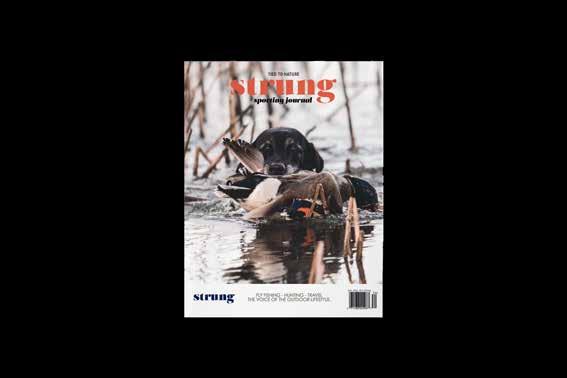
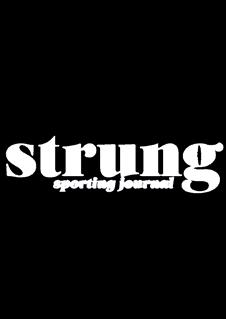

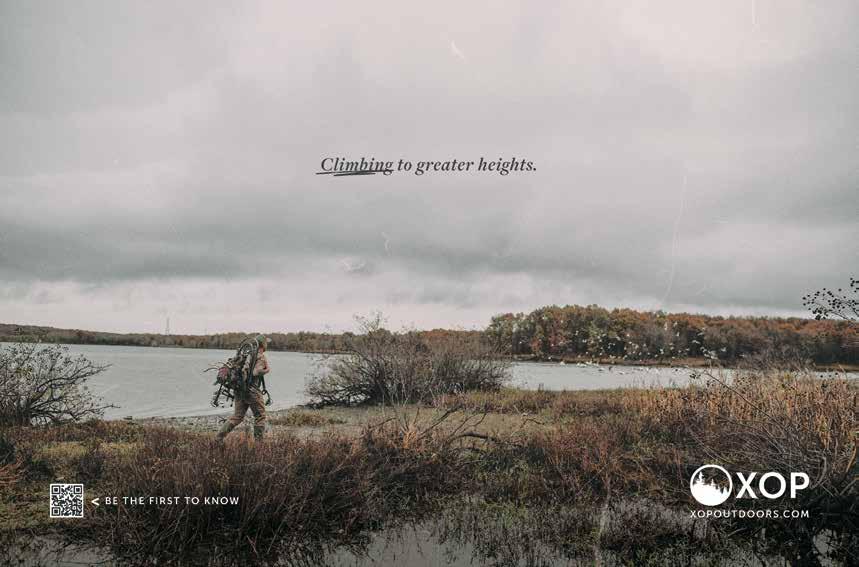
BY JOSEPH SIGURDSON
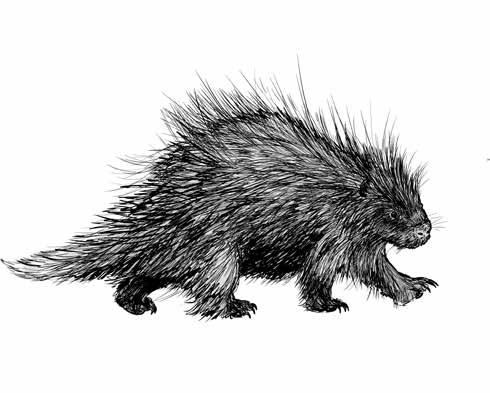
It was early morning, where our cabin and the surrounding woodlands were soundless save for the small choir of birds and the soft and lazy steps of feet and paws on the wooden floor. Fall in Alaska. It was not cold enough for the wood stove to need a constant burn, but it was getting there. I unlatched the heavy cabin door and let the dogs out to go to the bathroom. The cool smell of soggy bark and soggy foliage fluttered into my diaphragm, and I felt all right. This world was all right.
But before I could even get the coffee going, Charlotte and Ruth were hollering, and then Mary and Barbara joined right thereafter. Houndsmen know the meaning of the different barks from their pack. The tone, the duration, the intensity. This bark said that they found an animal, and an animal that wasn’t fleeing. Moose was my guess.
I ran out there without my contacts in and could barely see a damn thing. I followed the sound of their barks and found their blurry figures all underneath the cabin. So not a moose, probably a weasel, but maybe a black bear. Now I was worried and started hollering at them to back off, all the while leaning over and squinting. When I really raised my voice, the dogs calmed down a bit and moved out of the way for a moment. The animal wasn’t bear-sized. I crawled under there, pushing Ruth aside, who had barked so hard she was foaming at the mouth. It was a porcupine.
“Oh,” I said, “a porcupine.”
Initially, I intended to just leave it, but when I looked at the girls, I saw such an intense want. Ruth had never foamed like that. Charlotte’s eyes bulged. I knew porcupines were edible, so I shrugged and said, “Okay, why not.”
I ran back inside and quickly put my contacts in, then grabbed the .22. Again I had to shove the girls out of the way so I could get a shot at it. Wherever I was, the porcupine moved its head away, so I shot it twice in the chest, and it quickly lost consciousness and died.
I examined the critter and found that it had no quills on its paws, so I dragged it out as if we were holding hands. The girls came to it, and their noses danced. Ruth, Mary, and Charlotte had a few quills stuck in their snouts. I put the dead critter atop a decaying car so they couldn’t get at it, then got the needle-nose pliers and
plucked the quills out. They yelped with each pluck. Mary gave me the hardest time.
“For the love of God, Mary, just hold still.” I had to put her in a sort of headlock to get them out.
I lived in a Yup’ik village and had already built a reputation among the locals as a weird-meat eater. I ate squirrels—little pine squirrels because that’s all there was. They found that bizarre. I’d defend myself and say, “You eat Arctic lampreys.”
And they’d say, “What’s that?”
“What you call eels. Those aren’t eels. Those are lampreys. They’re like leeches.”
Some of them also ate fermented salmon heads. They buried them in the ground, then waited I don’t know how long, then exhumed them and ate them. They called them stink heads. Stink heads were dying in popularity by the time I got there, though.
If you go to one of these Yup’ik villages, they might tell you to ask an elder for a Yup’ik name. Mine is Quiguiq. That means squirrel. Lots of people there called me Squirrel or Squirrelman. It was meant to make fun of me, but I actually liked it. Squirrel—I wore that name with pride, truly.
So I dressed the porcupine like I would any animal of that size, just more carefully. I slid the knife into the lower belly and continued to its neck with upward jerks. Porcupine guts are all wrapped up in one membrane, which I’ve seen on no other animal. If you’re careful and don’t nick the membrane, you can pull out all the guts in one sack, as opposed to the sloppy handfuls.
So I got the guts out, then started to get a bit impatient and ended up getting quilled a few times. It was all right. When all was done, I burned the skin because I knew the girls would get into it, even if I buried it.
Inside, I washed the blood and filth from my hands, made coffee, lit a pipe, then got to work. I rinsed the meat and then, with a little knife, sliced it from the bone as close as I could. I was left with a plate of red chunks and shavings of meat and a pile of fleshy bones. I’m not any good at cooking, but I’m also not picky. I threw it all on a pan with butter and some seasoning that was meant for steak, the same way I cooked damn near everything.
When it looked ready, I divided it up into all of our bowls. Porcupines are big for a little critter, but they aren’t much to feed
a man and four dogs. That was all right, though. We were all grateful nonetheless, as I’d become ever since I started hunting, and as they had always been because they’d all been abandoned by their first owners and left to scavenge through the trash.
I blew into the steaming meat and then ate. “It sort of tastes like a pork chop.” I looked at the girls. “Isn’t that funny?”
They’re really not bad at all. It was the second time I shot one that I theorized why they’re not commonly eaten by hunters. They stink, but more importantly, their stink lingers and lingers. At first, it’s not so bad— like a somewhat sweaty armpit lathered in wintergreen deodorant. But it doesn’t go away, and it gets into your nose, and suddenly you’re kind of queasy. Anything will taste bad when in that state. And that’s why I think so many have reported the taste as being off. I learned this because I dressed that second porcupine inside the cabin, and it took a week for the smell to get out. Learn from me— dress all porcupines outside. Eat them the next day. It will taste sort of like a pork chop.

The girls got good at finding them. It was later into autumn, and with each morning that soggy scent had frozen and ceased, only to gently return with each rising inch of the sun. The woods of Alaska are like the jungle. I was pushing my way through the vines and branches, ducking at odd angles.
Then came the bay of Charlotte and the barks of Ruth, joined right thereafter by the barks of Mary and Barbara. I knew it was a porcupine. They never got so excited otherwise. I pushed through all the barbed spruce branches, probably ripping my pants, to get to them. Before I made it, Barbara came back, since she was always more interested in protecting me than hunting. I saw a few quills protruding from her snout and neck.
“Uh-oh.”
I quickly plucked them, then had her show me the way. When I arrived, Ruth was pawing at her face in a way I had never seen before. Mary and Charlotte were circling the porcupine like wolves. It tried to bring its back to them and club them with its tail. Charlotte lunged at it and chomped down on its tail, then jumped back and cried.
“God dammit, no!” I hollered.
I ran up to the scuffle and pushed the dogs away with my legs, then pumped a shell into the 12-gauge and placed the barrel at the porcupine’s head and fired. There was the bang and then the squelch of exploding skull and brain and teeth. Steam hissed from the flesh beneath where the head once was. It was gruesome, and I didn’t like it at all.
Ruth and Charlotte rolled around in pain, scraping at their frothy and bloody mouths. They were absolutely covered with them. Back at the cabin, it took me hours plucking the quills out one by one with the pliers. Ruth had it the worst. Over a hundred, truly. All through her mouth and tongue and lips. By the time I was done, ravens were pecking at the headless porcupine that lay upon the decaying car. I shooed the birds, then packed the dead porcupine into some unscented garbage bags and hid it in the trunk. It would
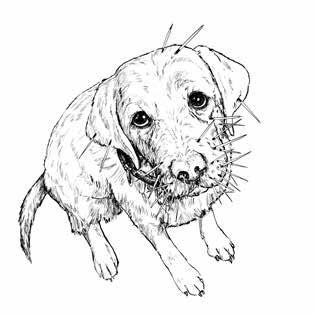
get cold enough in the night to keep it good.
We ate it the next day. Ruth and Charlotte chewed in pain. I asked them, “Was it worth it?”
I think if they could have, they would have said, “Of course.”

Life got in the way of things, as it does, and we ended up leaving Alaska. All five of us got in a 4Runner and drove all the way to upstate New York, where I’m from. It took eight days.
No one in my family hunts, and I had only started hunting when I moved to Alaska. The girls and I were self-taught. I wandered into the Alaskan wilderness with my shotgun, and these abandoned village dogs followed. They quickly learned the objective, and it quickly became their everything entire. I think they’d fall into a depression if we gave it up.
When deer rifle season came around in New York, I planned to have us stay home—too crowded. That always made me miss Alaska. I never had to worry about that sort of thing up there. I stepped on land that had last been stepped on by a man hunting with arrowheads of stone—or never stepped on by a man at all. It didn’t matter where we were, though, to the dogs. They were relentless in begging me to take them out there. So, I picked a batch of woods that had no trails, that was thick and viney. A patch of woods I hoped no deer hunter would be bothered with.
I parked on the snow-sodden gravel road, having seen a few trucks a ways down. I was nervous. I knew lots of deer hunters didn’t take too kindly to you ruining their hunt. Even more so when a pack of dogs ruined it. But we were here now, and there was no going back.
I looked at the girls. They were so excited. I said, “If we stay off the trails, I think we’ll be okay.”
I opened the back door, and the four girls leapt out. Noses to the ground, they circled around in different directions. We pushed into the brambles that were draped in snow. It covered our coats. The dogs dashed and pranced through these brambles, creating slow, falling showers of snow that looked like apparitions.
We carried on. The thicket was parted by a stream, and I stopped and observed. The rest of the thicket spread uphill. It would be a good place for grouse, I figured. We’d already taken some shots at a few that season but hadn’t dropped any.
I lived in a Yup’ik village and had already built a reputation among the locals as a weird-meat eater. I ate squirrels—little pine squirrels because that’s all there was. They found that bizarre. I’d defend myself and say, “You eat Arctic lampreys.”

We carried on. The girls hadn’t stopped running since we’d left the car. Their tongues danced aloll. Ruth always looks like she’s smiling when she does that. The vines were brutal and thorny, like Alaska, but it did not stop us. Some pine squirrels chattered in the distance. Little birds landed on the vines here, there. The sky was gray and sunless.
Up and over the hill, we found another stream or perhaps the same one. We followed it up, and the thicket became an old forest of pine. Mary jumped up on something. Stacked rocks, it seemed. I made my way to her, stepping over the rotten and now frozen deadfalls. It was the foundation of an old house. If there was once a wooden floor here, it was now gone. I kicked around the snow and brought up dirt and twigs and pine branches. No artifacts to be seen—just a few feet of stone wall. The girls sniffed about, then exited. I stuck around for a bit. I guessed where a bed would’ve once sat, and I touched a rock in the wall beside it. I tried to imagine the person who lived here, lying in the candlelight, stroking the same rock, learning it with his fingertips.
I carried on and found the girls. I was still nervous about the deer hunters. There were no boot tracks other than my own and no trails save the secret trails of wild animals. Barbara came to me. “I think we’re good,” I told her.
We continued up the stream again. It was thin and shallow, its current lumpy from the rocks. The water in forest streams always looked so much cleaner in the winter. I liked watching the clumps of snow fall into the current and be taken a few feet down only to become part of the stream itself.
Then Charlotte’s bay came from far away, followed by Ruth and Mary’s barks. I hadn’t even noticed how far they’d run off. I was worried that they might be barking at a deer hunter in a tree stand, so I ran to them, leaping over deadfalls, plowing through slouching branches.
I found them further up the stream with their forepaws on a pine tree. All three of them were like that, as if this were some canine
ritual to the goddess of the forest. I approached and saw no hunter up there, but instead, a porcupine. It lay on a branch, motionless. They resemble a bird’s nest when they’re up there like that.
I didn’t have high hopes for the grouse, so I decided we’d take it. I had to push the girls away from the tree. “When I shoot him, he’s coming down hard, so get out of the way.”
And it was so. After the blast, the fat critter rolled from the branch and slammed onto the ground. All the girls dashed to it but then halted and only sniffed. They had learned their lesson. I stood before the porcupine, and I tapped it with my boot and then rolled it over to make sure that it was dead. Its paws twitched a little and its mouth opened as if to breathe, but it didn’t. Its eyes became passive, and it died.
I looked around. The spot was ideal. There was a small, flat clearing where the porcupine landed that would be great for a fire. There was plenty of dead wood around. The stream was right nearby. It never works out that perfectly, but on that day it did.
I snapped brown and rigid branches from the dead standing trees. It began to snow. The dogs sat patiently around the dead porcupine, while the snow slowly collected on their coats. I dropped the whole bundle of sticks and brushed away some snow and set the coils of birch bark aflame. Some men drop the porcupine in the fire just long enough to scorch the quills, then they skin it. I had tried that back in Alaska and decided it wasn’t for me. As long as I was careful, I would only get poked once or twice.
When the fire was hot and healthy, I went to work with the knife. I hung the sack of guts in a tree, so something that wasn’t my dogs could eat it. I burned the skin and the paws and the head. They popped and hissed and slowly turned to char. I rinsed the meat in the stream. Blood and bile colored the water and drifted away. I placed the meat in a pile of snow. It now looked cleaner than meat from the store. I rinsed my filthy hands in the stream, and the water was terribly cold, so I rushed back to the fire and warmed my hands. I roasted the meat on a makeshift spit. It was uneven and frail, but
The meat was slow to cook, and the sticks burned quickly, but that was all right. I gathered more and turned the spit, relishing these woods and the way of the hunt without noticing how much I was relishing them. It is often like that. When the woods take hold of me, I don’t notice until I’m back at home, with hot tea and Barbara at my feet, reflecting and typing.
it worked well enough. The meat was slow to cook, and the sticks burned quickly, but that was all right. I gathered more and turned the spit, relishing these woods and the way of the hunt without noticing how much I was relishing them. It is often like that. When the woods take hold of me, I don’t notice until I’m back at home, with hot tea and Barbara at my feet, reflecting and typing.
When the meat was finished, I lifted it from the fire and let it cool. Smoke rose from the meat into the cold air. Snowflakes fell upon it and melted immediately. We ate it piece by piece. One for me, one for Barbara, one for Charlotte, one for Ruth, one for Mary, repeat.
We had been there quite a while. I rinsed my hands again and warmed them again, then kicked snow into the fire. Our kill site was lurid—blood all over the snow, guts in the tree, and the charred bones and skull in the smoking pit. It would all soon be hidden by the snowfall, though, and the guts would be scavenged by crows or perhaps weasels. It would all be returned to the Earth in time, as all life will.
We followed the stream back, through the pine forests, through
the snagging thicket. I opened the hatch of the 4Runner, and all four girls jumped in and curled into their blankets immediately. We left the rocky forest road and passed the farmhouses and the snowy fields and made it back to town. Cars all around in the salty slush. Ratty gas stations and fast-food chains with cold and grouchy patrons hurrying in and out.
At a red light, I burped up the taste of porcupine. I looked around at the modern world, looked anxiously at the light, while the primitive taste lingered on my tongue. For just a moment, I felt like a stranger.
New BHA member Joseph Sigurdson hunts with four rez dogs he adopted along the way. They’ve covered ground in remote Alaska and upstate New York. Next up is Mississippi. In addition to hunting essays, Joseph writes fiction and scholarship on 1st century Christianity.
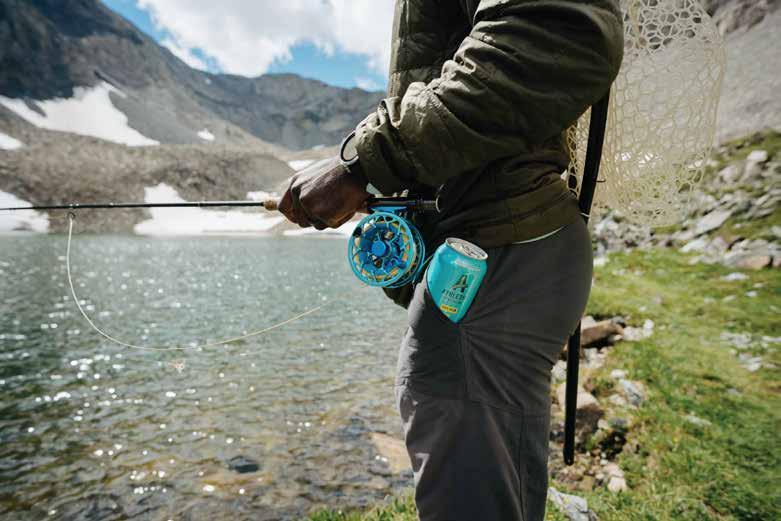







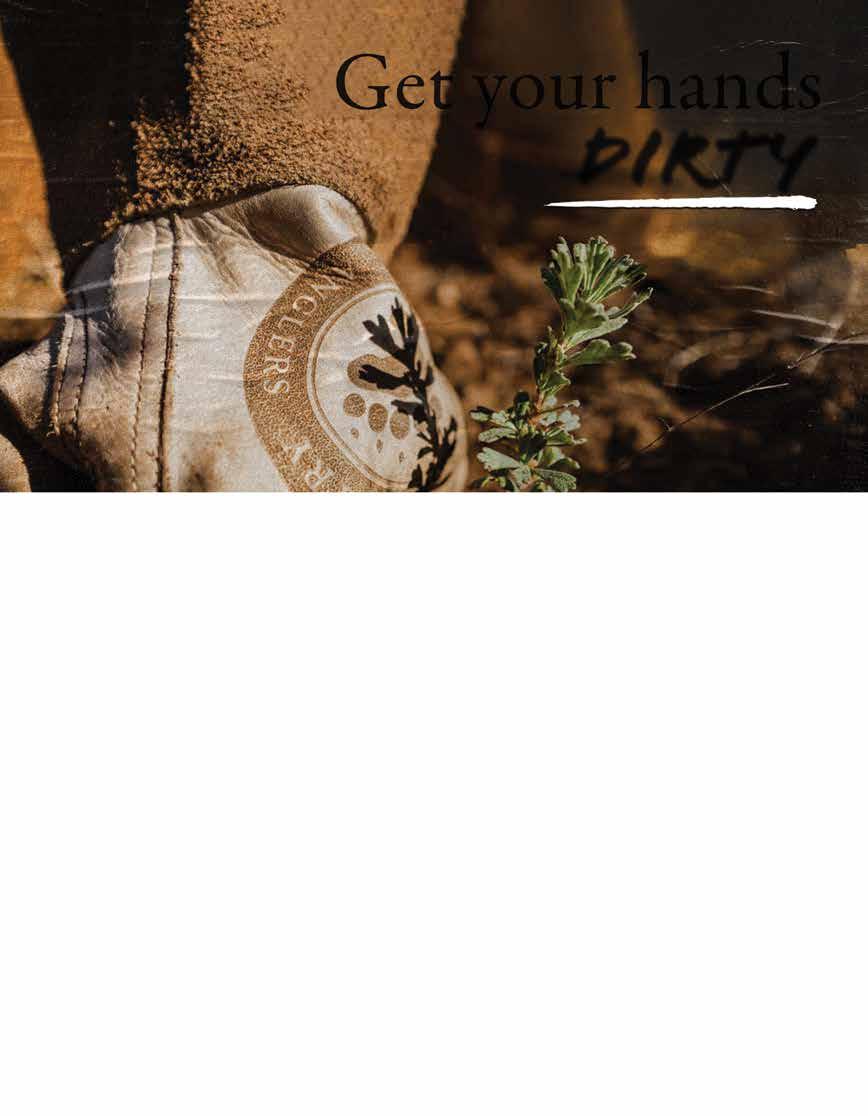
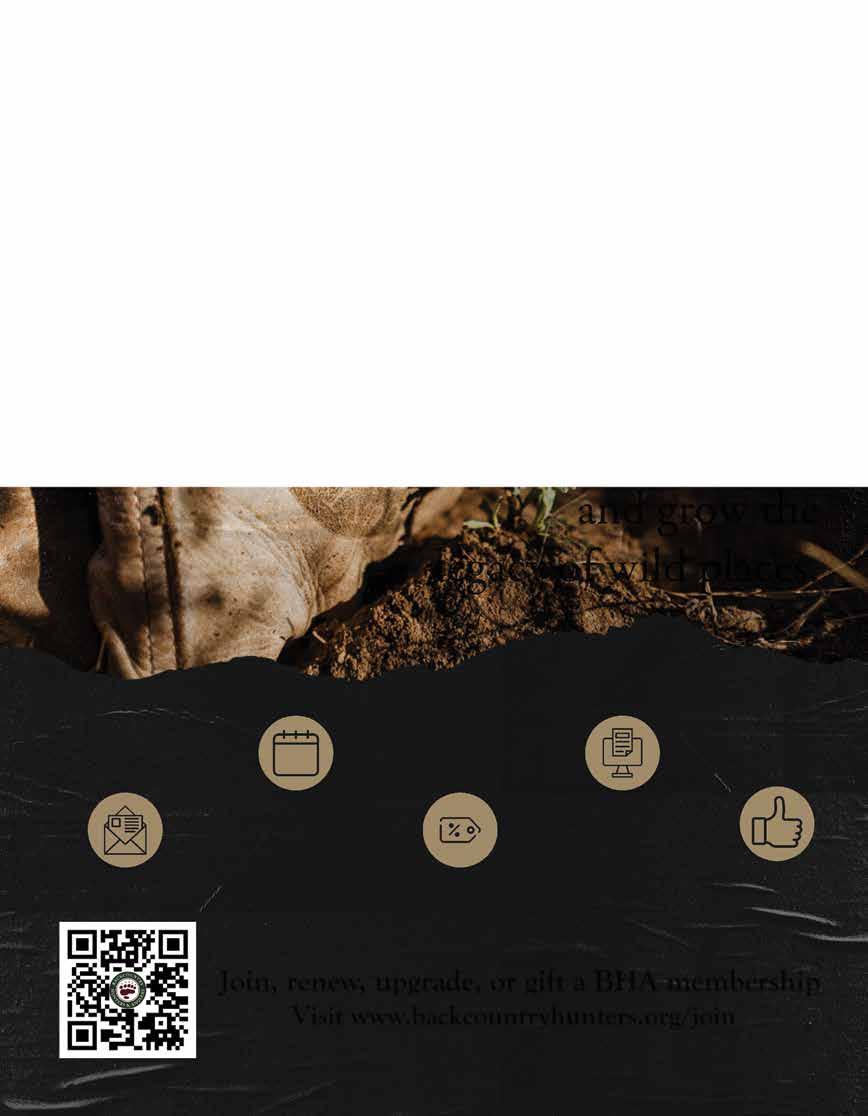

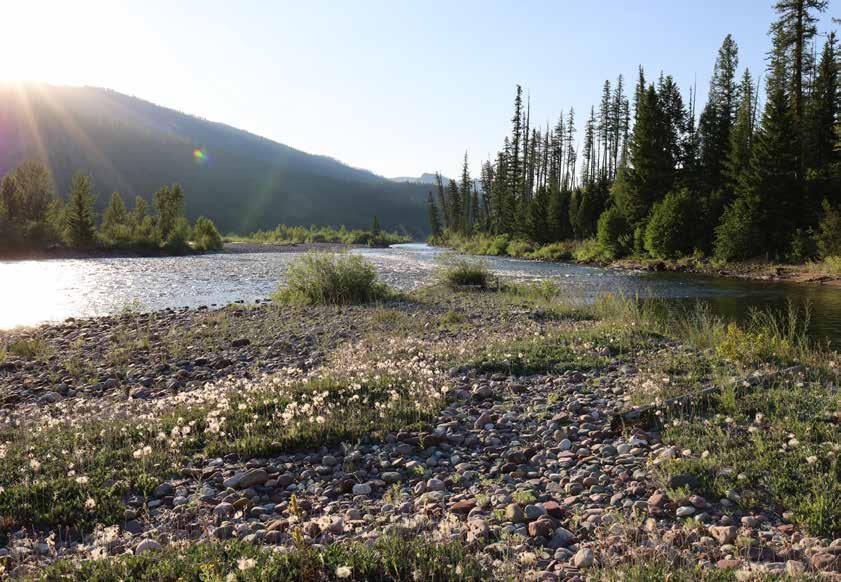
BY McKENNA HULSLANDER
I rummaged through the basket of cords—I knew the charger for the inReach could be anywhere. My millionth trip to the garage, I took another glance at the massive tarp on the garage floor, which displayed all the necessary gear I had slowly accumulated and was now supposed to somehow fit in my pack. I grew up chasing my brother and the fish upriver each summer, but I had never ventured this far—to its remote source, hidden in undiscovered wilderness.
Through careful selection, I placed dry flies in my father’s old fly box. On one side of the box were various dry flies that were more familiar to me than the calluses on my hands. On the other side, I placed large streamers, which seemed as foreign to me as the moon. Having spent hours on the phone learning all I could from people who dedicated their lives to this place and these fish, I marveled at the idea of finally catching what I had been chasing for years: wild, native bull trout. I wondered what it would be like to finally see one in my net. The excitement and nerves in my stomach brought an even deeper attention to detail—and an even heavier pack.
In the early morning, I rose before my alarm and before most of the state of Montana. The first day was going to be the hardest, and I braced myself and my feet for the grueling trip up and over the mountains.
Gaining almost 3,000 feet of elevation in six miles, I made it
to the first lake that hid in the saddle of snowcapped mountains. Filtering cold creek water and opening my favorite freeze-dried lunch, I acknowledged that I was not even a third of the way there.
Growing up with an older brother, where I always feared I would be left behind, I hurried my pace as I had learned how to do, and the miles melted away. Forgetting to enjoy the wild country that was before me, I passed a pack of mules and a cowboy swaying to the rhythm of his company. Little did I know that he would be the last human encountered for days.
It’s a wonder how we can spend so much time and effort to escape wild places, with the honorable intention to be present in them, but more often than not we fall asleep to the repetitive steps and our minds wandering to other places. Or maybe that’s the point? Maybe it’s the way the backcountry makes us feel, exposing our weaknesses and uncertainties, or just gives us time and space to ponder. Either way, grace seemed to surround me, and I felt more at home than ever.
Crossing over a creek, my bare feet, with the start of blisters, reveled in the cold, rushing water. I’d like to believe that these waters are a part of me somehow; I depend on them just like the blood in my veins, and they run directly to my heart.
Ten miles in, I take off my pack and lean against a large tamarack tree, opening my first bag of candy with not a care in the world.
At mile 13, I came across a waterfall that seemed hidden from
Heaven looks different to everyone, but I knew this was mine.

Seeing the faint reflection of myself in his deep black eyes, I wondered what he saw. A part of me would like to believe he felt I was worthy enough to experience him: Maybe he saw a young girl who had spent hot days and long nights chasing after him? A girl who would spend summer after summer forging upriver to untouched waters, searching. Who would spend nights sleeping under the stars, deep in the woods surrounded by what used to scare her but now felt like home.

any map. Taking only a moment to enjoy it, I trek on. Crossing over more creeks and through the scars of old burns, my back was making it clear all the ways I had misused it, and my feet started to look like a war-torn mess. I dove back into my candy and began to hum to my favorite Willie Nelson song—blue skies were indeed shining on me.
Already 7 p.m., there were still five miles to go, and I had yet to eat dinner. Pack back on, I felt every uncomfortable ounce on my shoulders. I told myself I could do it, only half believing it. Passing through another large burn filled with wolf tracks and bear scat, the sun slowly crept behind the mountain, and the sky’s orange hue reminded me that light was slipping away.
At a large creek with deep emerald pools and trees stretching far across, I marveled at the idea of how many streams might still be out there, unknown to anyone—created regardless of whether someone would be there to appreciate them. I watched it meander through the woods, and everything that hurt seemed to fade away. I could picture myself wading across each bend, with only the elk to talk to and the wind to hear. A part of me lived here, and I left her to wander.
I hiked until 10:00 p.m., arriving at the lake just as the last of summer’s light faded away. Math was never my best subject, so misjudging what turned out to be 23 miles for a 19-mile hike did not come as a surprise to me.
I fell asleep to the rhythm of rising trout.
The next morning, as the sun warmed my face, I rushed to put my fly rod together—a habit I couldn’t rid myself of. Seeing my first cutthroat rise, I screamed in excitement. Heaven looks different to everyone, but I knew this was mine.
I peered into the blue water, wondering how long I could stay here and how many different fish would come to greet me. Then I saw him, hiding behind a large log at the mouth of the river. Swimming like a great white shark, he looked as though he was the wisest bull trout of them all. It was like hearing the story of Casper the ghost, but then actually seeing him in your attic. After tying on my first random streamer, I threw it as far up in the river as I could and let it drift down. A small part of me believed I might have been able to hook him on my first go. Tying on another fly, and then another, nothing seemed to spark his interest. Lost in confusion, I got out of my packraft and slowly crept down the river. Clay filled my toes, and the freezing water numbed my legs. As I crept further downstream and more into the lake, the water rose over my waist and up to my chest. I threw the fly upriver and waited for it to swing down in front of his nose and then began quick strips back upstream. Almost immediately, he hit it and ran down deep and as far as he could go. My reel zipped to its backing as I struggled to keep both tension on the line and my head above water. My fly rod bent to such a drastic arc the tension now transferred to my arm. In my heart, I attempted to enjoy every second, but I wavered in fear
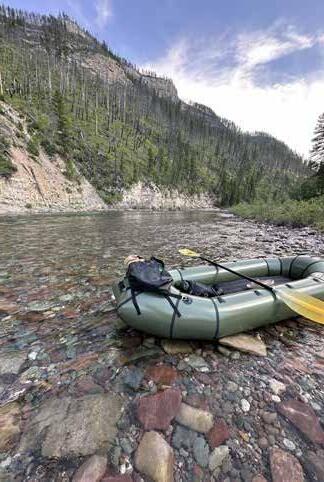
of him breaking off. Then I saw him. White outlined fins and pink spots shimmered in the crystal-clear water. As I scooped him into my wooden net, I wondered if I was the first person he had ever seen, and for a moment, my world flipped upside down.
Staring into his thick black eyes, shaded with blue and enclosed with a hazel brown ring, I saw them shift to meet mine. Seeing the faint reflection of myself in his deep black eyes, I wondered what he saw. A part of me would like to believe he felt I was worthy enough to experience him: Maybe he saw a young girl who had spent hot days and long nights chasing after him? A girl who would spend summer after summer forging upriver to untouched waters, searching. Who would spend nights sleeping under the stars, deep in the woods surrounded by what used to scare her but now felt like home. Most evenings she would return with wet shoes and scratched legs, feeling vulnerable enough to let herself experience such a place. She would eventually learn that a piece of her belonged here, untouched and discovered only by her. As he peered back at me, maybe he saw the story of a girl who thought she was out to catch a fish but found something more entirely. She spent her days looking for him but ended up finding herself.
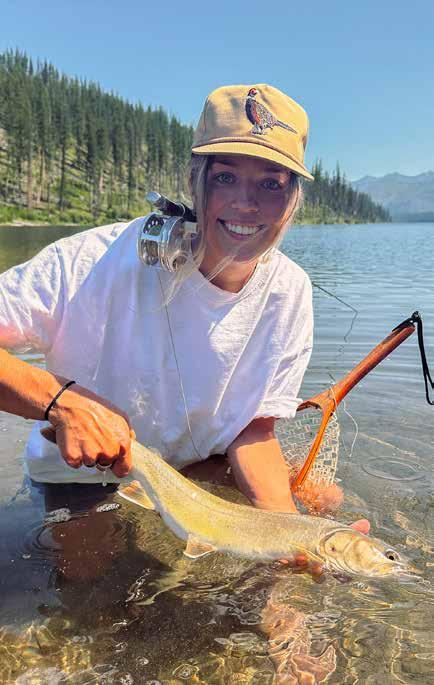
but the love in my heart. He’d see the girl who ventured far into the woods, now a young woman, but still holding the spirit of her childhood. I watched him swim away and knew both this moment and my story would be fleeting: one of a fish and of a girl, and of the relationship between the two, bound by the love of wild places and the desire to conserve them.
As I felt his tail slide from my fingers, I knew I could hold him only for a moment. My life felt the same: only here for a moment— and never meant to be kept. Maybe one day I would return much older, and he would recognize me, not by the wrinkles on my face
Always on the move BHA member McKenna Hulslander owns Outcast Adventures in Whitefish, Montana, guiding groups of women on backcountry retreats. Having grown up in Whitefish, she spent her childhood exploring Montana’s wilderness and learning how to fly fish from her grandfather and father. As a fly fishing guide, she believes in the importance of conservation and hopes to continue the western traditions passed down to her.


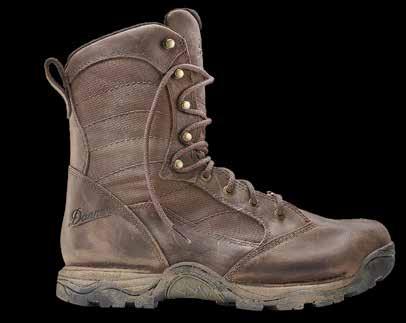
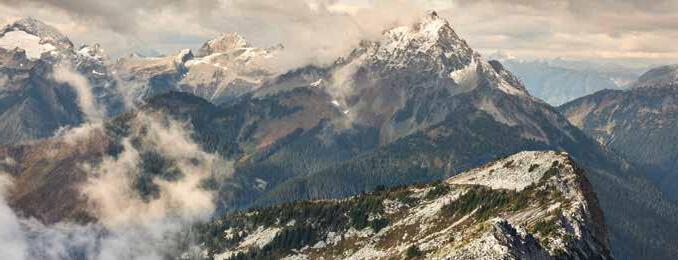


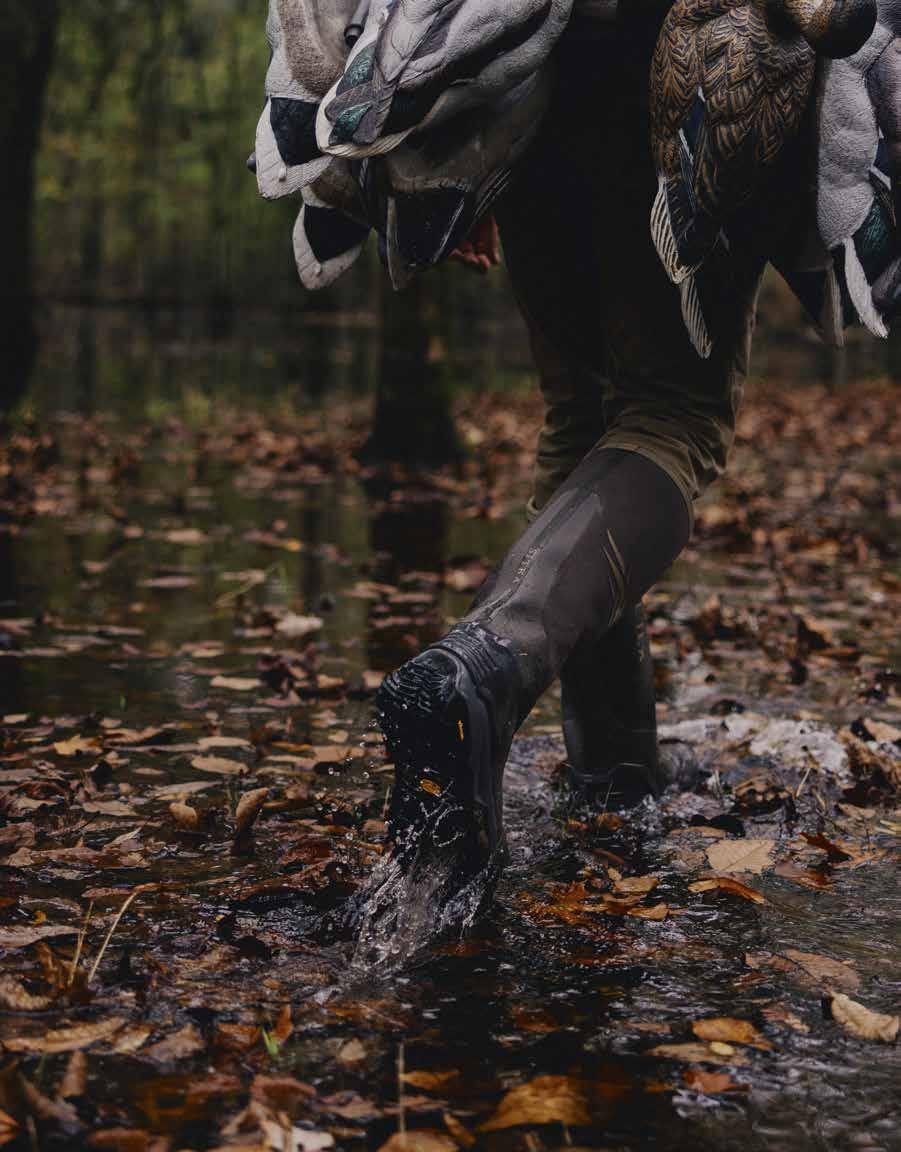
ULTRALIGHTWEIGHT COMFORT
FULL GORE-TEX CONSTRUCTION
SITKA APEX TREAD SYSTEM FOR MAXIMUM TRACTION
TEMPERATUREREGULATING INSULATION

Limb-lining catfish in the Arkansas Delta
BY JONATHAN WILKINS
When Robert Johnson sold his soul to the Devil, it wasn’t happenstance that the deal was done at a crossroads. Obviously, there’s a metaphor there about a person choosing a direction for their life, but it goes beyond that to something deeper. Something primal, something innate. I’d argue that the crossroads are really emblematic of a surety of the human condition. We all experience the most powerful moments of our lives at points of intersection. Where one thing meets another.
Life and death. Love and hate. The sacred and the profane. It’s where all of the big stuff comes from and where all of our strength is derived.
Folks talk about proving oneself as finding where the rubber meets the road. I’m pulled to find where the water meets the land. Where it changes from one to another so gradually the differences become difficult to perceive. I locate those consecrated places where the muddy, meandering waters of the Cache River slide out onto the impossibly level terrain of the Arkansas Delta—until the water becomes the land. That in-between is by definition where bayous are found and the place I choose to pursue that noblest of the maligned aquatics, the catfish.
Bayous trickle, they do not rage. And to my mind, they are best suited to methods of take that speak to their pace. I prefer the simple, old-time Southern method of limb lining for catfish. For the uninitiated, these are passive methods of take, more akin to running a trapline than the rhythmically repeated and targeted procedures of fly or spin casting. I’ll spend a few hours of a springtime afternoon in a flat-bottomed johnboat, slowly traversing a skinny channel in a cypress brake. Paying attention to the ancient trees that form the
edge of the channel, I look for branches that poke out over the water like the gnarled limbs and digits of a centenarian. They must be stout enough to serve as an anchor, but flexible enough to also work as a rod. The springy malleability of the branch will bear the weight of the fight that is to come. When I find a promising branch, I’ll kill the barely more than idling outboard and drift to the base of the tree. A few feet of masonry twine, a #4 octopus hook, and a bit of bait are secured to the end of that branch. With the bait set to a depth ranging from a few inches underwater to a couple of feet, bait could be just about anything—I’ve used chunks of liver, hot dogs, hand-dug earthworms, and small back-hooked bream. Really anything that is alive or once was. With the line set, its greatest ally is time. I’ll continue my task, with plans to return in the cool of the early morning to see what surprises the water holds. For hours, the bait will do its job of ever so slowly releasing its essence to the percolating downstream narrative that the water is telling. My quarry are the misunderstood, mucosa-covered mavericks: the rampantly omnivorous catfish of the channel and blue variety.
Catfish themselves are vessels incarnate of that earlier referenced dichotomy. A species that came before us, survivors who have endured. A fish without scales, intransigent by nature. Both delicious to eat and repulsive to look at. They’re slighted as “trash fish” in many places but hold a revered status in the American South. It’s with that reverence I pursue them, as much for the sustenance they’ll bring as the soul-filling recompense the place they exist in provides.
Come morning, it is lovely to behold the verdant electricity of the bayou. The dappled light and shadows coalesce in a mirror ball effect on the water. Joined by the staccato call of pileated woodpeckers and the rolling R’s of a barred owl’s hoots, it can be dizzying. If not
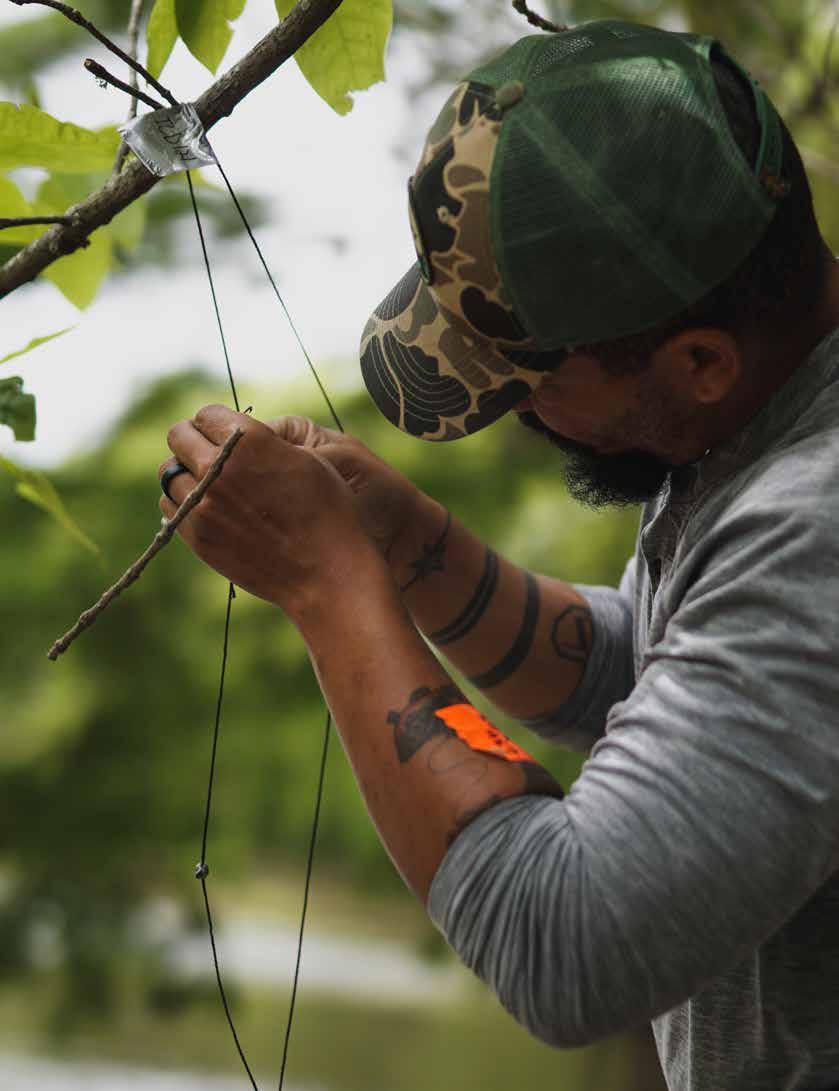
Paying attention to the ancient trees that form the edge of the channel, I look for branches that poke out over the water like the gnarled limbs and digits of a centenarian. They must be stout enough to serve as an achor, but flexible enough to also work as a rod. The springy, malleability of the branch will bear the weight of the fight that is too come.


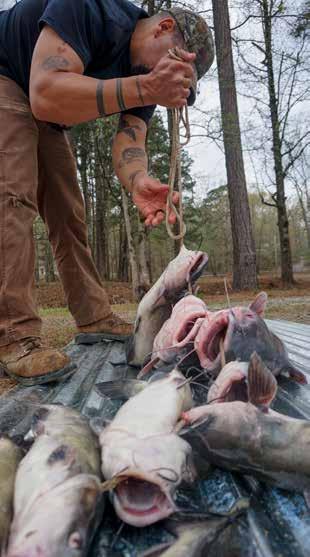
Dredged in cornmeal and bathed in hot grease isn’t just the fish’s culinary crescendo; it’s as American as public land. Like turkey or pumpkin pie, it’s a uniquely continental meal that ties us to generations past.
otherworldly, it’s absolutely of another locale. I’ve often thought the place is so wet, green, and full of life that seeing a troop of macaques swinging through the trees wouldn’t seem out of place.
The old outboard disturbs the peace for a moment as I rev it faster in order to slide over a log that has found its way into my path overnight. After that, I’m able to idle and let momentum and the channel do most of the work. As I approach the first line, I keep my eyes focused for indication of a catch. Suddenly, as the fish on the other end encounters the vibrations from the two-cycle, the water becomes a wild, frothing thing. The limb whips up and down, side to side, and the fish tries to make its escape. I’ll reach out for the branch with one hand and use my legs to steady the boat. Over the years, I’ve found intentional, smooth movements make all the difference at this stage. Sometimes with a net and just as often without, the fish lands in the boat with me wiping swamp water and spider webs off my face and out of my beard. A pair of well-used pliers with an honestly acquired patina makes quick work of removing the hook from the leathery corner of the fish’s mouth. This one is a beauty of a Blue and will end up being the first of a banner day with 20 lines set and 10 fish taken home.
Ferrying the creaking boat trailer down the narrow levee road,
I’m thinking about the best way to honor those noble beasts in the cooler. I’ve curried catfish, smoked them, and treated them like unagi, so I feel qualified to proclaim that versatile as they may be, for a catfish there is no higher form than fried. Dredged in cornmeal and bathed in hot grease isn’t just the fish’s culinary crescendo; it’s as American as public land. Like turkey or pumpkin pie, it’s a uniquely continental meal that ties us to generations past. A meal righteously representative of the place it was sourced. Growing up in Mississippi, Robert Johnson no doubt would have been intimately aware of the charms of the devilishly crispy delicacy. I’m sure there’s fried catfish in Heaven. But, for his sake, I hope they’ve also got hot grease and cornmeal in Hell.
BHA member Jonathan Wilkins is a Southeast-based generalist with a focus on making things and storytelling. He’s also the founder of Black Duck Revival, the brain trust for the multiple personalties of his hunting pursuits that began when he converted a small Delta church into a lodge. He writes, cooks wild things and changes diapers with his wife Marianne and their three children in Little Rock, Arkansas.

CORPORATE PARTNERS
ALASKA
Aziak Equipment
Denali Fly Fishing Guides
Double Shovel Cider Co.
FishHound Expeditions
Forbidden Peak Brewery
Mark Lindberg Photography
Midnight Sun Brewing Company
Squid Acres Kennel & Dogsled Tours
Valdez Brewing Company
Wild Rivers Coffee Co.
CALIFORNIA
Lobo Products Inc.
COLORADO
Budges Lodge I Bar Ranch
New West KnifeWorks
IDAHO
White Pine Outfitters
K
MICHIGAN
True North Trout

MONTANA
Adipose
NEW
NEVADA
Pure
NEW


BY JACOB GREENSLADE
If you woke up one dewy morning on Puget Island, you’d look out your window at the flat farmland, perhaps grab a cup of coffee, and sit down to watch the deer grazing near the cottonwoods. Their white tails and the single main beams of the buck convince you that you are further east, maybe on an idyllic farm in the Midwest. Scanning the horizon, you spot the looming Cascade Mountains, see glimpses of the sun rising over them through the early marine haze, and remember that your deciduous landscape is an island amidst the firs and cedars of the Pacific Northwest. Here, whitetailed deer are a rarity, a nearly lost relic of coastal wilderness. Less than a mile across the channel sits the tip of a refuge sharing the same niche habitat that is home to the Columbian white-tailed deer. Despite only recently escaping endangerment, the waters are rising on one of America’s most vulnerable deer.
I grew up in a land of coyotes, jackrabbits, and rattlesnakes. The scene was painted with apple orchards and vineyards, with the empty space filled in with sage and cheatgrass. There was an undeveloped field behind our house – I liked to spend whole days out there playing, with its residents of quail and pheasant wandering my family’s yard, strutting and pecking the grass. But one year that changed – someone bought the lot and turned the three-acre field into a lawn. No more was our yard pecked. I like to think it had an impact on me then, but it would be many more years until I finally realized the significance of habitat loss.
Years later, I spent some time hunting and exploring an oblong patch on the map labeled “DNR,” often becoming so tranquil within the peace of the behemoth conifers that I would forget about the tag in my pocket. Still hunting through the maze of understory allowed me to immerse myself in something beyond, to have a glimpse of what might be in these wild places.
Preparation for the next hunt didn’t come with time at the range or scouting, but rather plunging into a conservation crash course. I devoured every bit of media I could get my hands on. I had jumped on this train because of the desire to hunt but stayed on because I wanted to figure out how I could keep more quail and pheasant in the yard. Wanting more experience in the woods, I opened my map.
I scanned for something new, maybe BLM or a National Forest, but was drawn to something shaded a different color – it was a National Wildlife Refuge.
I dropped one kid off at preschool, and then with his younger brother in tow, I set out to explore. Within minutes of driving onto the Refuge, I spotted the unmistakable bright summer coat of a deer in the reed canary grass to my right. I see ropey black tails daily out my front window and have studied the “Shoot this deer, not this deer” pictures in the state’s big game handbook, so after reading about the Refuge, I knew the significance of what I was likely seeing. Almost forgetting to stop completely, I quickly and quietly snaked around the side of my pickup to hopefully take a picture of the doe. Too focused on what was in front of me, I had failed to see the queue of cars waiting to get by me on the single-lane road. I smiled, shrugged apologetically, and waved them by. As I turned back to the doe, my suspicions were confirmed with a white-tufted flag bounding out of sight.
Day hikers, anglers, and like-minded toddler-toting parents were parking just ahead. I made sure to chat with the driver of the lead car I had unknowingly stopped – the older couple was understanding of my tunnel vision and started on their walk. This is the beauty of public land – it is there for our communal benefit, whether we know the significance of its existence or not. We each enjoy it for our own unique reasons. Come back in a few months before the sun rises and you’ll spot hunters lurking into their duck blinds. A month later, a gaggle of binocular-wielding birders pining for duskies, cacklers, tundras, and maybe trumpeters. While Refuges across the country benefit countless species and offer many recreational opportunities, this one is unique. It is one of few designed with a specific species in mind – it is the Julia Butler Hansen (JBH) Refuge for the Columbian White-Tailed Deer.
Timber and prospects of new life in the West brought a surge of development to the lower Columbia River at the turn of the 20th century, with a timber rush that would sweep across much of Southwest Washington. Levees were erected, wetlands were drained, and industrial towns were assembled. Rails and teams of horses carried the colossal limbless bodies of giants to the many mills that now pock-marked the region. Timber was no different
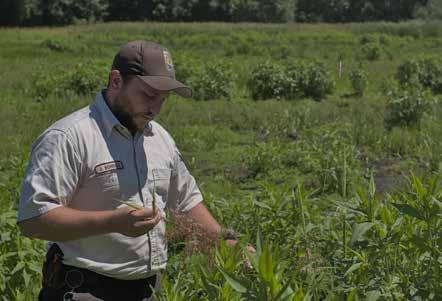
from any other industry of the time – America was still expanding west, many years amidst World War, and it needed resources to do so. In the wake of development, however, came the loss of critical habitat. Taking notice, USFWS biologist J. Burton Lauckhart raised a red flag.
When Lauckhart wrote a report in 1940 proposing land acquisitions to correct what western expansion had done to Columbian white-tailed (CWT) deer populations, he was unknowingly lighting a very long fuse. It wouldn’t be until 1966 that further action would be taken when President Johnson signed the Endangered Species Preservation Act, the precursor to the Endangered Species Act. In 1967, an estimated 450 CWT deer resided in only 2,000 acres of quality habitat, and the deer was subsequently listed as endangered in 1970. One year later, a parcel of land along the Columbia River was purchased and named the “Columbian White-Tailed Deer National Wildlife Refuge.” As time passed, the Refuge accumulated a combined stature of over 6,000 acres and in 1988 was renamed to Julia Butler Hansen Refuge for the Columbian White-Tailed Deer – honoring an influential local legislator. Today, JBH is one of many Refuges in the region and serves as the tip of the spear for CWT deer recovery in Washington.
CWT deer exist within two population groups, one in Washington named the Columbia River population, and the other in Oregon named the Roseburg population. By the numbers, the Roseburg population has thrived with a contiguous 300 square miles of habitat – achieving a population of over 6,400 deer by 2005. That year, the pursuit of CWT deer was legalized in Oregon. Just north in Washington, the population was a scant 545 in 2002. The reason for this disparity becomes clear when you survey their 90 square miles of suitable habitat - it is fragmented by major waterways, towns, and highways.
The CWT deer, like many ungulates, thrives on a patchwork landscape that offers a diverse range of forage and cover. In the temperate rainforest-dominated region of western Washington, this type of habitat is nearly exclusive to the riparian areas of the lower Columbia River. Carefully monitoring JBH and its residents, Assistant Refuge Manager Jake Bonello is aware of the CWT deer’s limitations. “The best habitat for CWT deer in Washington is also the land that humans want the most – waterfront.” Despite successful conservation efforts leading to the Columbia River population

downlisting to threatened in 2016, and with a population reaching nearly 1,300 in 2022, challenges await.
Today, much of JBH is protected by levees not unlike those erected more than 100 years ago, but recent history has proven that they are not perfect. “Overtopping (of the levees) has occurred the last three winters,” Bonello recounts. Other issues stem from erosion, “The US Army Corps of Engineers finished the construction of [an additional] levee in 2015 to protect the Refuge from a potential levee breach in an area along the shipping channel.” It’s no surprise that when asked about the greatest challenge that the CWT deer faces in Washington, Bonello is quick to answer: “Climate change.”
“There will always be a need to protect their habitat,” Bonello solemnly states. Monitoring the high-water mark and managing interior water levels via tide gates have become regular tasks for JBH staff. In 2013, armed with helicopters and nets, the USFWS captured and relocated nearly 50 deer to a neighboring Refuge when their habitat was at risk of flooding. Pressed between a rising waterway and steep coniferous hills, the forward path for both the CWT deer and the Refuge is problematic. So, what comes next? How do we navigate protecting the CWT deer when its existence is forced between a river and a hard place? Without imposing or speculating on the USFWS’s current plans, Bonello provides that “the staff is preparing for the future by exploring new creative ways to protect land for CWT deer across a landscape with a changing climate.” But as many conservationists know, popular support and action will be paramount. To help JBH and refuges like it, Bonello’s suggestion is simple, “Visit them.”
At Julia Butler Hansen Refuge for the Columbian White-Tailed Deer, the sight of a fawn in the early summer is uniquely blissful. It doesn’t know of its significance, but to us its addition to the population is noteworthy. It enters each day with a purpose to thrive, it adapts, and it doesn’t stop fighting – it is a symbol of the future.
Jacob Greenslade volunteers as BHA’s Washington Armed Forces Initiative Media Board Member. He’s a Marine Corps veteran, and a conservation storyteller. He, his wife, and his two sons live in southwestern Washington where there is ample opportunity to enjoy nature.



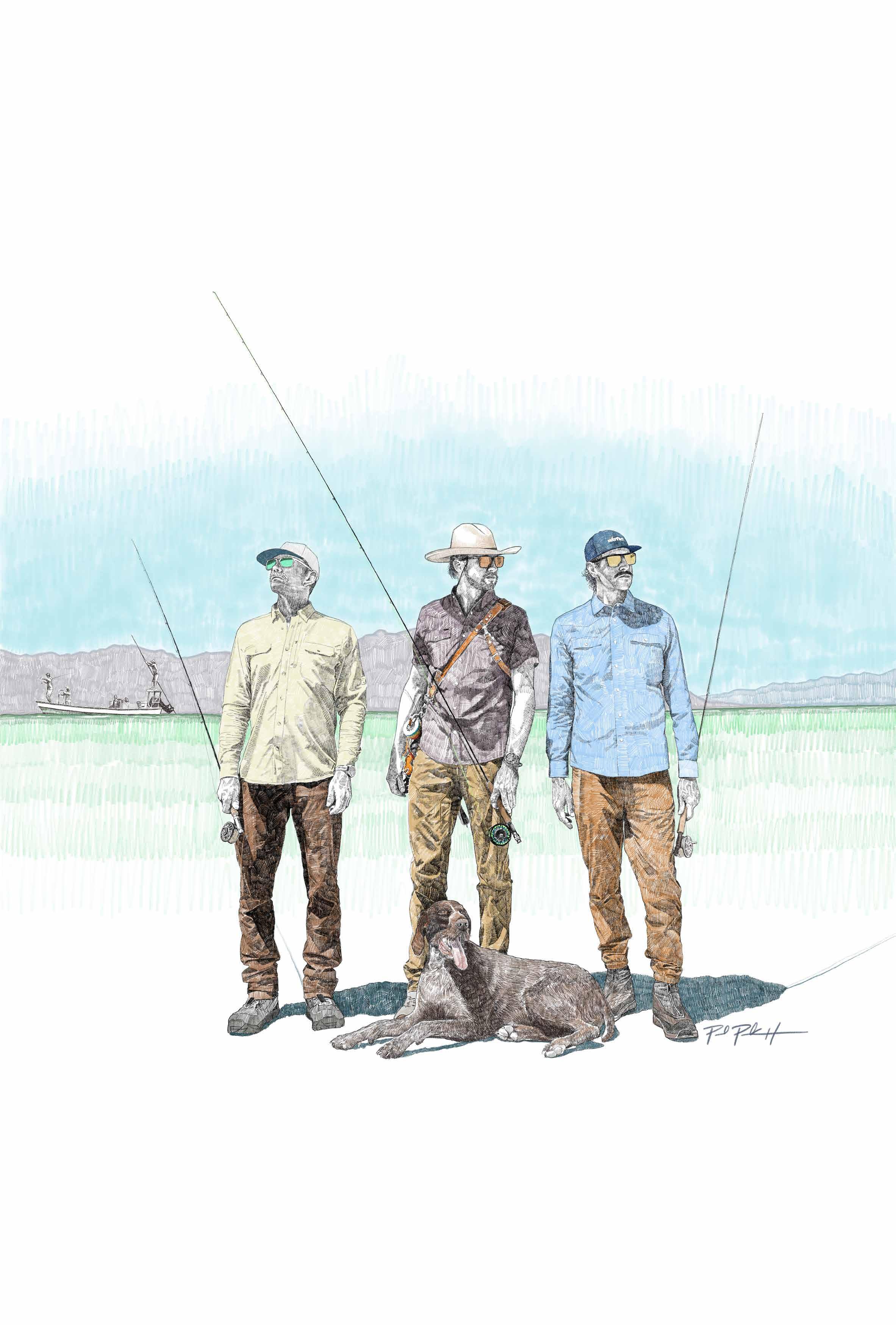











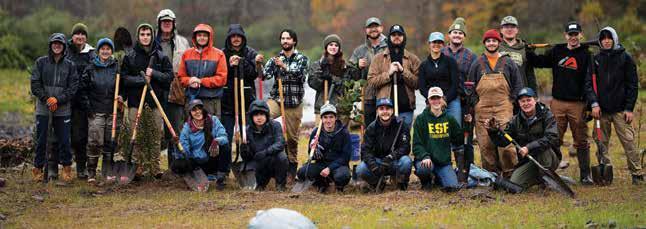
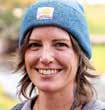

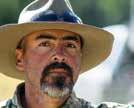
Please support Trout Unlimited and make a positive difference for our shared rivers.
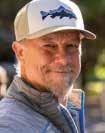


BY FRANK DeSANTIS JR.
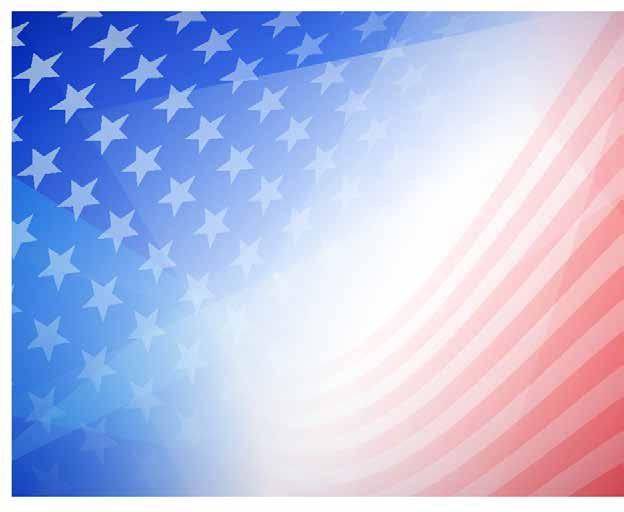
There are few ideas more quintessentially American than the promise of open space—land unpaved, unclaimed, and untouched, not by accident, but by intention. From the wide sweep of the Great Plains to the dense shadow of Adirondack hardwoods, public lands are the living canvas of our national story. They are where we go to lose ourselves and, paradoxically, to remember who we are. But in recent years, a subtle shift has emerged. Public lands, once spoken of with reverence, are increasingly framed as “underutilized,” “unproductive,” or “ripe for development.” Legislators propose bills to offload public holdings under the guise of solving housing crises or spurring economic growth. Industry advocates speak of timber harvests and oil leases as if the value of land can only be measured in board feet or barrels.
If this rhetoric hardens into policy, we won’t just lose acres— we’ll lose an inheritance. Because these lands are more than just soil and trees. They’re democratic spaces. They’re essential to the American identity. And they are, perhaps more than any institution, a mirror of the American psyche.
In the younger days of the nation, they represented a frontier— not just of geography, but of spirit. To head west was to test oneself against the vastness of the continent, to confront wildness and return shaped by it. This wasn’t just individual ambition—it was national identity in motion. As cities swelled and industry rose, voices like John Muir’s called for restraint, reminding us that not everything should be tamed. President Theodore Roosevelt, a man as enamored with conquest as conservation, understood that a democratic republic needed wilderness just as much as it needed railroads. He recognized that setting aside land for the people— forever—was as patriotic an act as writing a constitution. It was a declaration that some parts of this country were too essential to belong to anyone in particular because they belonged to everyone.
This wasn’t just about preserving scenery. It was about preserving something in us. Public lands became part of the cultural fabric— integral to our folklore, our holidays, our school trips, and family traditions. They offered a sense of scale in a world increasingly

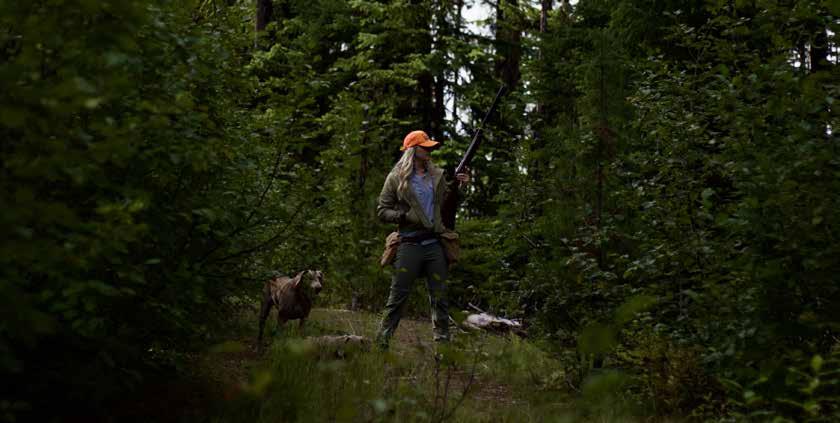
defined by speed, ownership, and control. To step into a national forest is to remember that we are not above nature, but within it. It is to stand on the same trails walked by ancestors and strangers alike and feel a sense of continuity and community that resists commodification.
Amid the constant noise of modern life, public lands also offer something increasingly rare: silence. Not the absence of sound, but the presence of stillness—of unstructured time, of space not shaped by productivity. In these wild places, the mind slows, the senses wake, and the nervous system exhales. Whether it’s the hush of a spruce forest after snowfall or the sweep of a canyon rim at dusk, these landscapes allow room for reflection and remind us of our scale.
There is a reason that soldiers returning from war are guided into wilderness therapy programs. There is a reason why stressed parents load children into cars and drive for hours just to spend a weekend camping. There is a reason why, in times of personal grief, people hike. Public lands serve a quiet but essential role in this country as spaces of personal and collective healing. And more than that, they are places of memory-making and meaningmaking. They become the backdrop of our most formative moments. A father teaching a daughter to fish. A couple backpacking in the early days of their love. A grandson’s last hunt with his grandfather. A solo traveler realizing for the first time they are enough.
For many Americans—especially hunters—public lands are also a source of food. This isn’t a fringe or nostalgic practice; it’s a living tradition that connects people to the land in the most intimate way possible. Wild game harvested ethically on public land is more than a meal—it’s a relationship. It’s time spent learning the terrain, understanding animal behavior, and participating in the ecosystem as a predator, not just a passerby. In an age of industrial food systems and ecological disconnection, wild meat represents nourishment that is local, honest, and earned. Yet this aspect of public lands is often overlooked in policy debates—as if food that doesn’t pass through a supermarket holds no value. But to those who hunt for their families, who fill freezers with venison and share elk roasts with neighbors, it is both sustenance and legacy.
When the only question we ask of public lands is “what can they do for us economically,” we stop asking what they do for us spiritually, socially, and existentially. We begin to forget that value and utility are not always the same.
These lands level us. They belong to everyone and to no one. You do not need to own property to feel rooted here. You do not need wealth to feel wonder. In this way, public lands are not just recreational—they are democratic. They care not about means or status. They are one of the few remaining places where Americans of all stripes—rich, poor, rural, urban—share space with no transaction beyond the one made with the land itself: presence, respect, awe. In an age of screens and speed, where even our mental health is often medicalized or monetized, public lands remain a rare public good that speaks to the spirit of the nation.
A concerning language has crept into public discourse that reframes public lands not as shared inheritance, but as a missed or squandered opportunity. Words like “unrealized economic benefit,” “non-performing,” and “developable” turn ecosystems into spreadsheets. This rhetoric doesn’t merely describe the land— it diminishes it. It strips wild places of their inherent value and reduces them to markets.
Legislative proposals like the HOUSES Act offer to sell off public lands to local governments at below-market rates for housing development. At first glance, such policies may appear practical—after all, the housing crisis is real. But beneath the surface lies a deeper shift: a redefinition of value. It suggests that unless land can be mined, drilled, developed, or taxed, it isn’t pulling its weight. It ignores the quiet dividends of forests and deserts and mountains—the psychological health, cultural continuity, and civic trust they foster.
Even more troubling is the growing alignment between this economic language and political ideology. When the government’s “ownership” of land is painted as overreach, when land protections are labeled “bureaucratic red tape,” it opens the door to private acquisition—not for the public good, but for profit. It’s a familiar story in a country with a long history of enclosure and extraction. What’s different now is how subtle the pitch has become and how distracted we now are.
What’s lost in these conversations is the land’s voice—and our own. When the only question we ask of public lands is “what can they do for us economically,” we stop asking what they do for us spiritually, socially, and existentially. We begin to forget that value and utility are not always the same.
Divesting public lands will not just change our map. It will change our collective minds. It will sever a relationship with place that has helped define the American character for generations. If this shift toward privatization continues, the cost won’t simply be measured in lost acres or shuttered trailheads. It will be measured in something harder to quantify: the erosion of a national ethos. As public lands represent one of the few remaining spaces where American ideals—freedom, equality, self-reliance, and community—are still practiced, not just preached. When we lose access to these places, or when they are carved up and fenced off, we lose more than scenery. We lose the ability to encounter ourselves outside the constructs of commerce and control.
The stakes are generational. A child born into an America where wild lands are mostly private will grow up with a different
understanding of belonging. They may learn that land is something to buy, not something to care for. They may learn that nature is a product, not a relationship. And they may never know the quiet calm that comes from standing in a place where no one is trying to sell you anything or vie for your attention.
Meanwhile, those who stand to benefit from privatization are few, and their gain is immediate: development rights, mineral leases, speculative land value. But the loss is collective and longterm—less space for wildlife, for clean air and water, for the deep, grounding sense that there is still some part of the country not owned by anyone, and thus, open to all.
In the end, this is not just a fight over land—it’s a fight over meaning. What kind of country do we want to be? One defined by private interest, or by shared inheritance? One in which land is leveraged, or one in which it is cherished?
Public lands are more than geographic spaces—they are moral spaces. They remind us that not everything in America has to be owned to be valuable, or sold to be significant. They are places where freedom doesn’t need a gate code and wonder doesn’t carry a price tag. To privatize these lands—even incrementally—is to forget a part of ourselves. It’s to trade something enduring for something expedient. Once transferred, these places don’t come back. Once developed, they don’t return to wildness. And once we stop seeing them as ours—as everyone’s—we begin to forget that democracy isn’t just a system, but a social landscape.
Perhaps it’s time we move beyond the language of stewardship, which too often implies management or utility, and embrace the deeper ethic of guardianship. Guardianship speaks not of control, but of care. Just as we are guardians of our children. It asks not what the land can do for us, but what our responsibility is to the land. It recognizes public lands as living, breathing parts of the American story—integral not just to our environment, but to our national character, to the American identity. They are where we go to find perspective, to reconnect with something larger, and to remember that freedom includes the right to roam, to reflect, and to belong. They embody the best of who we are—a nation shaped by space, by resilience, and by shared responsibility.
The soul of a nation is not always found in its laws or its leaders, but in its quiet places—in its rivers, its forests, its high plains, and deep canyons. In the land that asks nothing of us except that we care enough to keep it wild by keeping it public.
Let that be the inheritance we vigorously protect—not just as stewards, but as guardians.
Frank DeSantis Jr. is an environmental scientist and lifelong outdoorsman from Upstate New York where he formally served on the Board of the New York Chapter. You can find him on Instagram @adk_frank or through his Substack, Blue Line and Beyond where he explores what it means to pursue wildness as an Adirondack deer hunter.

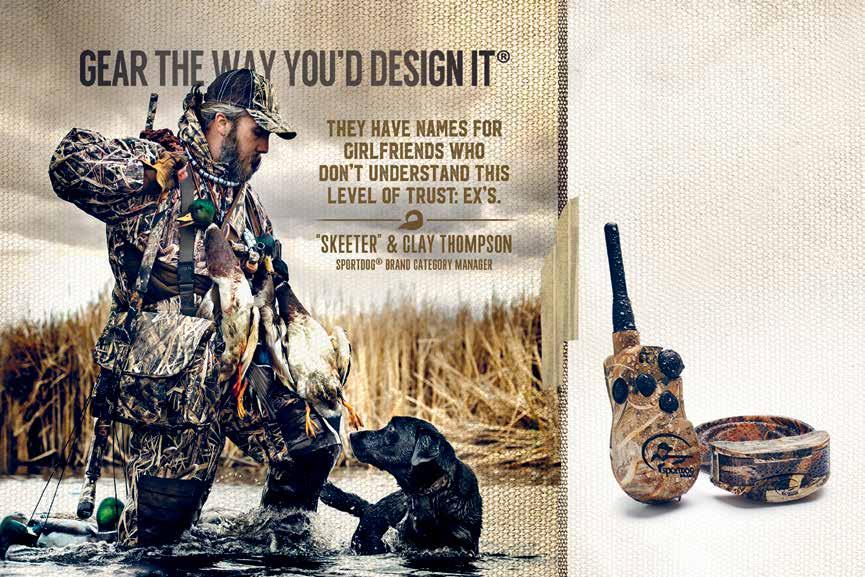


BY WENDI RANK
Some of you have been to our cabin.
So now I call it “BHA East.”
Because, really. We should have done this years ago. It’s brilliant. You guys going to the cabin in my stead. Why did we never think of this?
I realize it was not your intent to be there so I could stay home. I know it was—what? A flintlock hunt?
I should probably be certain that’s what it was.
But I’m not even sure which Field to Table had the bone marrow cheesecake.
I do know I’d like to eat that cheesecake daily, with Hank Shaw’s Son of a Bitch Stew on the side.
Wait, am I allowed to curse here?
Maybe cursing is reserved for Field to Table because it’s in the middle of nowhere.
So’s the cabin.
We should send you to the cabin as much as we can. I’ll stay home with, like, brownies and a horror movie.
Which reminds me. I watched the horror movie “Wolf Man.”
Do you know what happened?
Because of all the time I spend with you guys, I know the hunting in the opening scene of that movie is terribly wrong.
I almost turned it off.
Not cool, guys.
Sure. I complain about the portable toilets and snakes in hotel boardrooms and, well, everything. But I don’t deserve the ruination of horror movies because I’ve accidentally picked up some hunting knowledge.
Anyway.
I hear some of you stayed at my father-in-law’s cabin, about twenty feet up—
Wait. It’s not a road, that rocky path between our cabin and my father-in-law’s cabin. It’s more like forest floor paved with stones so you think it’s a road.
It’s not a road.
Don’t be fooled.
If anyone not you or us drives up that road, they’re there to kill you with axes or rocks or things the police will describe as having
bludgeoned you.
I’m not kidding. Someone comes up that road, run. Who’s going to ruin my horror movies if you’re brained on our cabin floor?
My father-in-law’s cabin, to my understanding, is now called The Executive Suite, largely due to its pristine, homey milieu— compared, I’m guessing, to what we in my house call “The Old Cabin.”
That is, our cabin, the one twenty feet down that non-road used only by us and axe murderers.
I have two things to say.
One, have you never stayed in a hotel? In a real executive suite? You know real executive suites have, like roads and civilization and fast food nearby, right?
Two, I am not responsible for The Old Cabin.
Don’t get me wrong—I love a toilet plunger with a rifle butt as a handle as much as the next girl. That cabin has a legacy I am here to pass on to my kids.
Translation? I don’t sweep away the spider webs, clear the mouse traps, or wash the linens.
Which brings me back to my original point.
I saw the picture of you at the cabin. That was quite the gathering.
So how about this - when my family goes to the cabin, each of you, on a rotating basis, can go instead of me.
I feel like you won’t mind shampooing your hair with stream water on the porch so the iron in the well water doesn’t turn your blonde locks orange.
I feel like you won’t mind hikes with our dog, where the only way down the trail is past a black snake the length of your leg.
I feel like you won’t mind the spiders and weird squiggly bugs in the shower.
So—we’re cool, right? You be me up at the cabin. I’ll be me ten minutes outside the soothing concrete jungle of Philadelphia. We’ll all go home happy.
I’ll even let you ruin a horror movie.
BHA life member Wendi Rank is an indoors enthusiast from Pennsylvania. Wendi works as a columnist for American Community Journals.



BY THOMAS BAUMEISTER
Hunting wild animals has always been an interplay of skill, strategy, and effort. Increasingly in recent times, this balance has been altered by the prevalence of long-range shooting. My own experience elk hunting in Montana highlights this tension. One day, I encountered a deer hunter who showed me a photo of an impressive bull elk he had spotted in the area. The following morning, I located that same elk a mile away through my spotting scope as it bedded down. Later that evening, I found the bull again, now 600 yards away. Instead of attempting a long-range shot, I opted to stalk closer. With careful steps and heightened awareness, I closed the distance to 200 yards and took the elk with a single, well-placed shot. When I later recounted the hunt to the deer hunter who had provided the initial tip, he seemed puzzled. “Why didn’t you just shoot it from 600 yards?” he asked. The answer, I’ve come to realize, is not straightforward.
Consider the difference between archery and rifle hunting for elk. Archery hunting is widely regarded as more challenging precisely because the hunter must close the distance to within 50 yards or less. At such close range, an elk’s senses are exceptionally difficult to deceive. Similarly, executing a precise, lethal shot with archery equipment, held only by hand, is significantly more difficult than making the same shot with a rifle resting on a bipod. It is this added challenge of closing the distance that enhances the allure and richness of executing a difficult stalk. Most anyone can hike through beautiful landscapes hoping to encounter an elk at random; the skill of stalking close to an elk with intention is what distinguishes hunting from wildlife watching.
Returning to the question of the long shot, my primary reason for not taking it was, admittedly, a lack of confidence. I have not trained sufficiently in long-range shooting to ensure a clean and ethical kill at that distance. Therefore, I simply do not take such shots. However, a deeper reason lies in my personal value of the hunt. For me, closing the distance is the most rewarding part of the experience. Carefully placing each step, checking the wind, monitoring the elk’s movement, and moving with heightened senses are the very experiences I seek and which give me the most challenge and satisfaction. It would have been a shame to deprive myself of the best part of the hunting experience by taking a long shot. It’s akin to taking a shortcut to the finish line, bypassing the most meaningful part of trying my best.
The essential components of a good hunt can be summarized as follows: first, the skills of locating and approaching an animal in its natural setting, embracing the inefficiency and uncertainty of the chase; and second, the skills of positioning and executing a lethal shot, mastering the efficiency and certainty of the kill. Both require practice and dedication to achieve proficiency and excellence, but they serve categorically different ends. The chase is meant to be exciting and enjoyable, calling upon relevant skills that bring a profound sense of accomplishment—it’s about the thrill of the chase

intentionally made more difficult than necessary. Conversely, the kill is meant to be surgical and definitive, as inflicting pain and suffering upon an animal is never the ethical hunter’s aim. Hence, it’s about precision and marksmanship—it’s about the welfare of the animal intentionally made no more difficult than necessary.
However, today’s hunting culture increasingly emphasizes marksmanship (the efficiency of the kill), often at extended distances. This trend is understandable, given the constraints of modern life. Marksmanship can be honed through refining handloads, making quick trips to the shooting range, and purchasing technologically advanced firearms, scopes, and rangefinders. In contrast, mastering the art of the chase, specifically elk stalking, is far more difficult and time-consuming, requiring repeated encounters with elk in diverse and challenging settings.
By prioritizing long-range marksmanship, we risk losing the very skills that define the essence of the hunt as a process, not just an outcome. An animal’s primary survival defenses—sight, hearing, and smell—are what make stalking and approaching it so difficult and engaging. Yet, at extreme distances, these senses are effectively neutralized, and hunting becomes synonymous with killing. Therefore, we must ask: Are we witnessing the gradual elimination of the process that makes the chase a skillful, immersive, and active engagement with an animal’s abilities to evade predators, abilities honed over millennia of evolution? And if an animal’s senses and instincts are rendered defenseless against the technology and weaponry pitted against them, is a critical aspect of what it means to hunt irretrievably lost?
Becoming a better hunter is a worthy goal, and upholding marksmanship is certainly part of that. However, taken to extremes, an overemphasis on long-range shooting can diminish the rich experience of the hunt’s chase. Long-range shooting poses a fundamental challenge to the modern hunter: When a hunter shoots an elk at a distance that effectively eliminates its ability to sense the hunter’s presence or utilize its evolved defenses, is that person a good hunter in the sense of being excellent at hunting elk, or just at shooting them? Can we truly say that such a hunt was conducted according to the principles of fair chase? It’s more than just a matter of animal welfare, although that is important; it’s the very essence of modern hunting that hangs in the balance.
Thomas Baumeister is a BHA life member, the vice chair of BHA’s Montana chapter, and board chair of Orion – The Hunter’s Institute.






BY MICAH FIELDS
Whitefish (Prosopium williamsoni) often gets a bad rap among Western anglers, but the native salmonid deserves our respect as both worthy quarry and delicious table fare. Related species dominate deli cases in Manhattan and potlucks throughout the Midwest, and the Mountain Whitefish—with its wide distribution throughout the Pacific Northwest—should be no exception. Their mild, firm flesh is ideal for smoking and incorporation in salads and spreads, and this recipe highlights the simplicity of smoked fish in a play on the classic tuna melt. Enjoy!
INGREDIENTS:
Brine:
¼ cup salt
¼ cup sugar
½ gallon water
Whitefish Melt:
1 10–18-inch Mountain Whitefish, cleaned and descaled
1 fresh sourdough loaf, sliced
1 tablespoon mayonnaise
¼ red onion, sliced
2 tablespoons capers
Hot sauce to taste
¼ cup sharp cheddar cheese, shredded
Step One: Catch a Whitefish
Whitefish are best targeted with a fly rod and subsurface nymph patterns. Using a strike indicator and tapered leader, fish a weighted nymph (a size 14 hare’s ear or pheasant tail is all you need) near the bottom of fishy-looking runs, riffles, and pools. Once you’ve caught one, target that water speed and depth and you’re sure to hook more.
Combine your brine ingredients, making sure all sugar and salt are dissolved. Add your fish and let it sit submerged in the brine overnight in the refrigerator. After brining, remove the fish and pat dry. Leave the fish on a drying rack in the refrigerator for at least an hour, then preheat your smoker to 200 degrees. Hang your fish or place it on the rack in your smoker and leave for at least two hours. When the fish’s skin can be peeled back easily and the flesh is white and flaky, it’s done. Remove the fish, let it cool, and gently pick the flesh from the bone in chunks. Reserve for future use.
Step Three: Prepare Your Melt
Preheat your oven’s broiler to high. Spread a layer of mayo on a slice of sourdough bread, then top with a generous helping of smoked fish. Assemble capers and red onion on top of the fish, then top with shredded cheese. Place the assembly in a cast iron skillet and put the skillet under the broiler until the cheese is melted and browning. Finally, remove the skillet, plate the melt, and top with hot sauce to taste. Enjoy!
Micah Fields is a writer and fly fishing guide based in Helena, Montana. He serves as the stewardship leader for the Montana chapter of BHA.

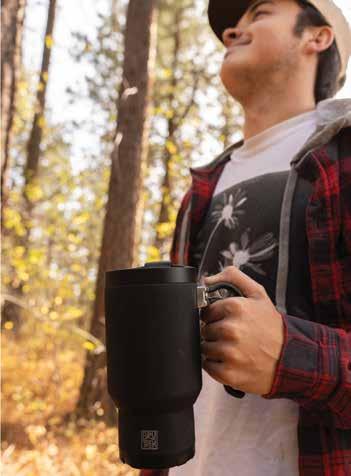
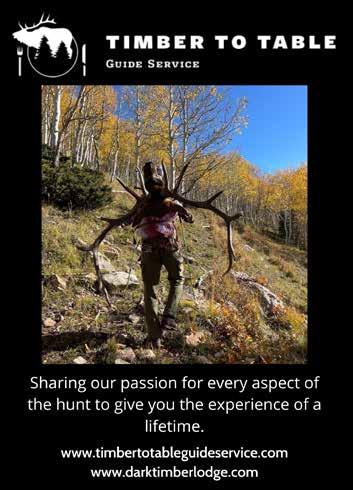

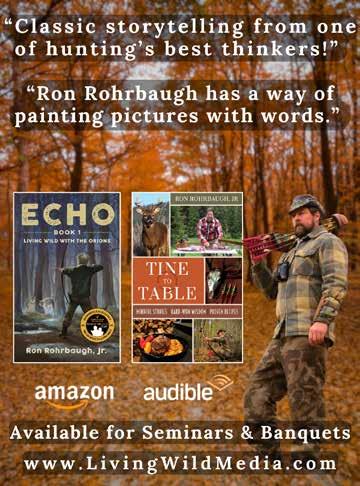

BY BEN LONG
This last hunting season, I got an assist from the ghost of Theodore Roosevelt.
It was one of the most exciting days of my life—a long stalk on a dandy mule deer buck, interrupted by a 45-minute stare-down with a pumpkin-headed mountain lion. The drama took place on the flank of a mountain that President Theodore Roosevelt conserved as part of the Kootenai National Forest back in 1906.
Over 30 years, my friends and I have taken more than a dozen elk, mulies, and whitetail deer off that mountain. The Kootenai is just one small piece of a national heritage of public lands—640 million acres in all—comprised of national forests, BLM lands, national parks, and wildlife refuges and more from Alaska to Florida.
When it was time to pack out this year’s buck, I called up three friends, and we made light work of it. United.
Ever since the glaciers melted, the mule deer of northwestern Montana have been breeding in the fall and giving birth to fawns in the spring. And ever since the formation of the Kootenai National Forest, politicians and special interests have been cooking up ways to convert our public estate to private wealth and privilege. A united front of hunters and anglers has always pushed back.
Those voices are particularly loud today. The news columns and social media feeds provide a daily blizzard of news about public lands and public land stewardship. Budgets are being slashed. Personnel are getting fired. Lands that are owned by all of us are being lined up for liquidation, acre by acre—most recently by politicians sneaking late-night provisions into the budget bill, clearing the way for the sale of public lands across the West.
TR was no stranger to sneaky politics. After he left office, Roosevelt went on a safari to Africa, only to learn his successor was already plotting to undo his conservation legacy. Sportsmen, scientists, and conservationists stopped those attempts. United.
One thing is clear: If we do nothing, the forces that are hostile to public lands, waters, and wildlife will take whatever they want. The only way we can expect better stewardship of our public estate is by saying exactly what we want and pressing our elected officials to deliver.
Like packing a bull elk out of some nasty alder-choked hell hole, the job of defending public lands is overwhelming for any one individual. It requires teamwork. It requires that we provide a united front. It doesn’t matter if we’re talking about the Brooks Range wilderness of the Alaska Far North, my little honey hole in Montana, or wetland wildlife refuges along the Central or Eastern Flyway. They belong to all of us and require something of all of us.
As a veteran of these debates, I can attest that winning conservation battles is deeply rewarding. That mountain in the
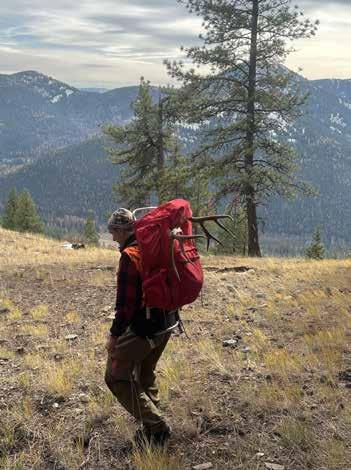
Kootenai National Forest was set aside in 1906, but that didn’t end the work. When I first discovered my honey hole 30 years ago, I got involved in a successful land swap that consolidated checkerboard land in that drainage. That deal prevented habitat fragmentation and guaranteed access.
Since then, conservationists have supported efforts to control weeds, clear trails, and reintroduce prescribed fire on that piece of habitat. More recently, BHA has supported efforts by the Montana Department of Fish, Wildlife & Parks to ink conservation easements with the local timber company, guaranteeing public access and stewardship of surrounding private timber lands while preventing the lands from being broken up and developed.
TR would be proud.
BHA has developed an apt campaign for our times: United We Stand for Public Lands. The future of America’s outdoor heritage is being set today. There’s only one way to make sure we keep what makes America great: being united.
Ben Long was an original member of the BHA North American board and a life member. He served as secretary, vice chairman, and cochairman of the board and was the first chair of the Montana chapter. He was the founding editor of Backcountry Journal and BHA’s first T-shirt model (those shirts sold poorly, however, and he was quickly replaced).
